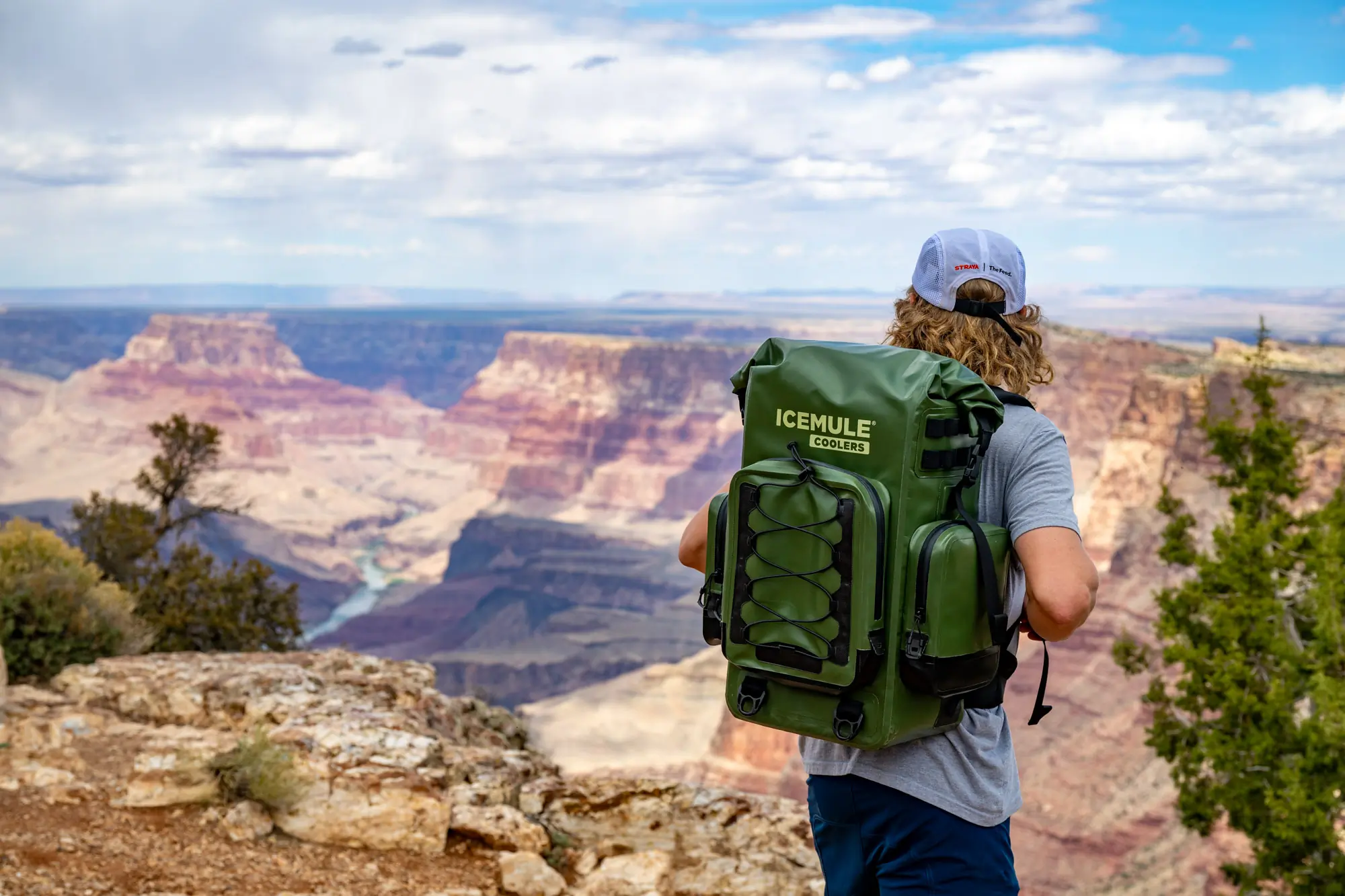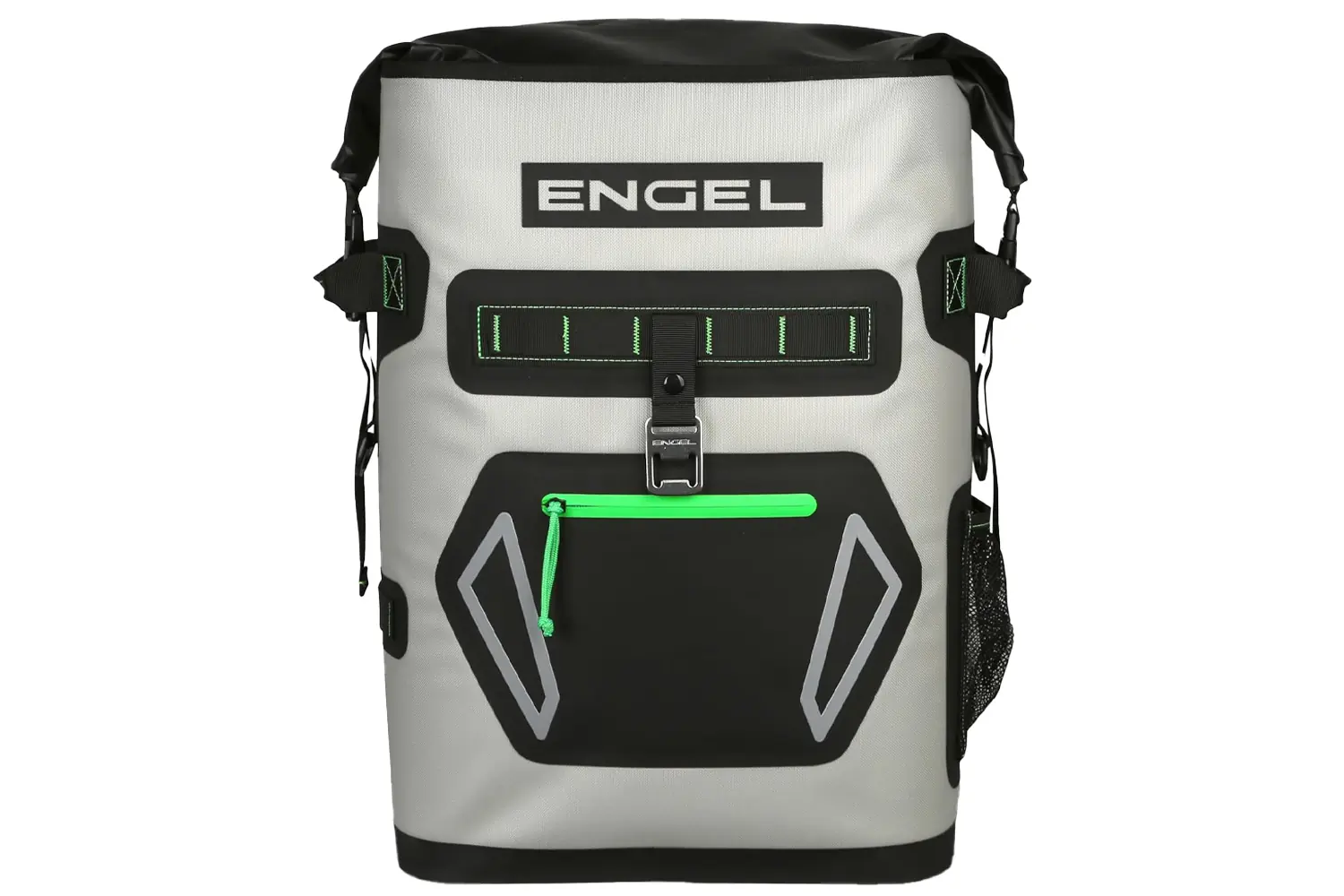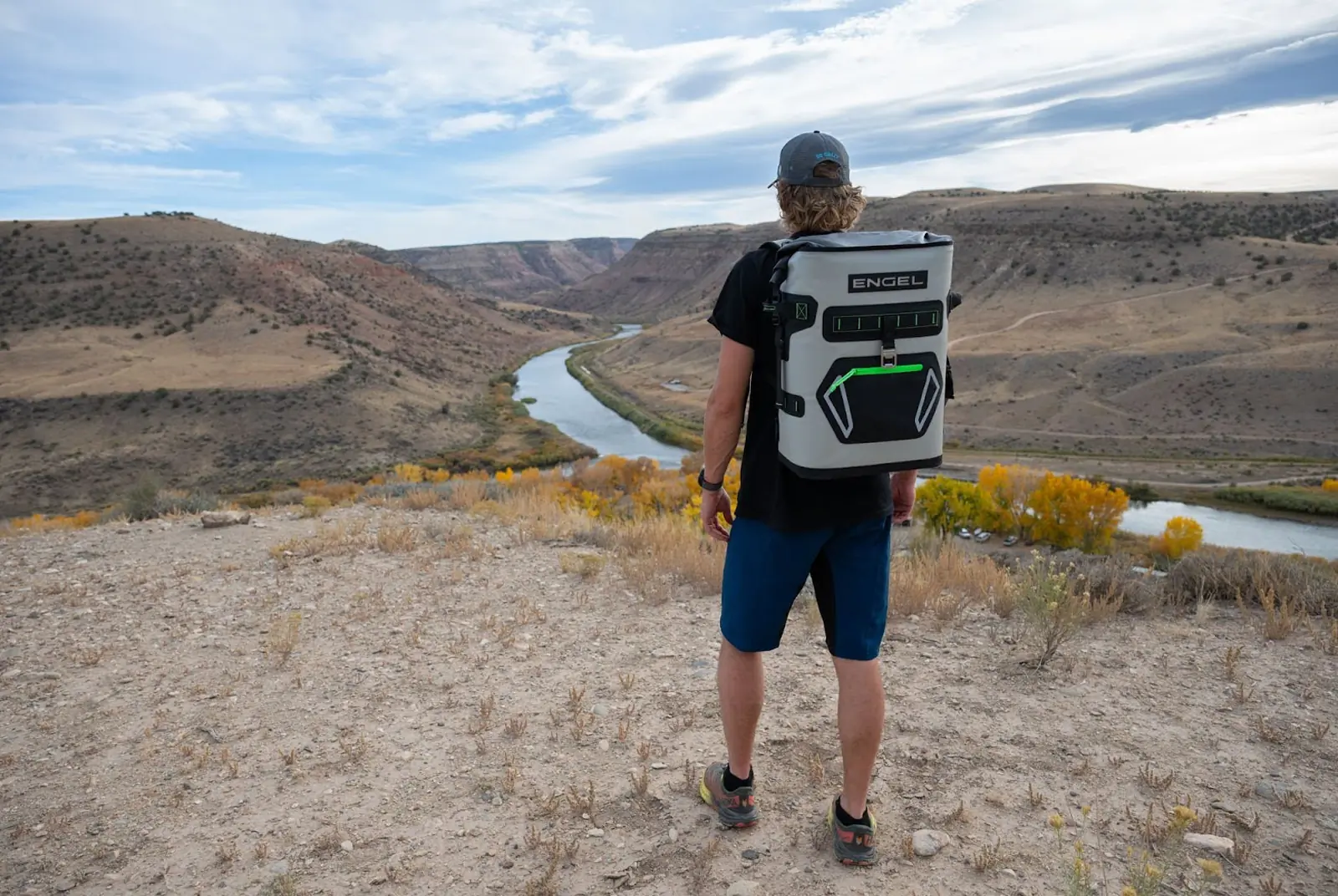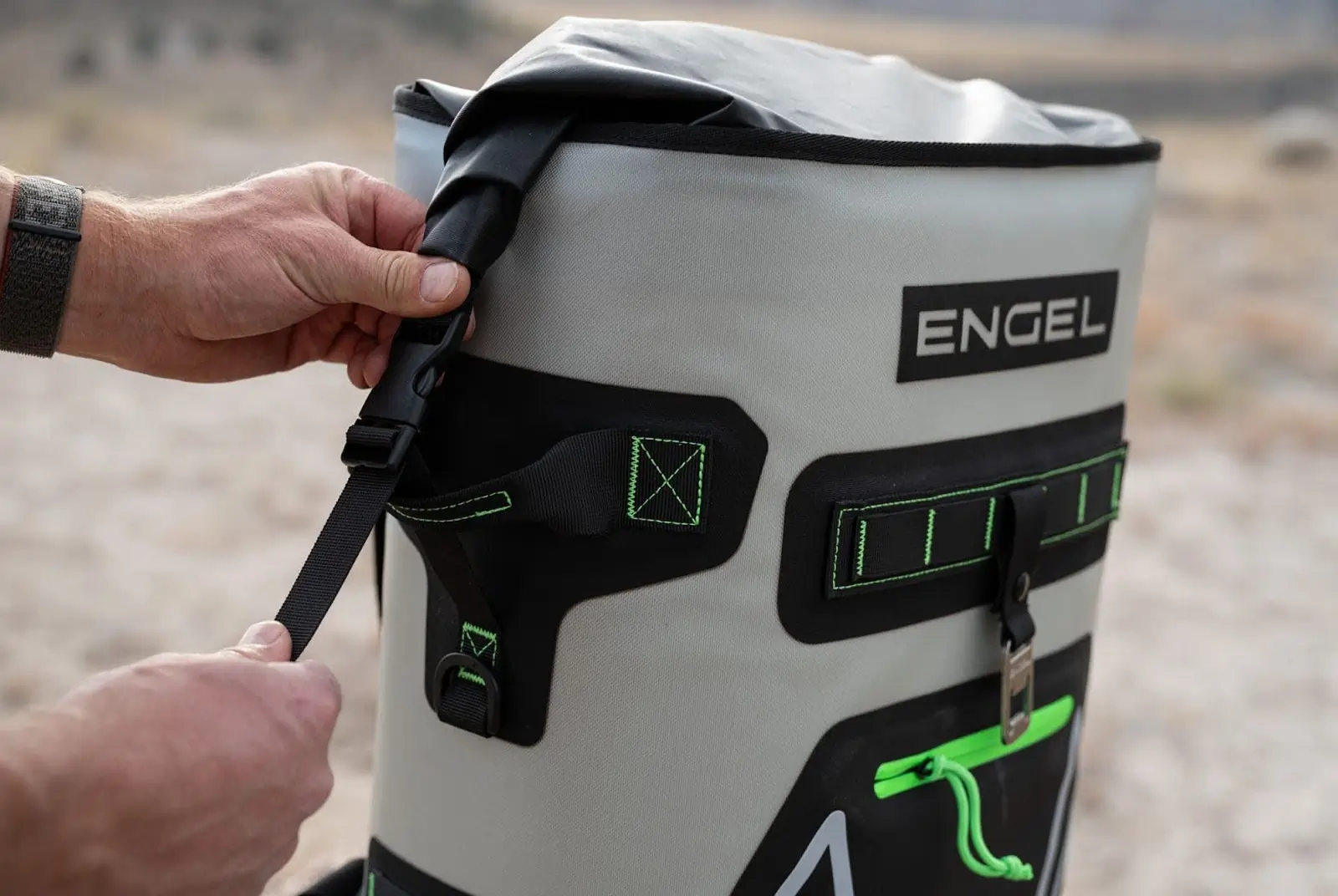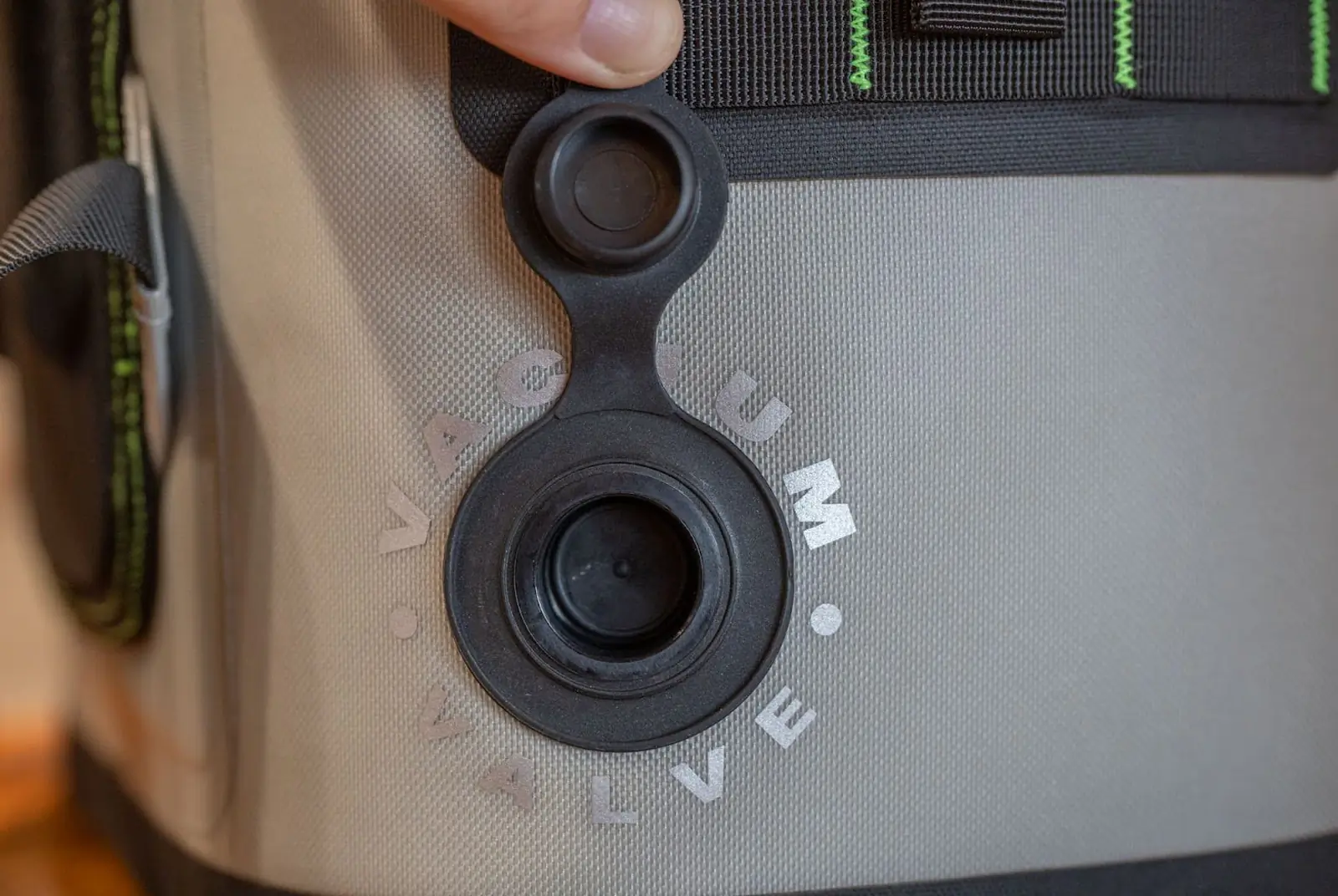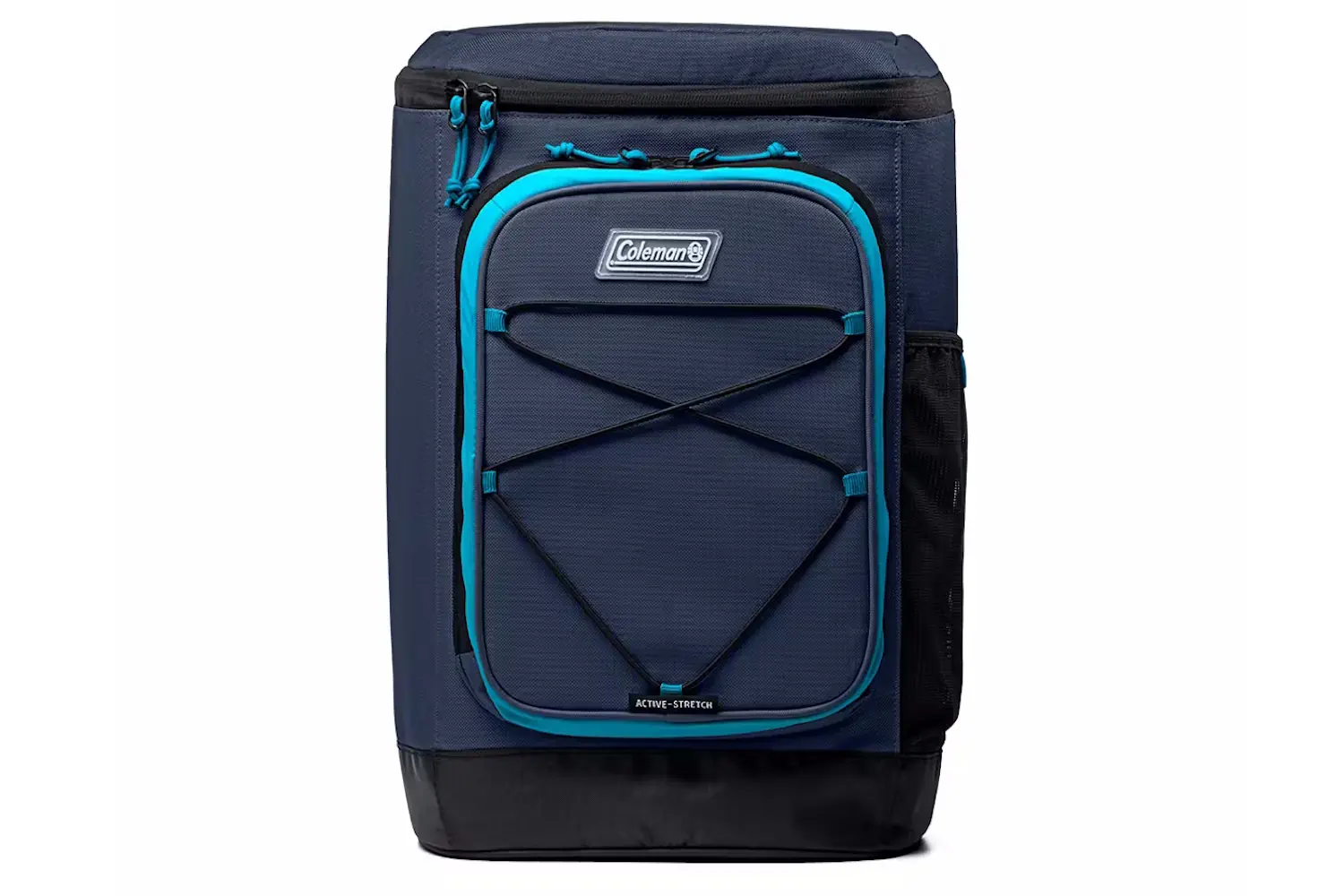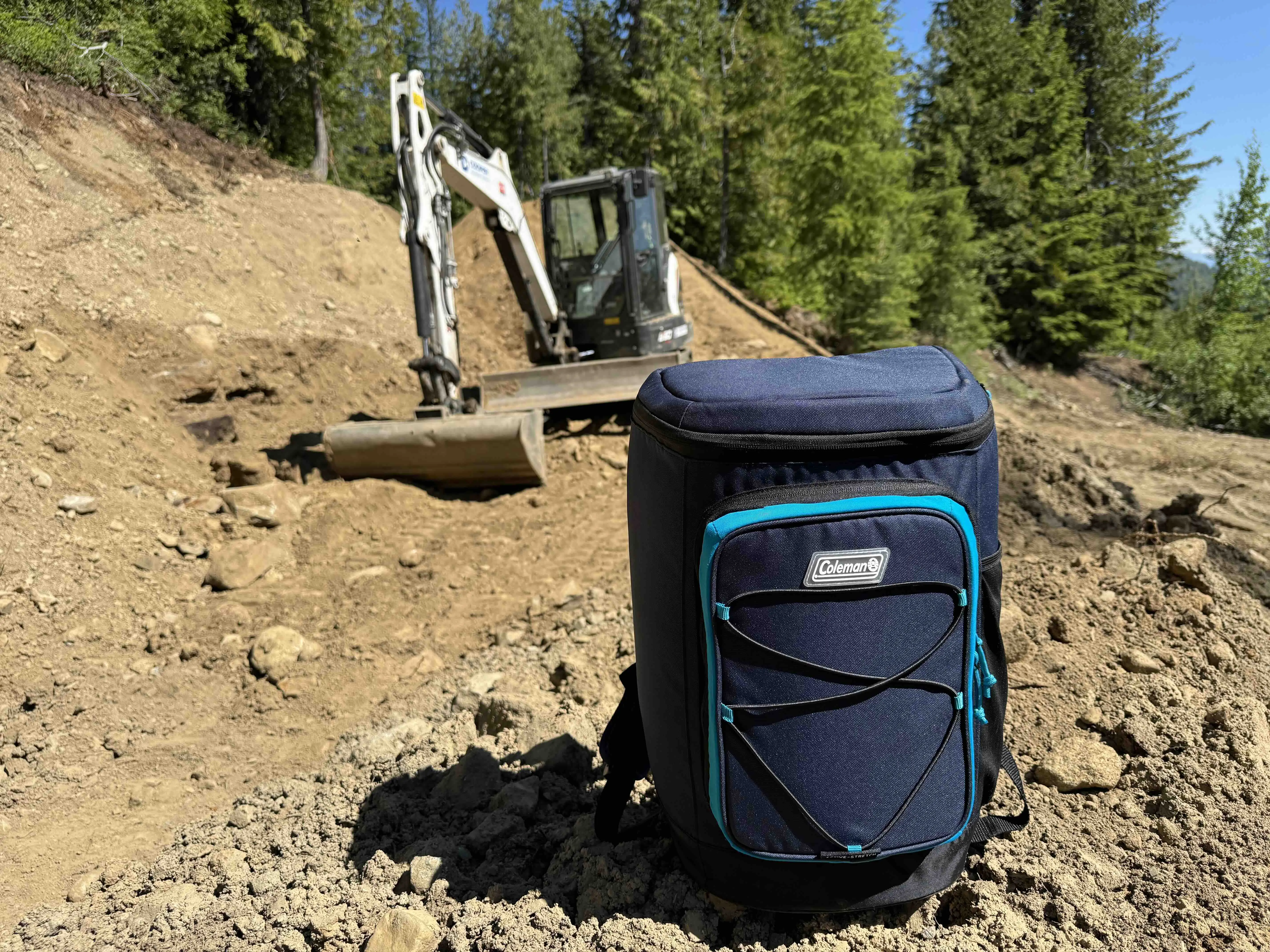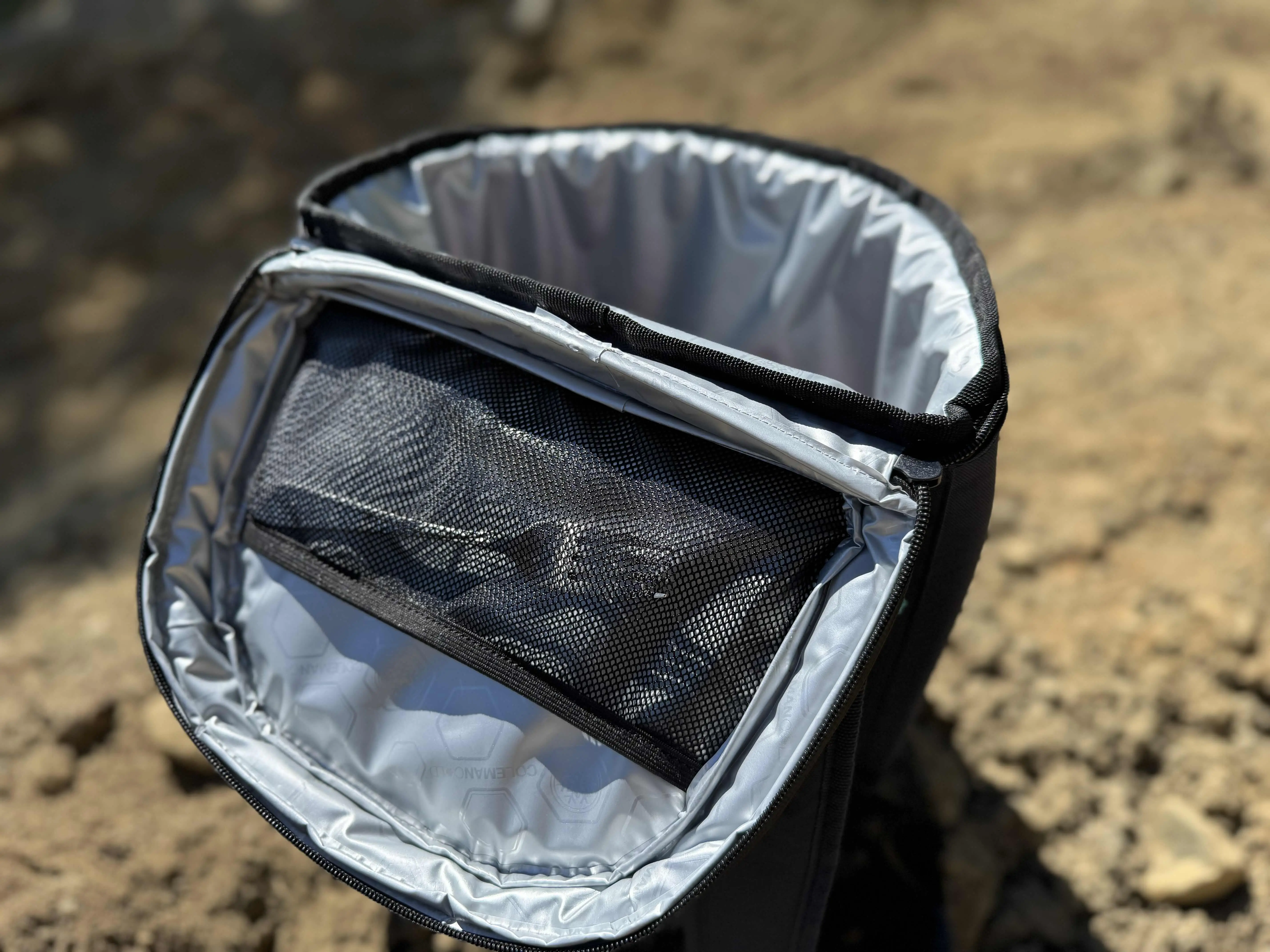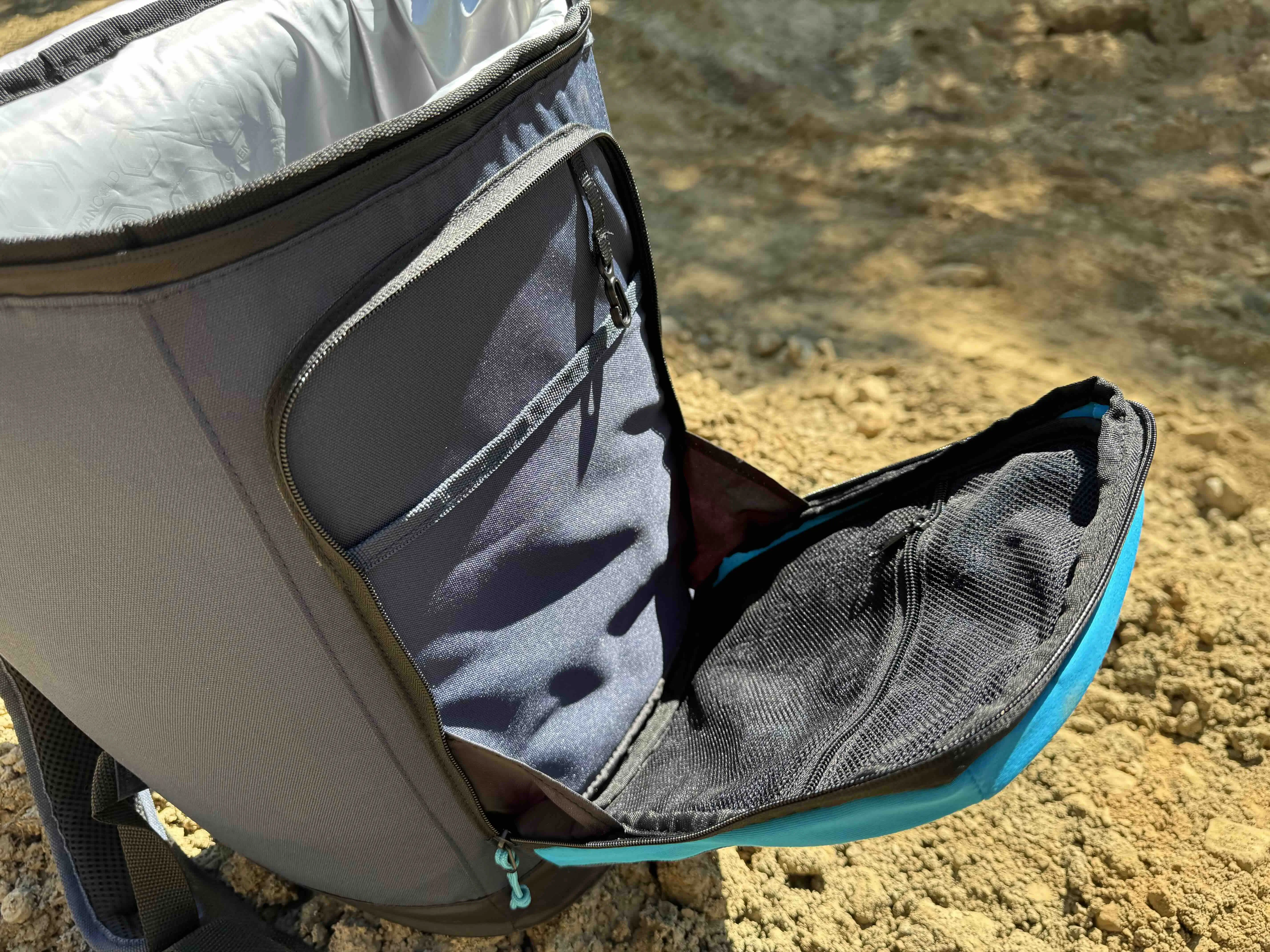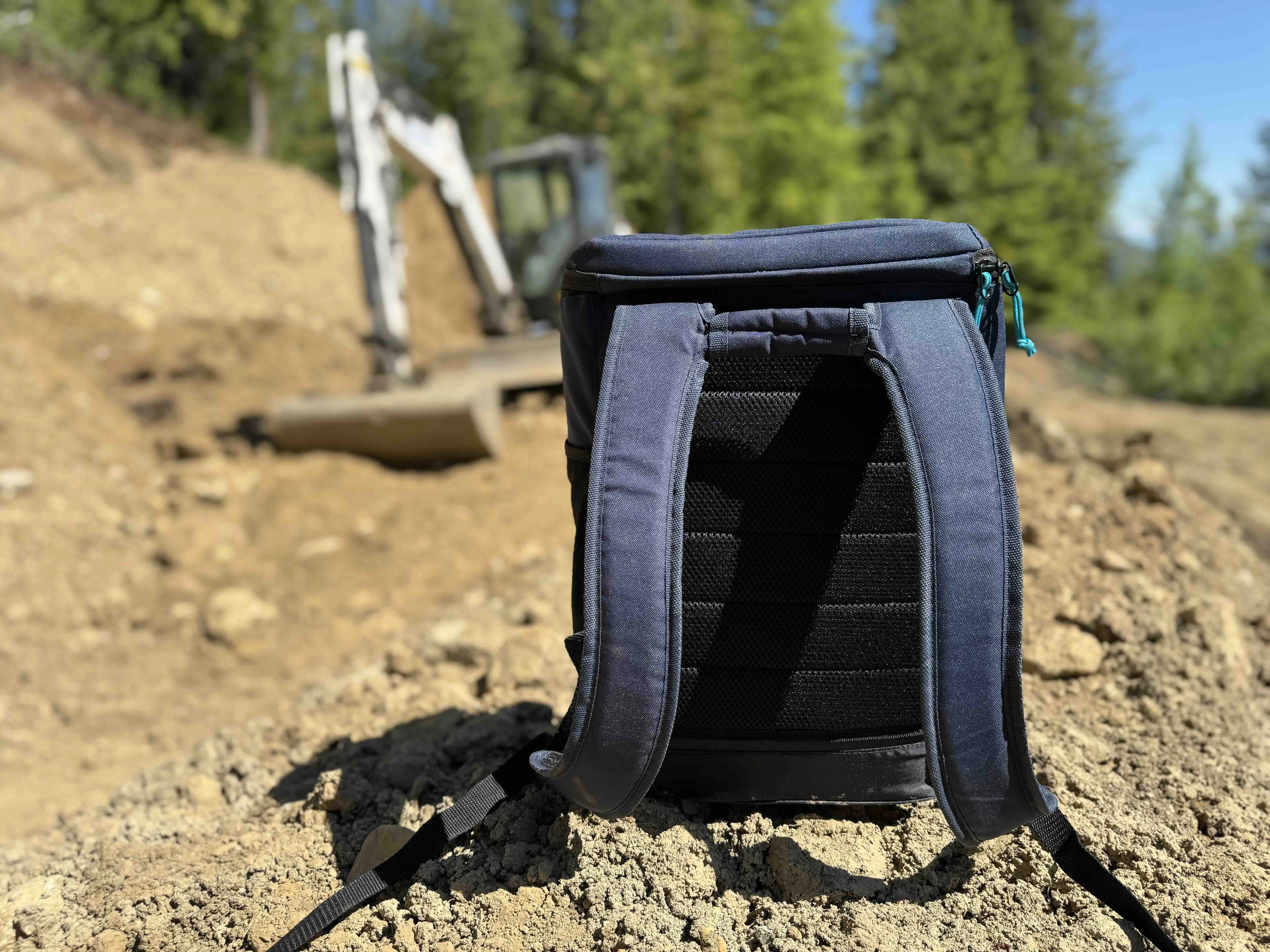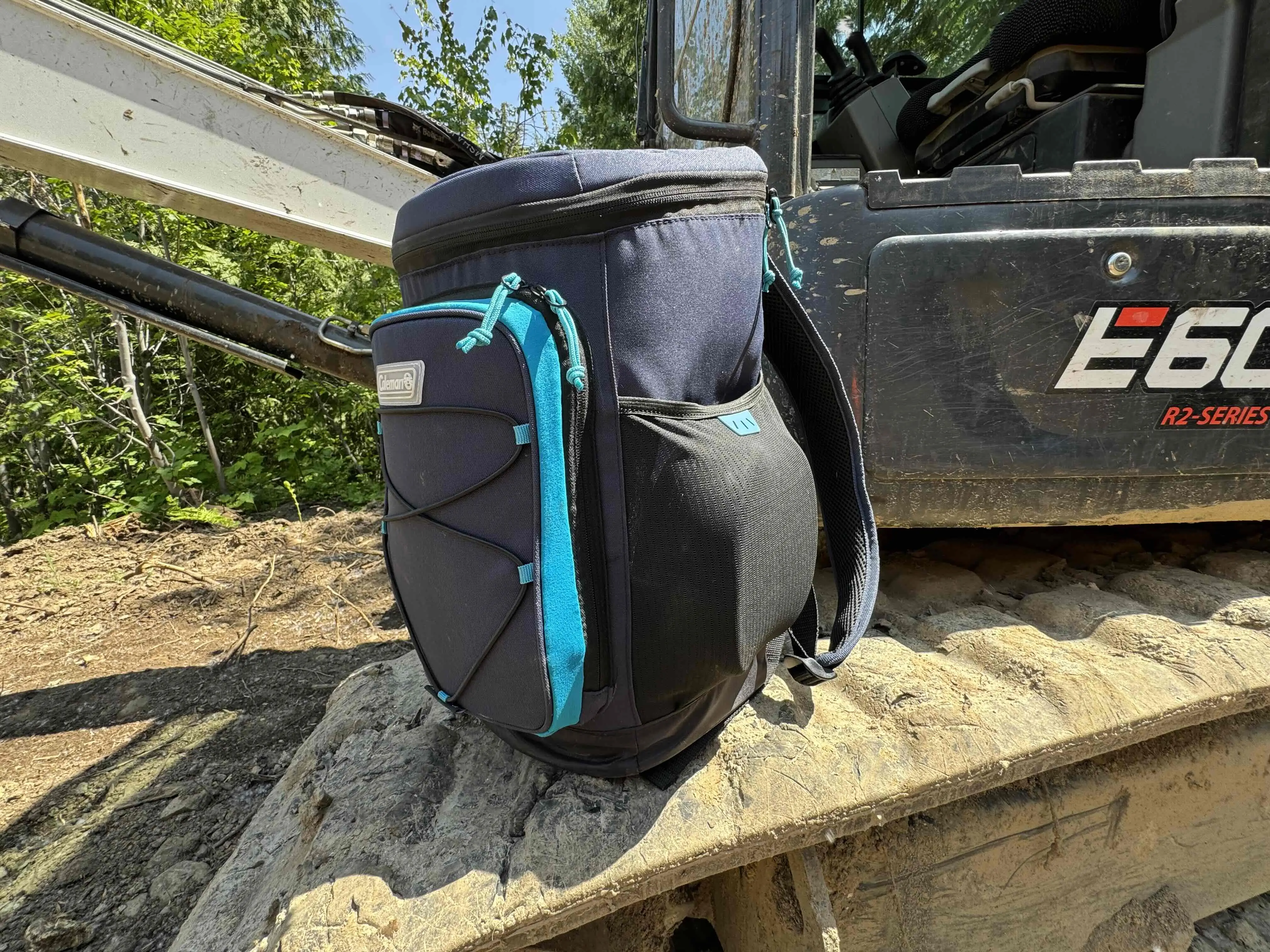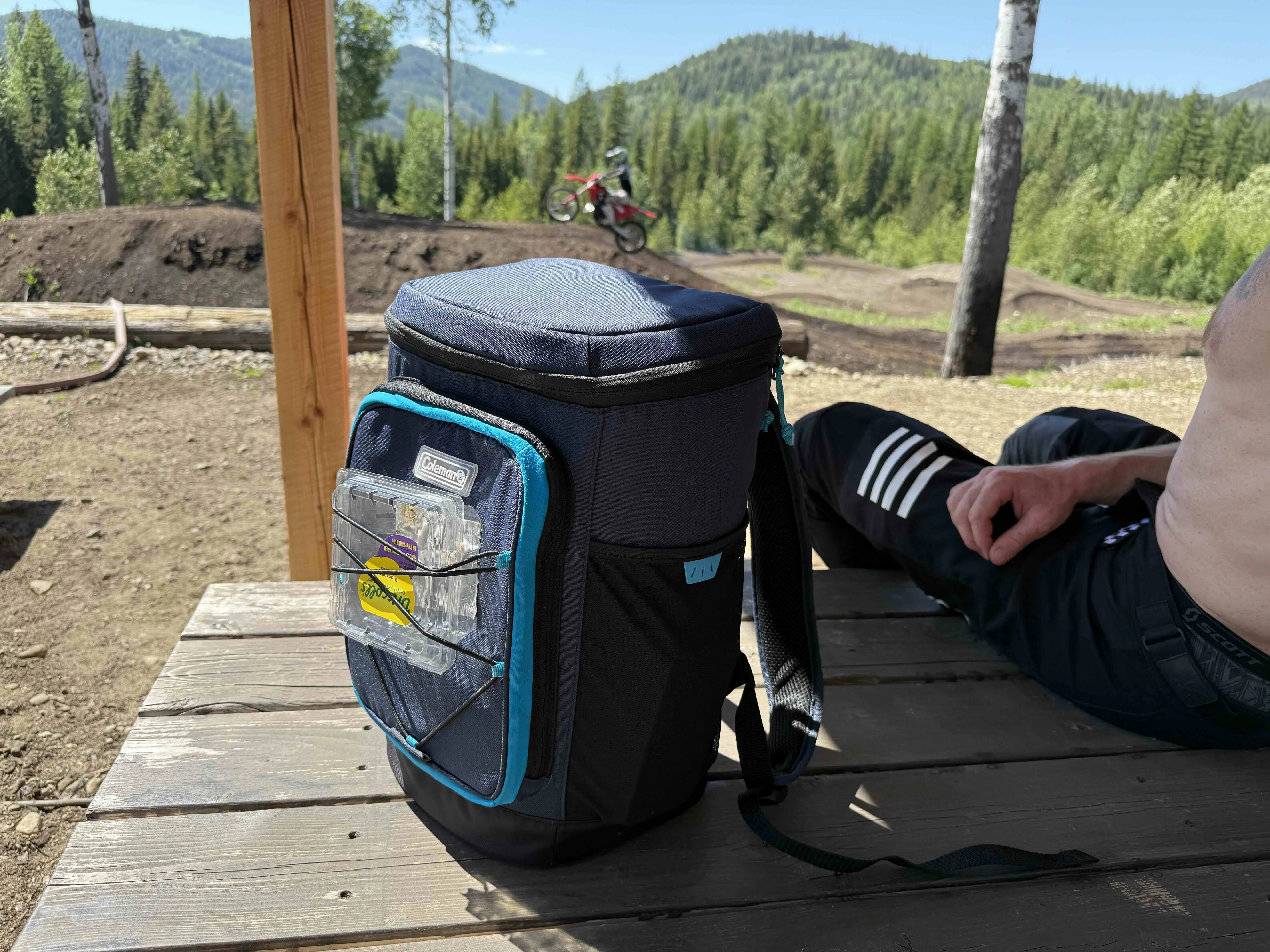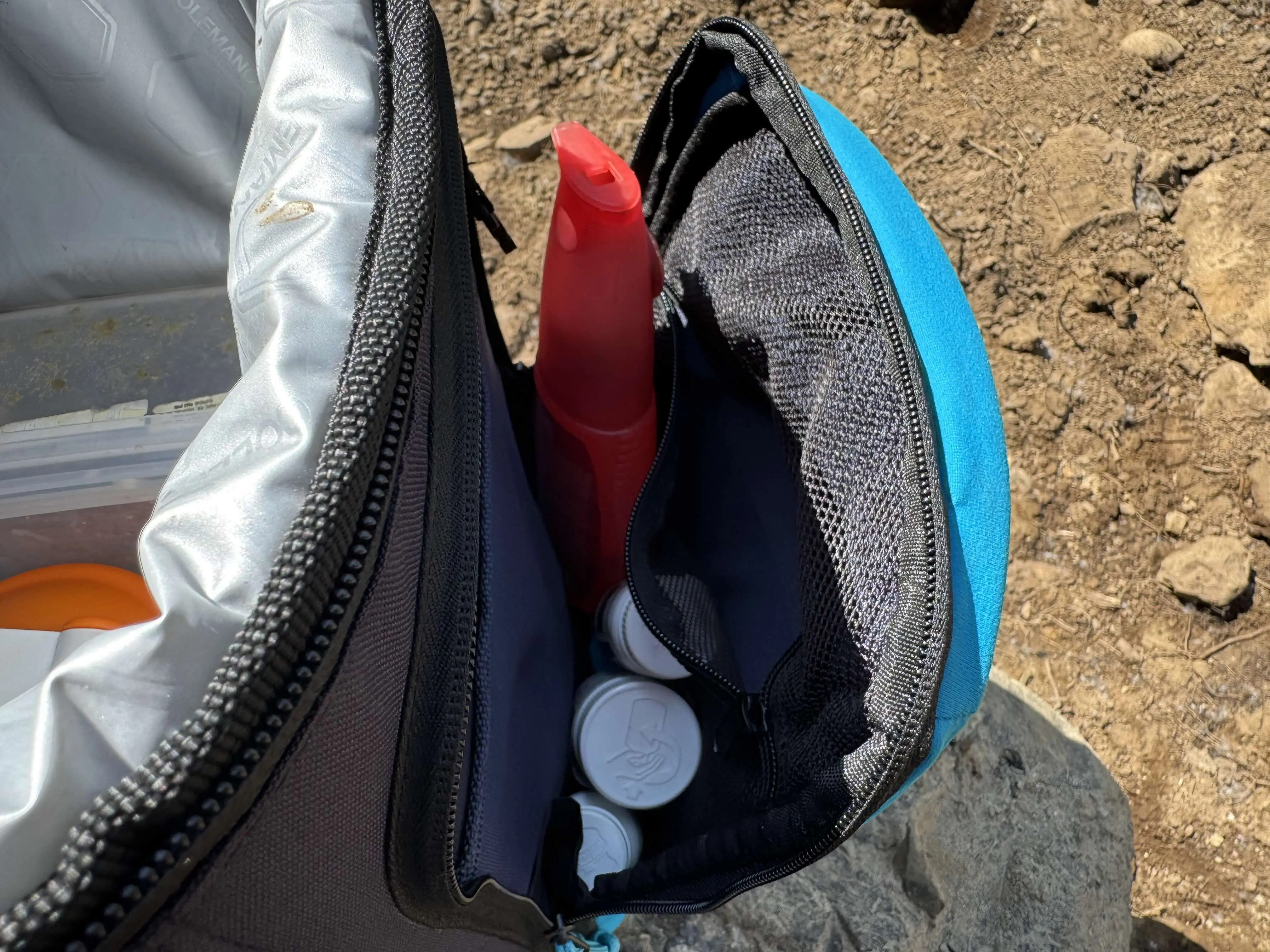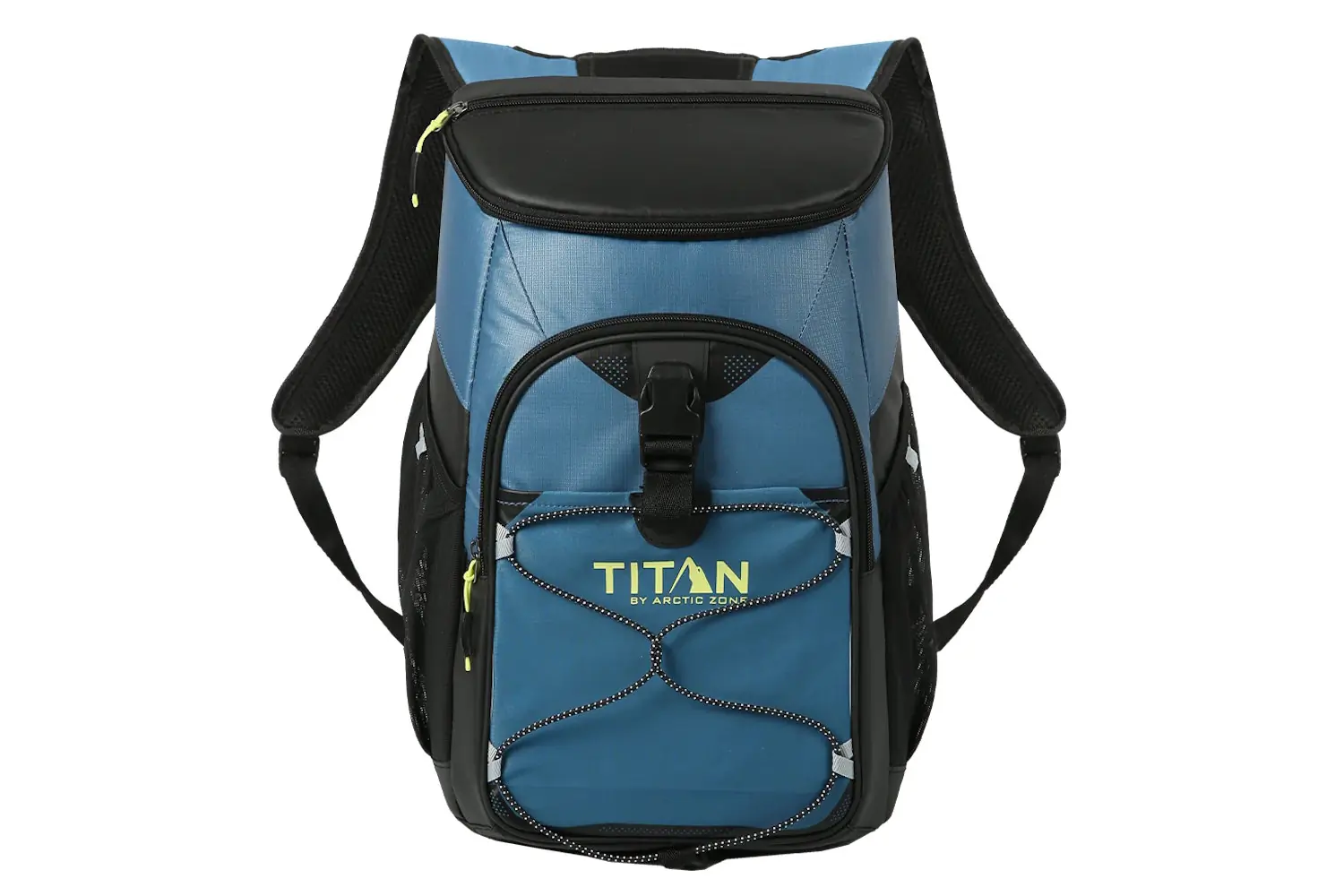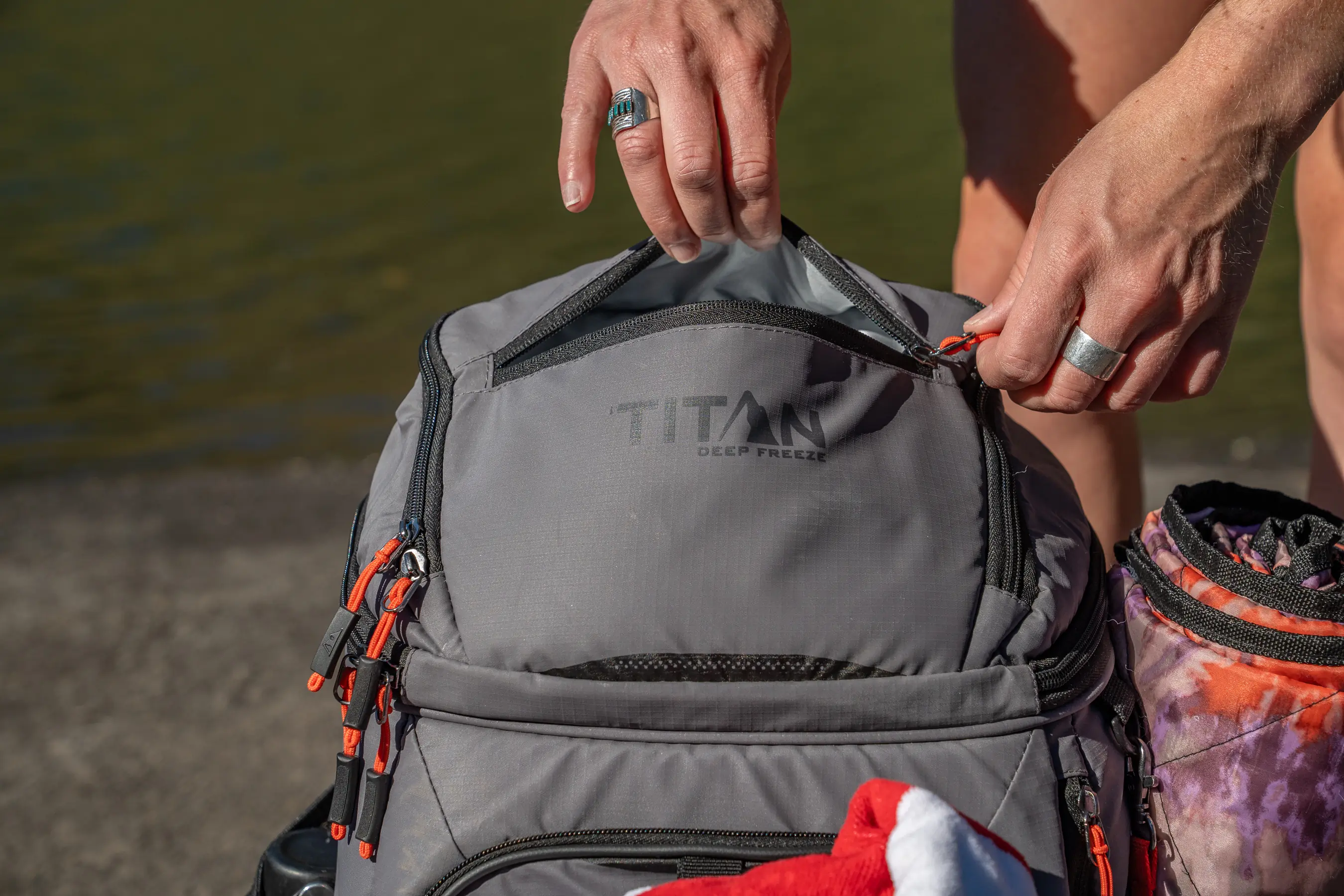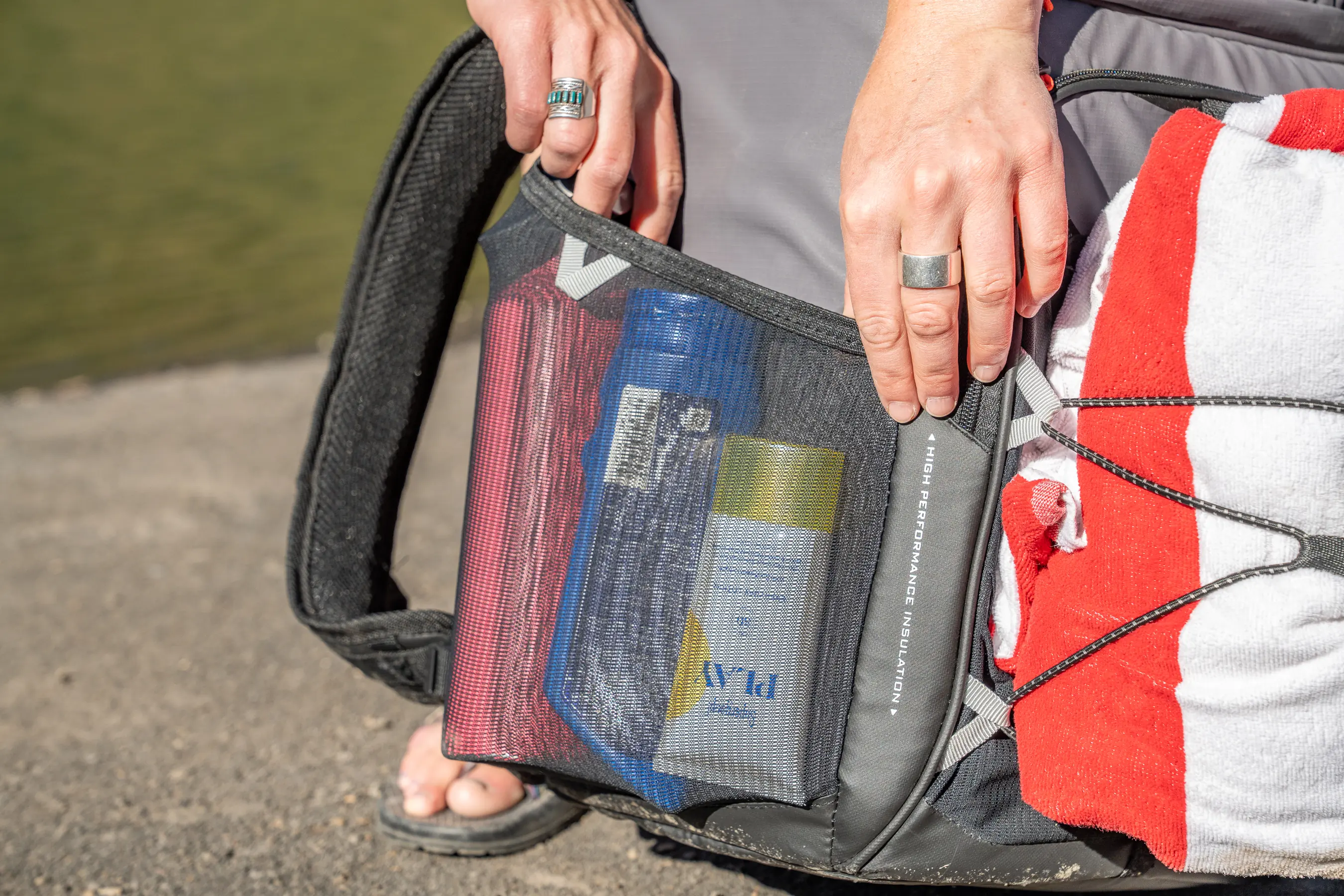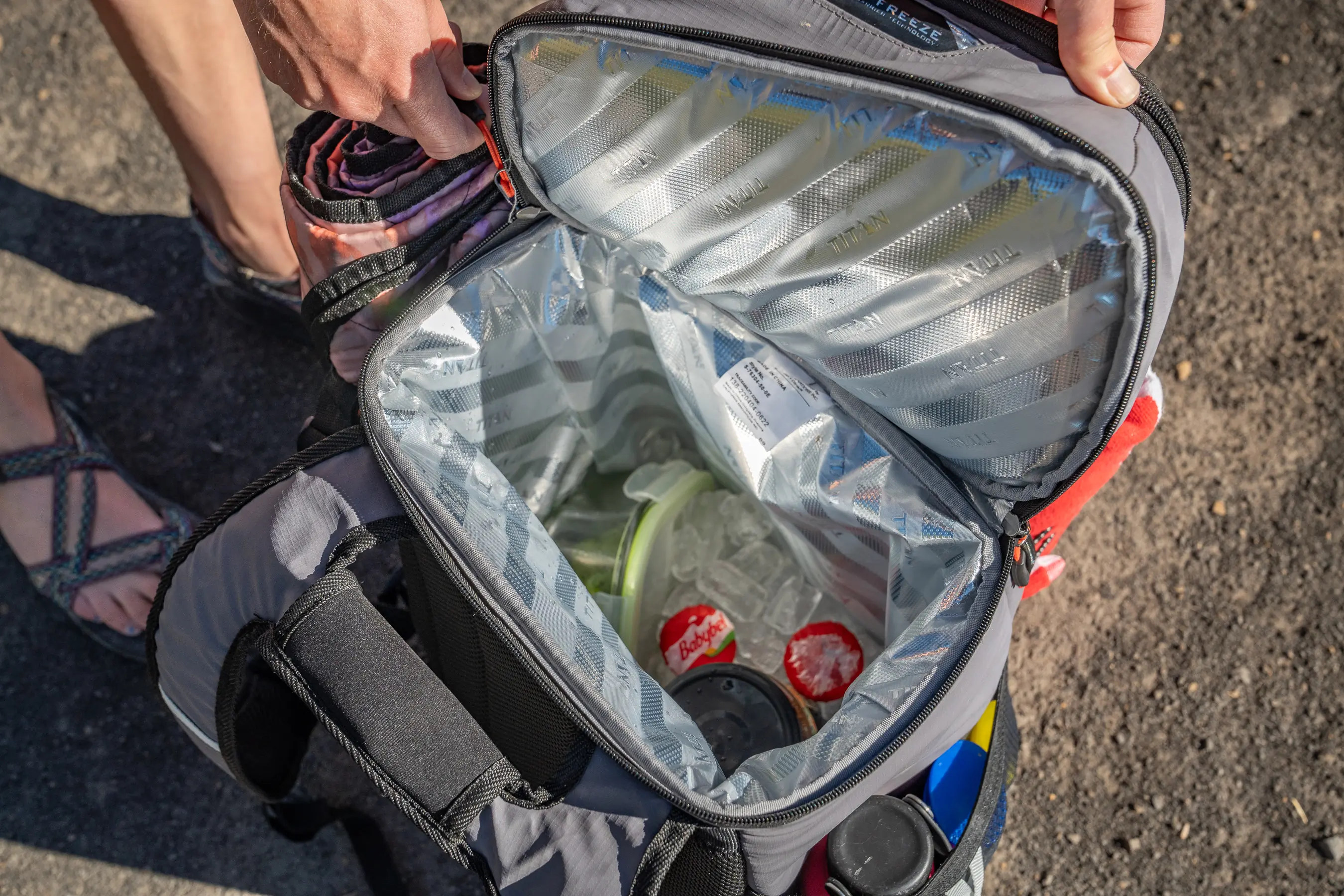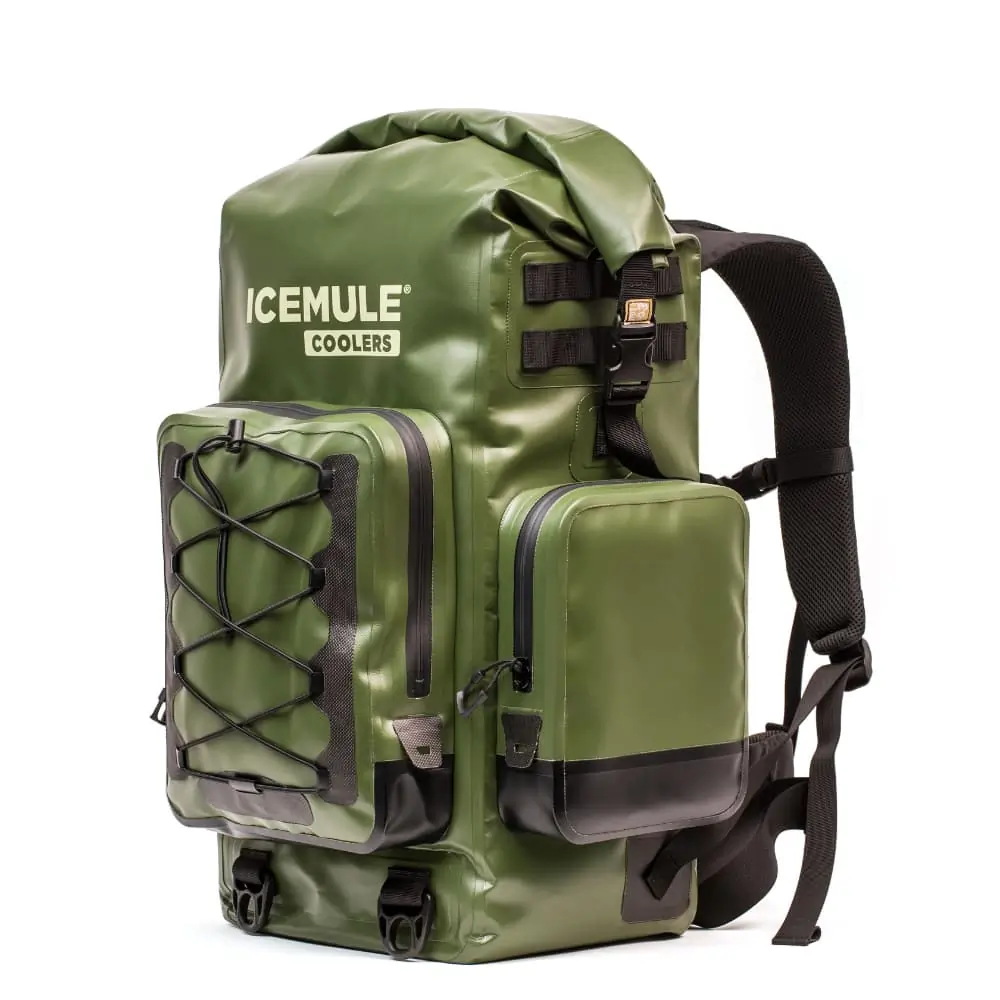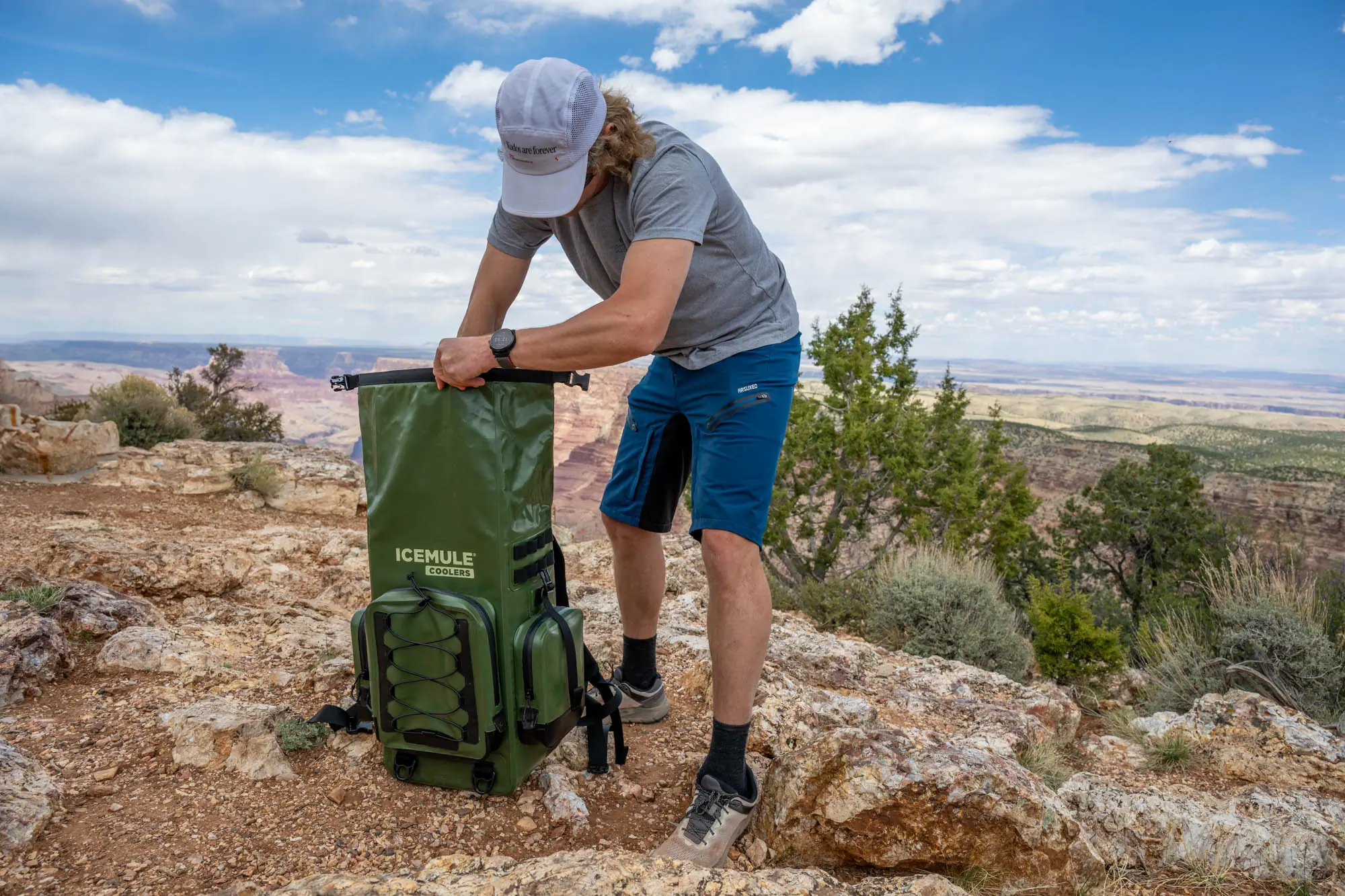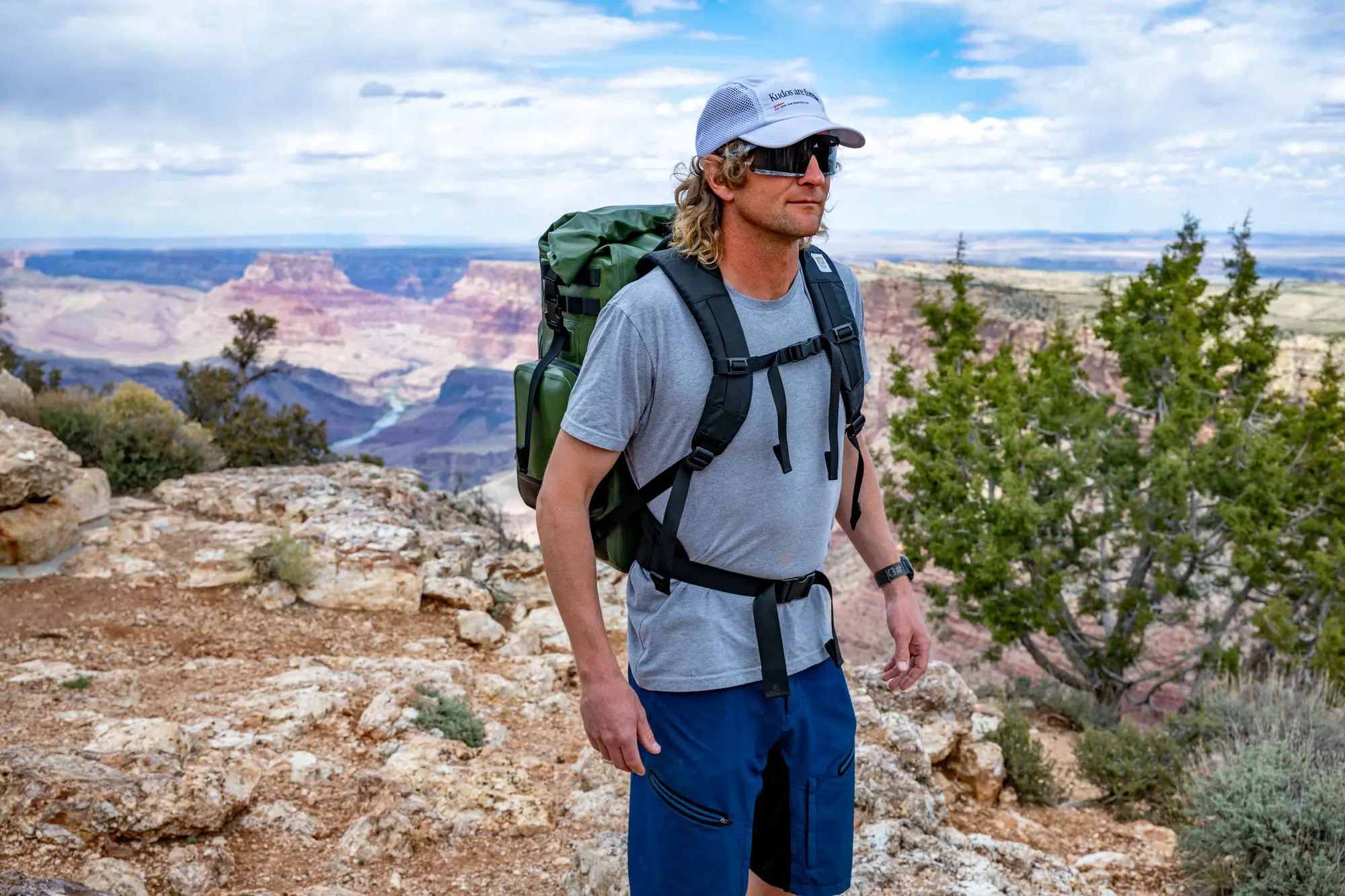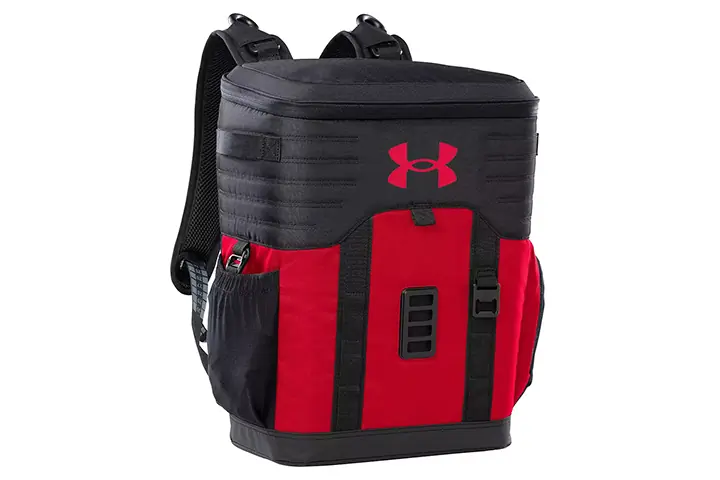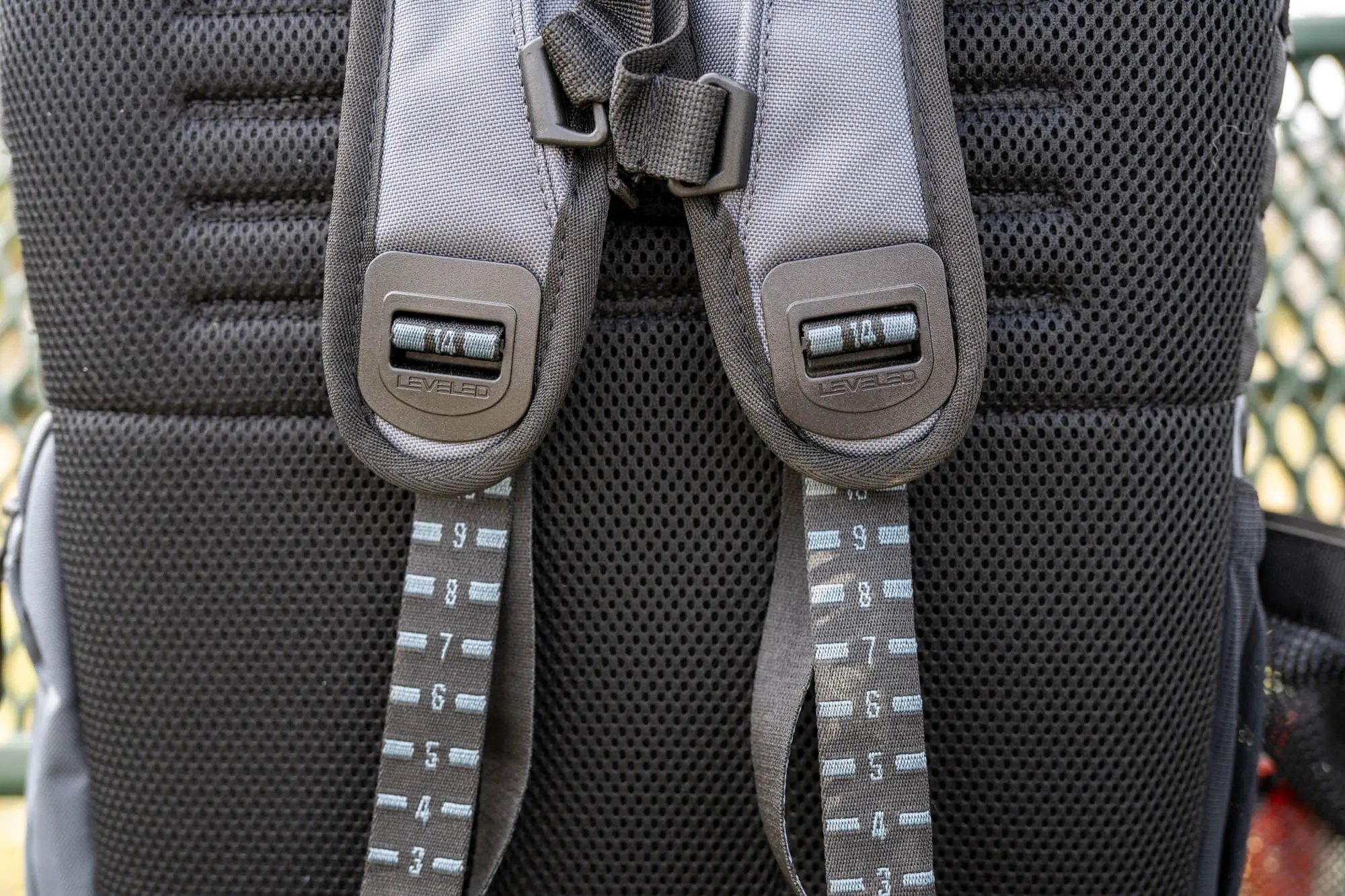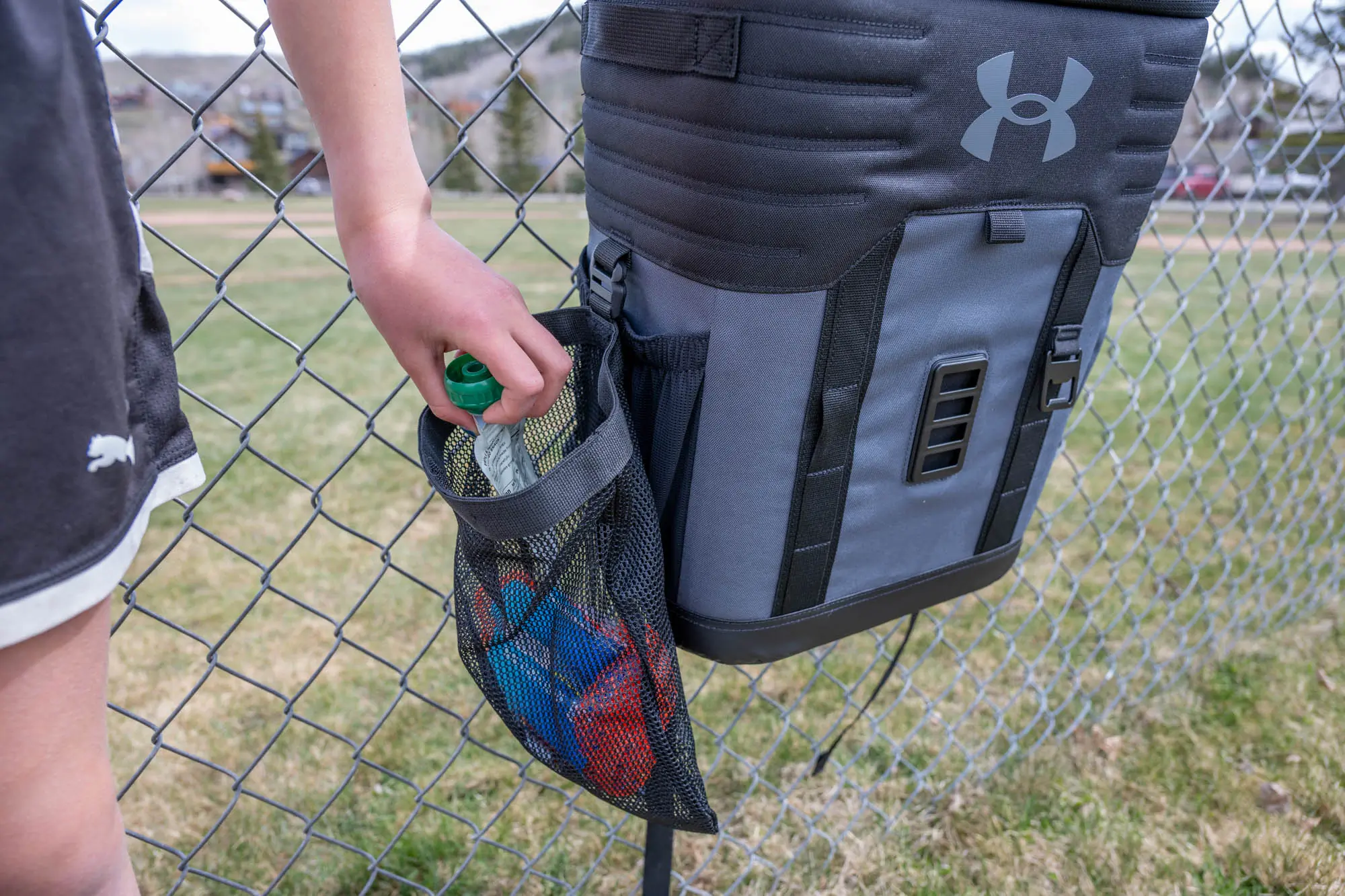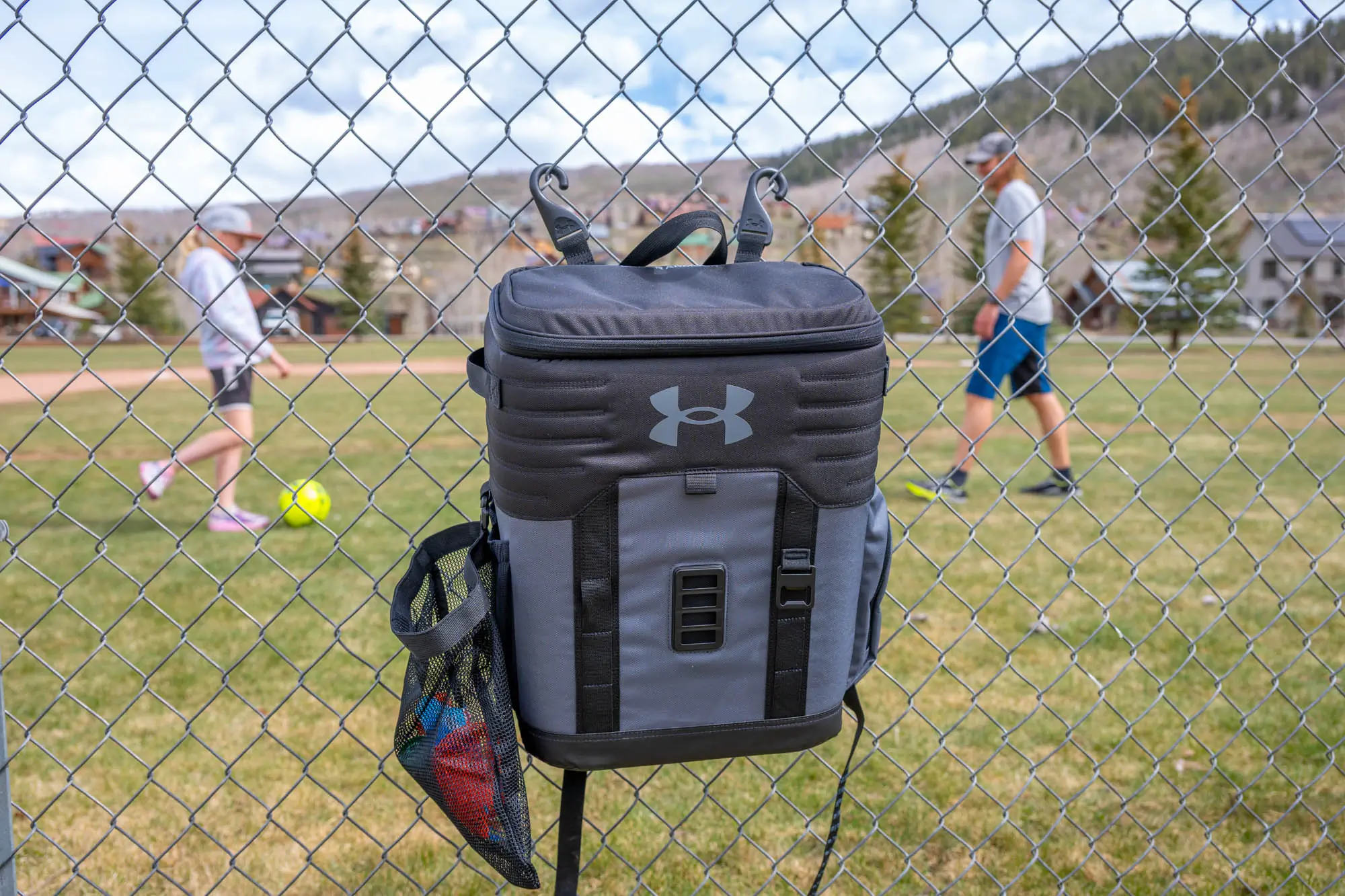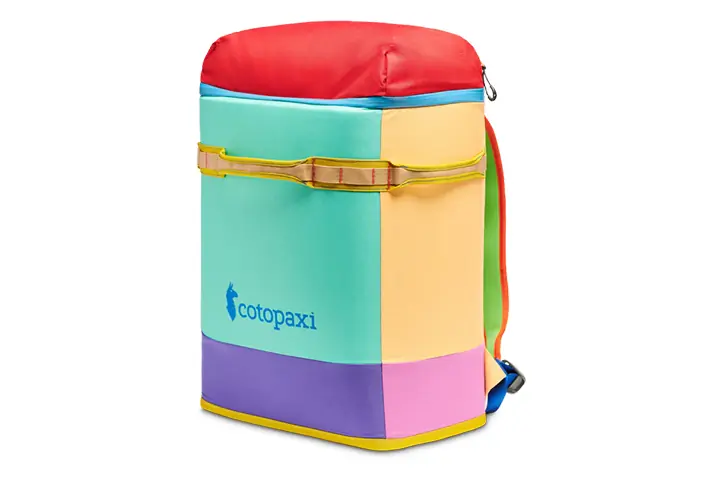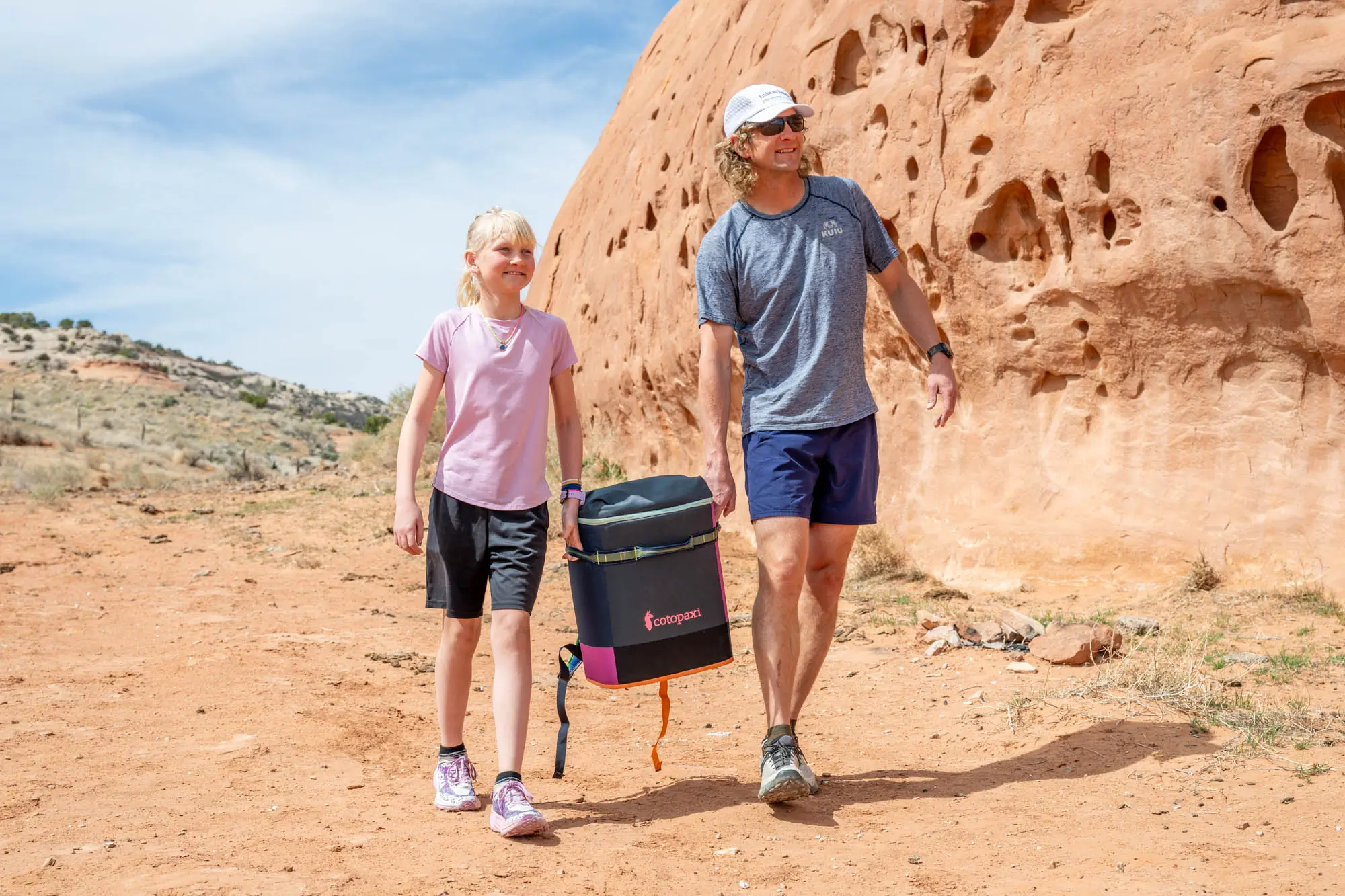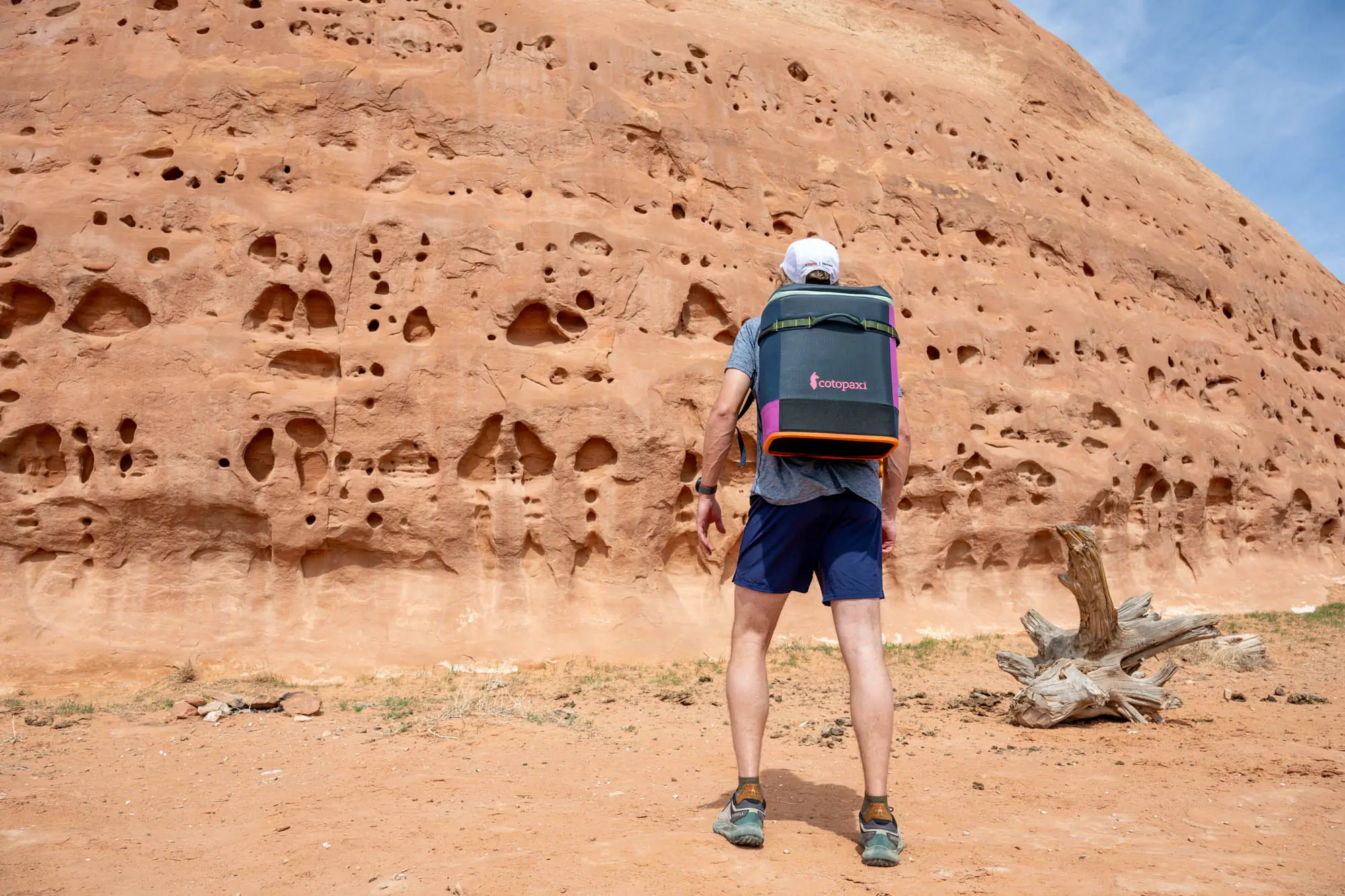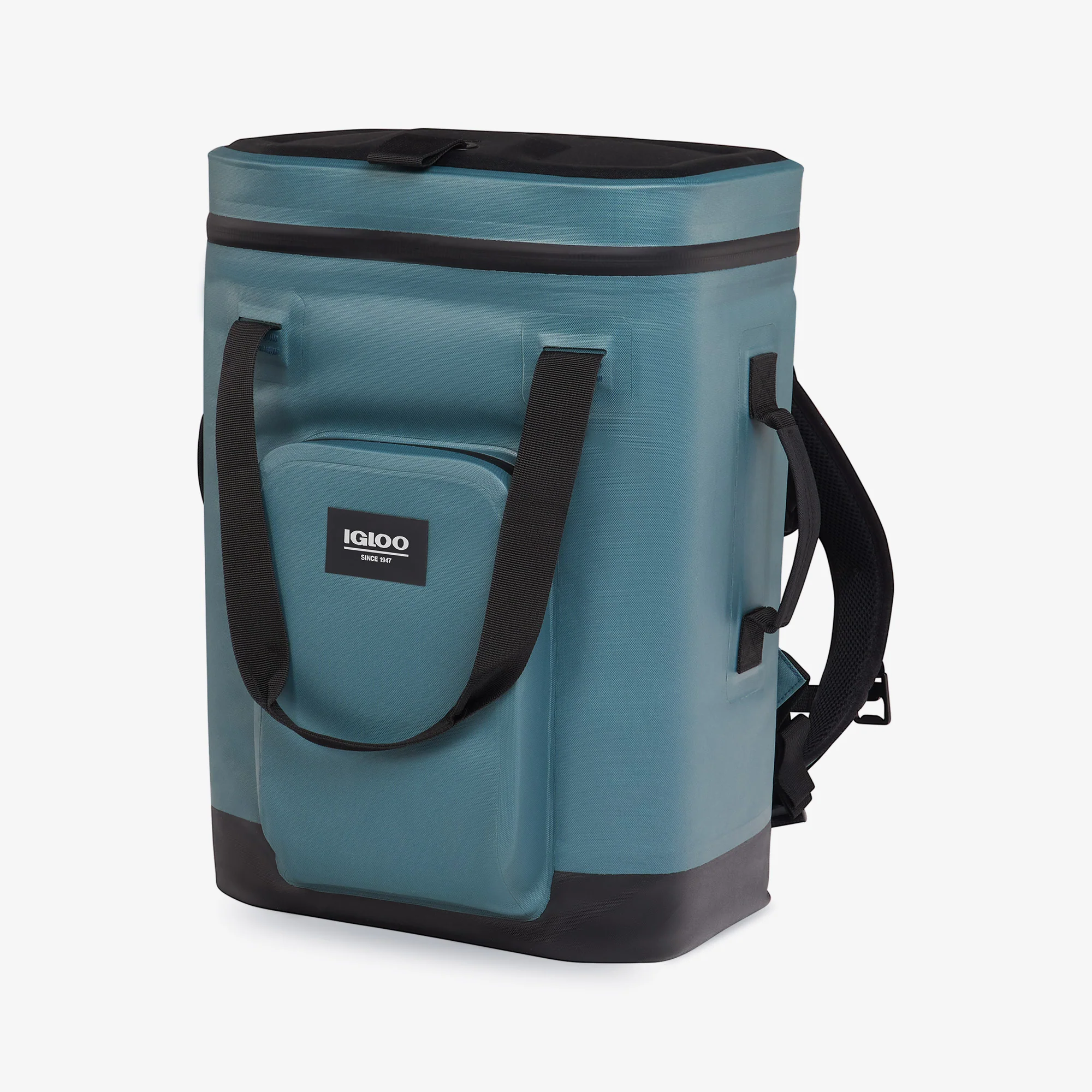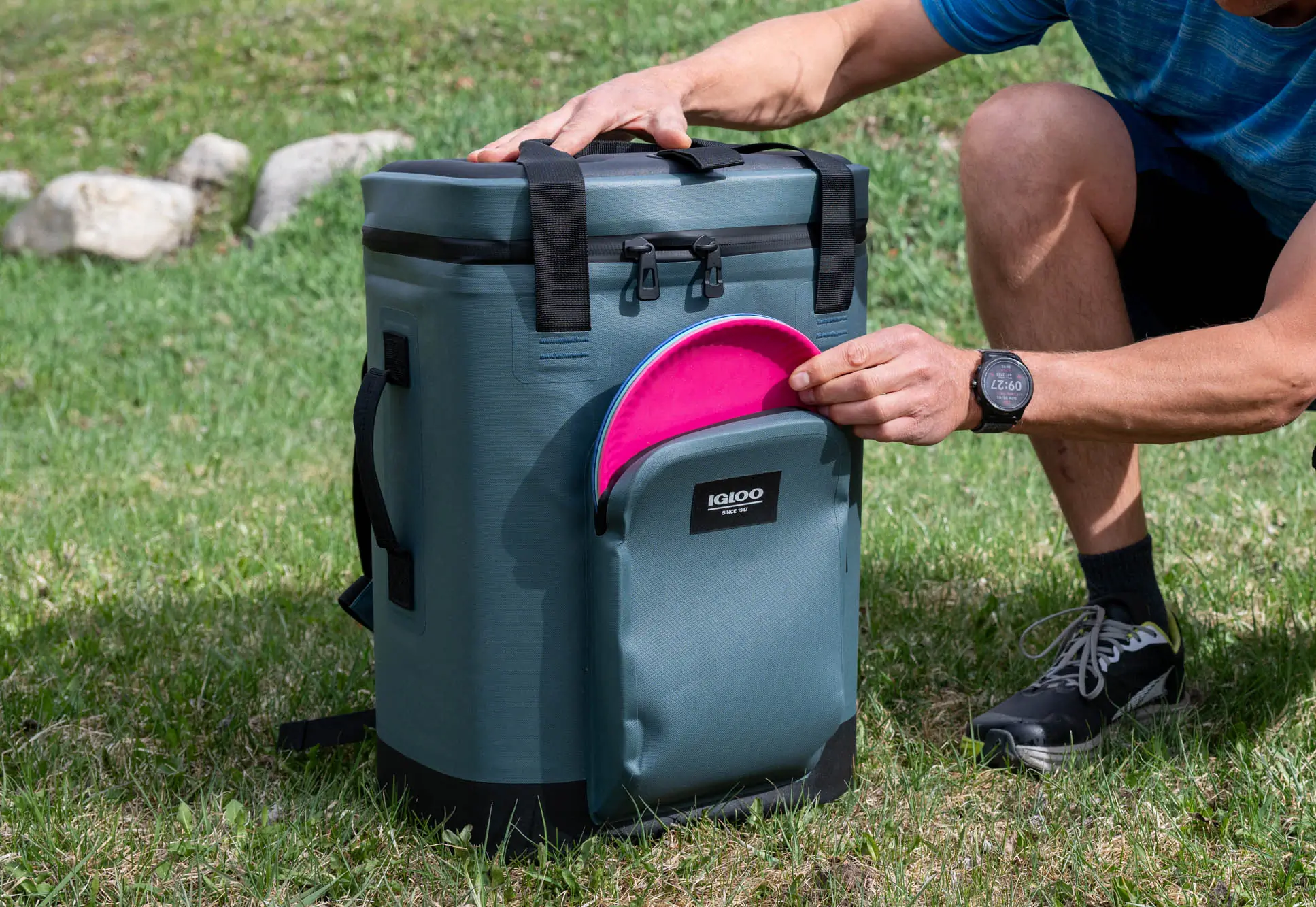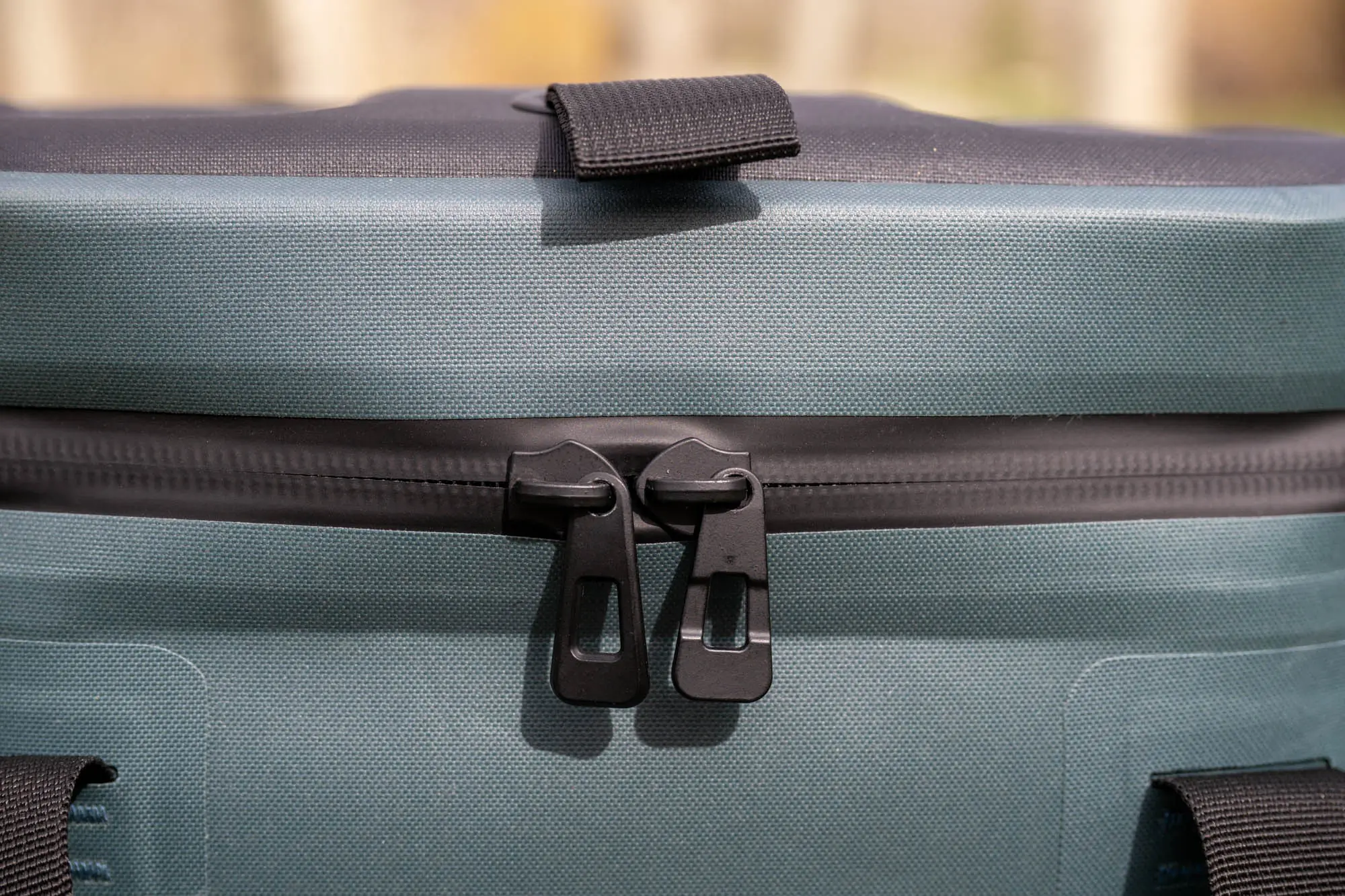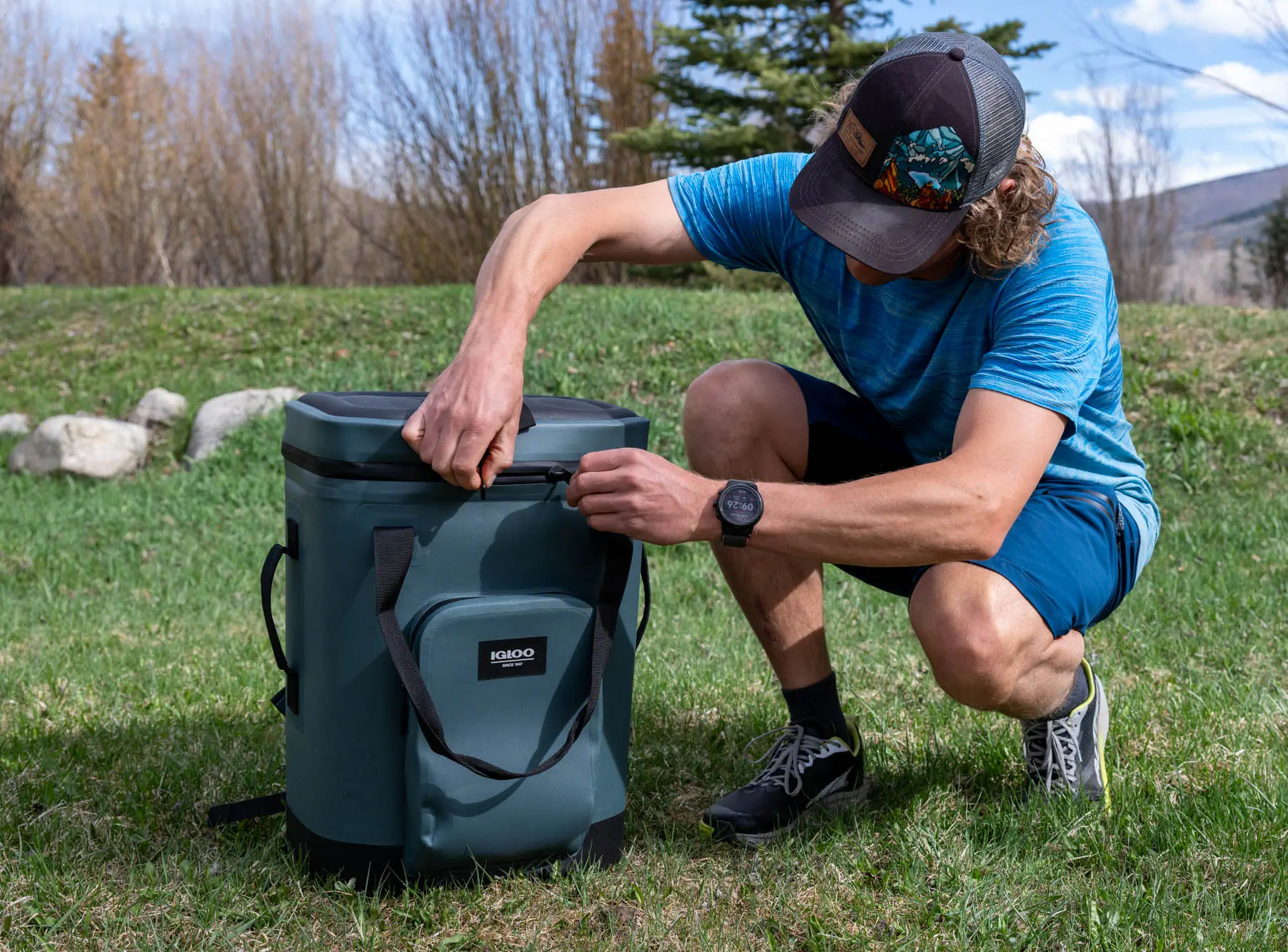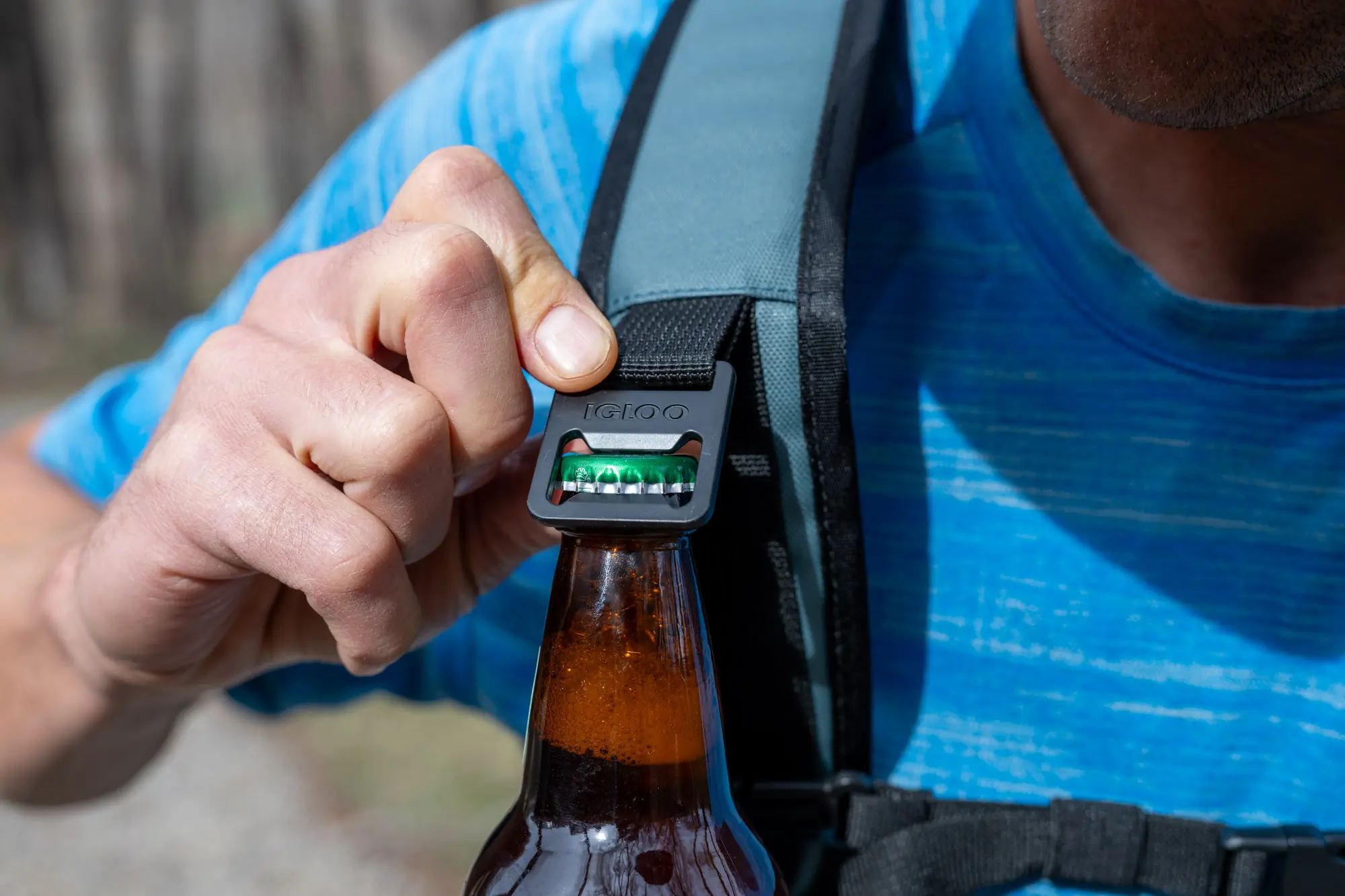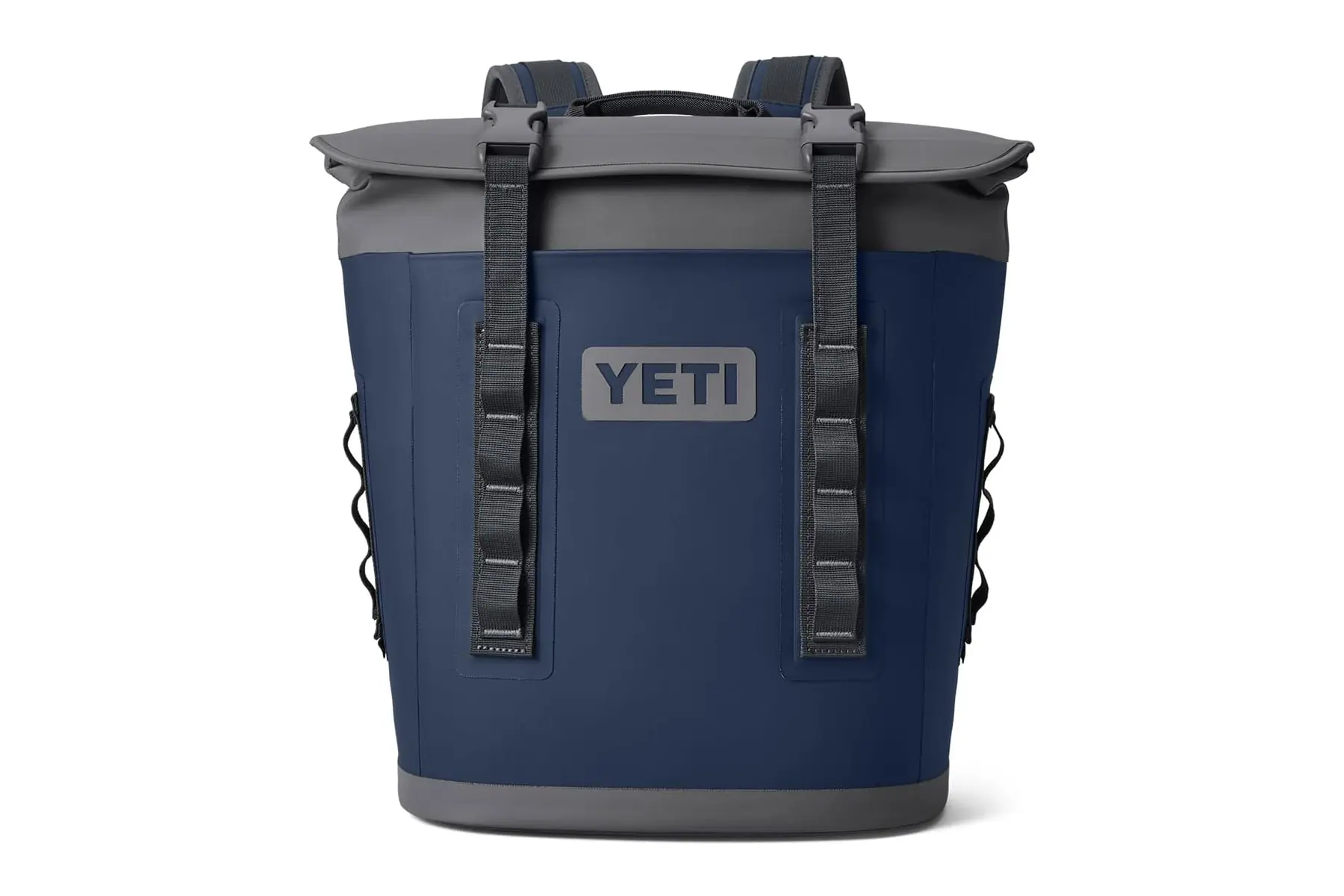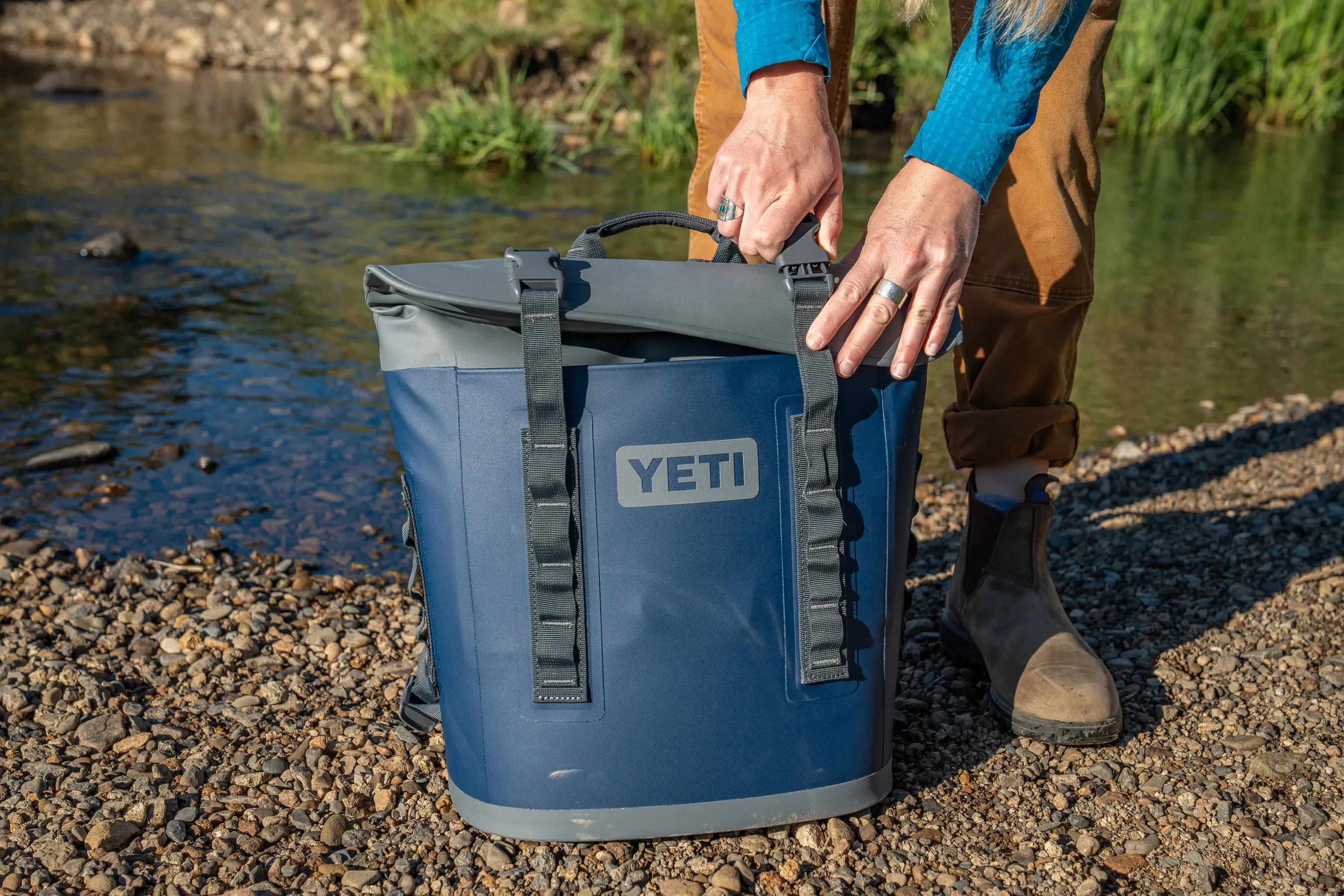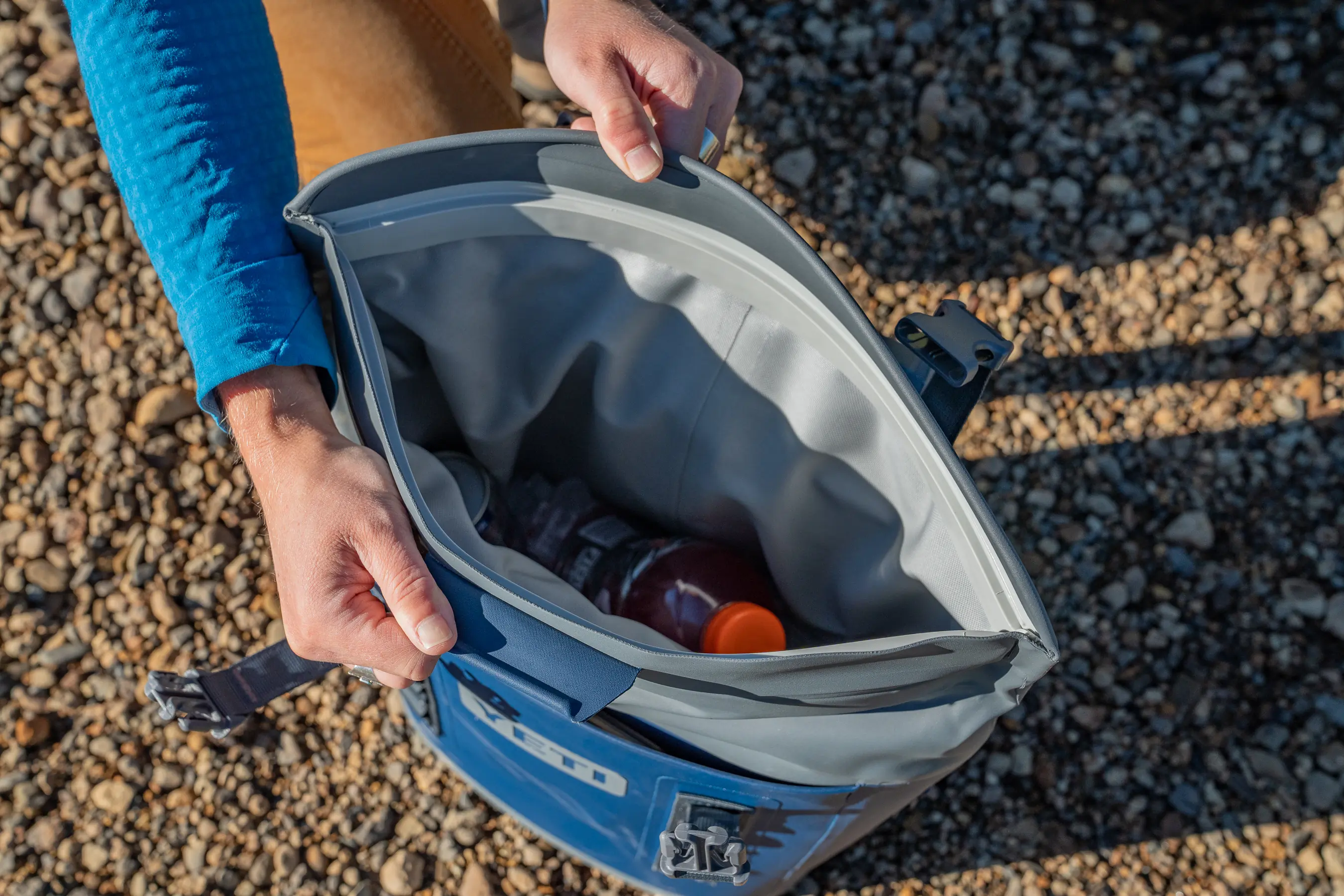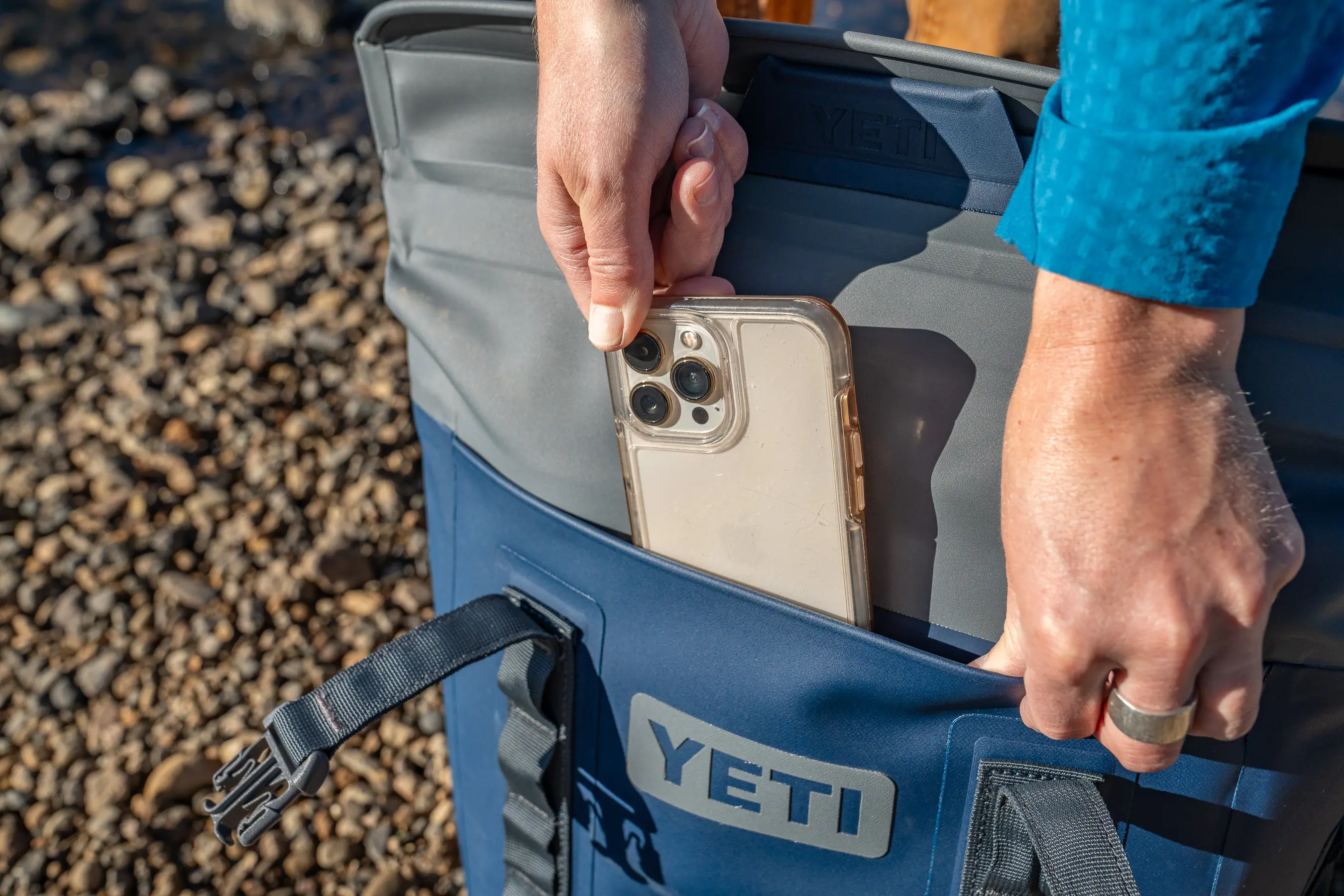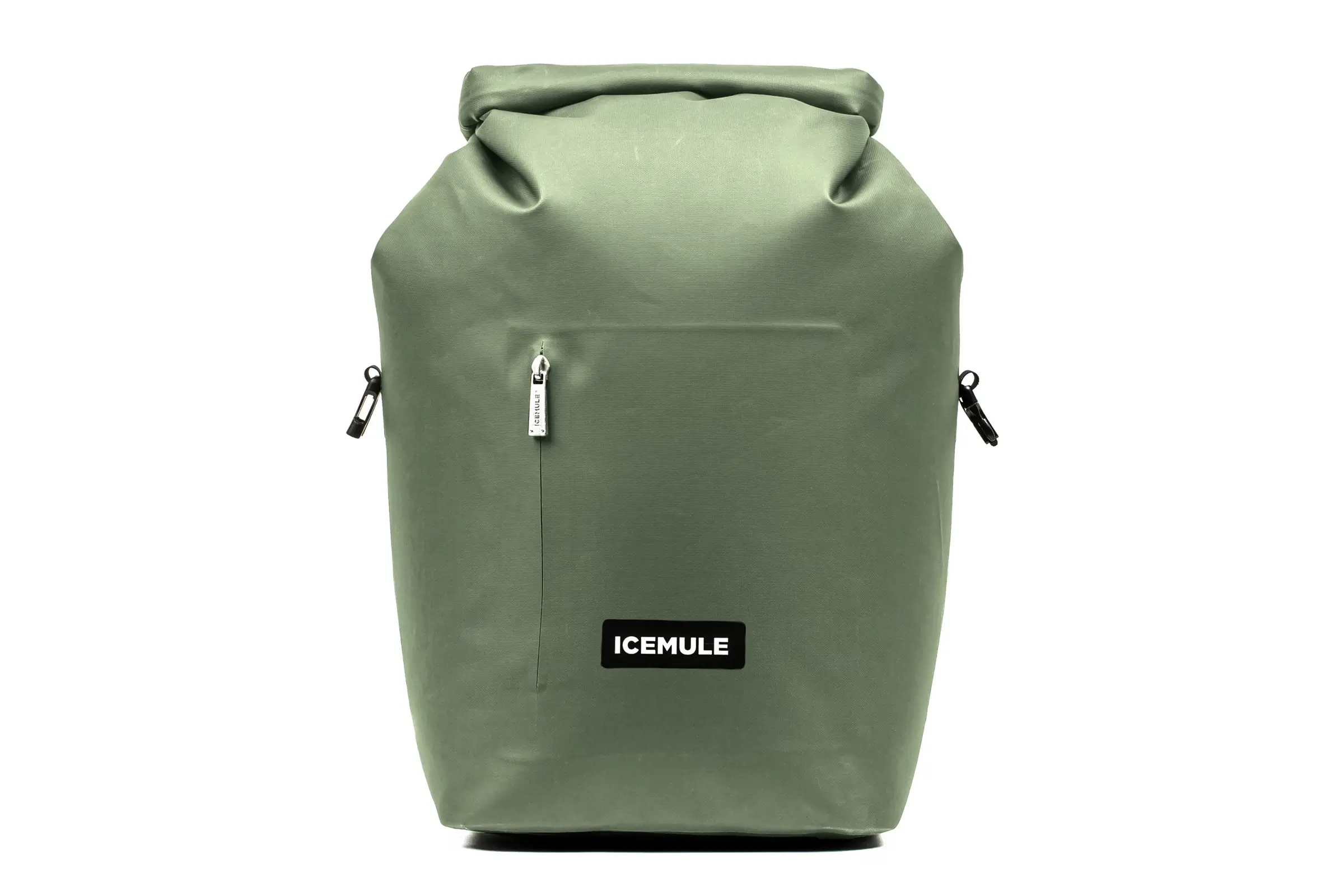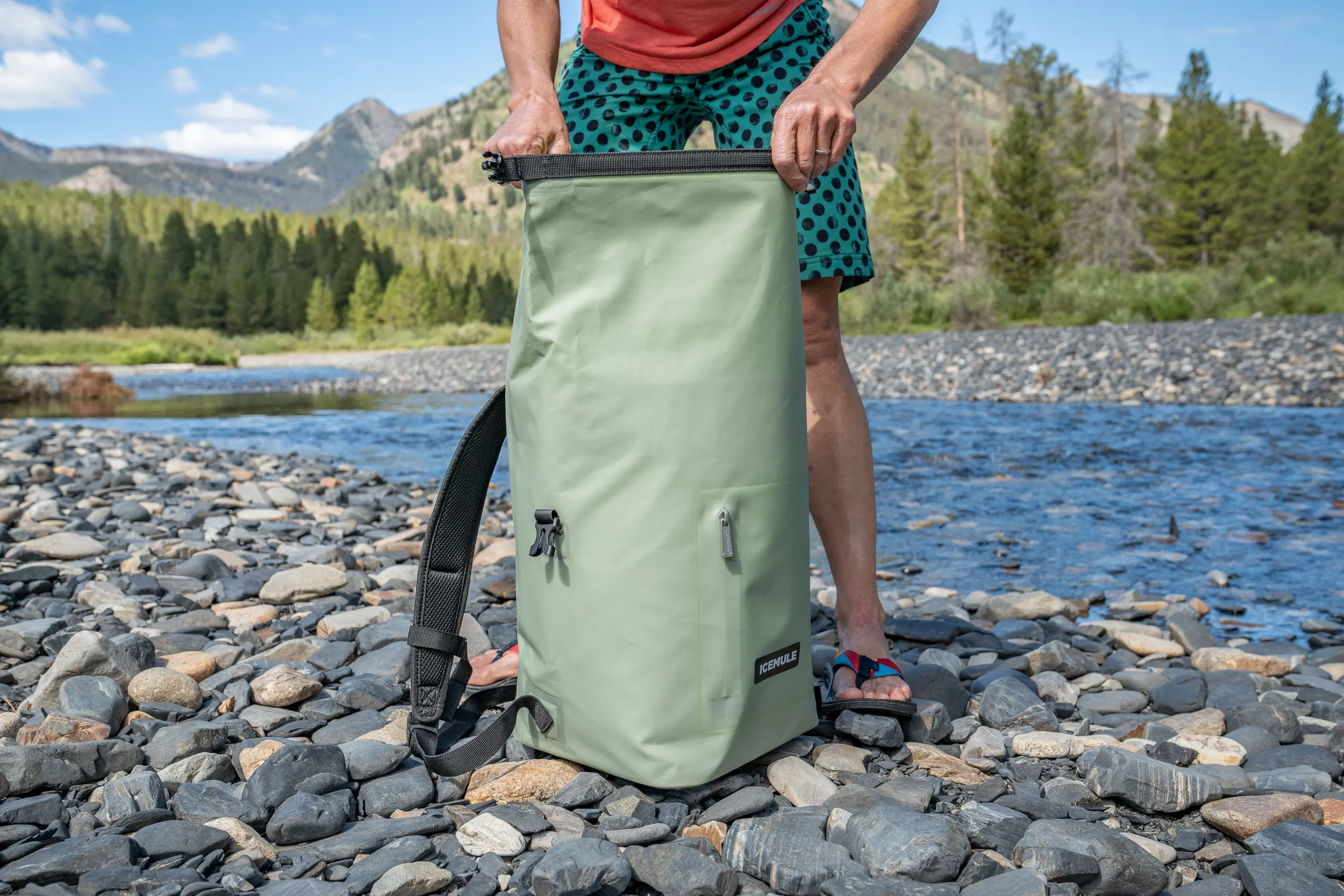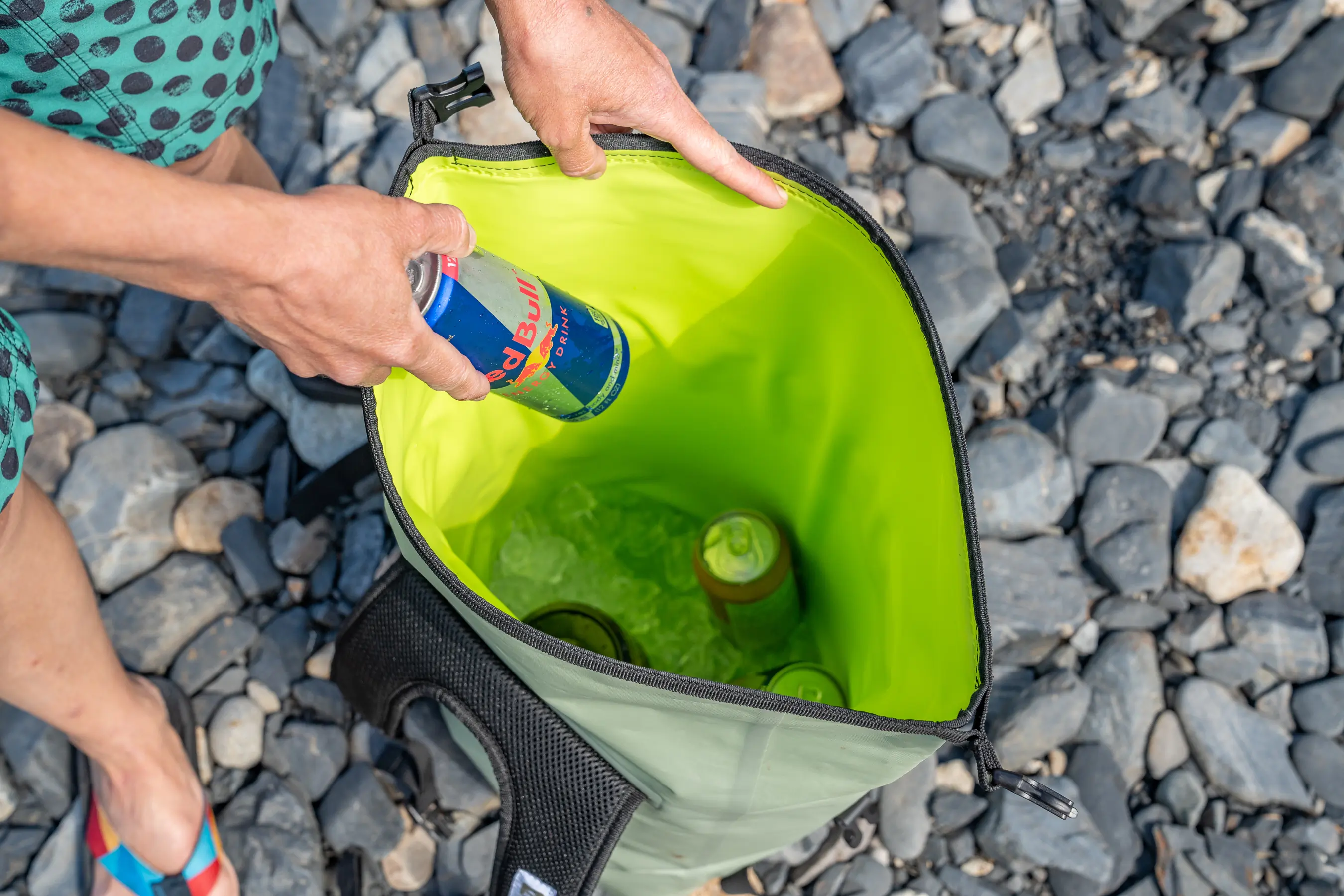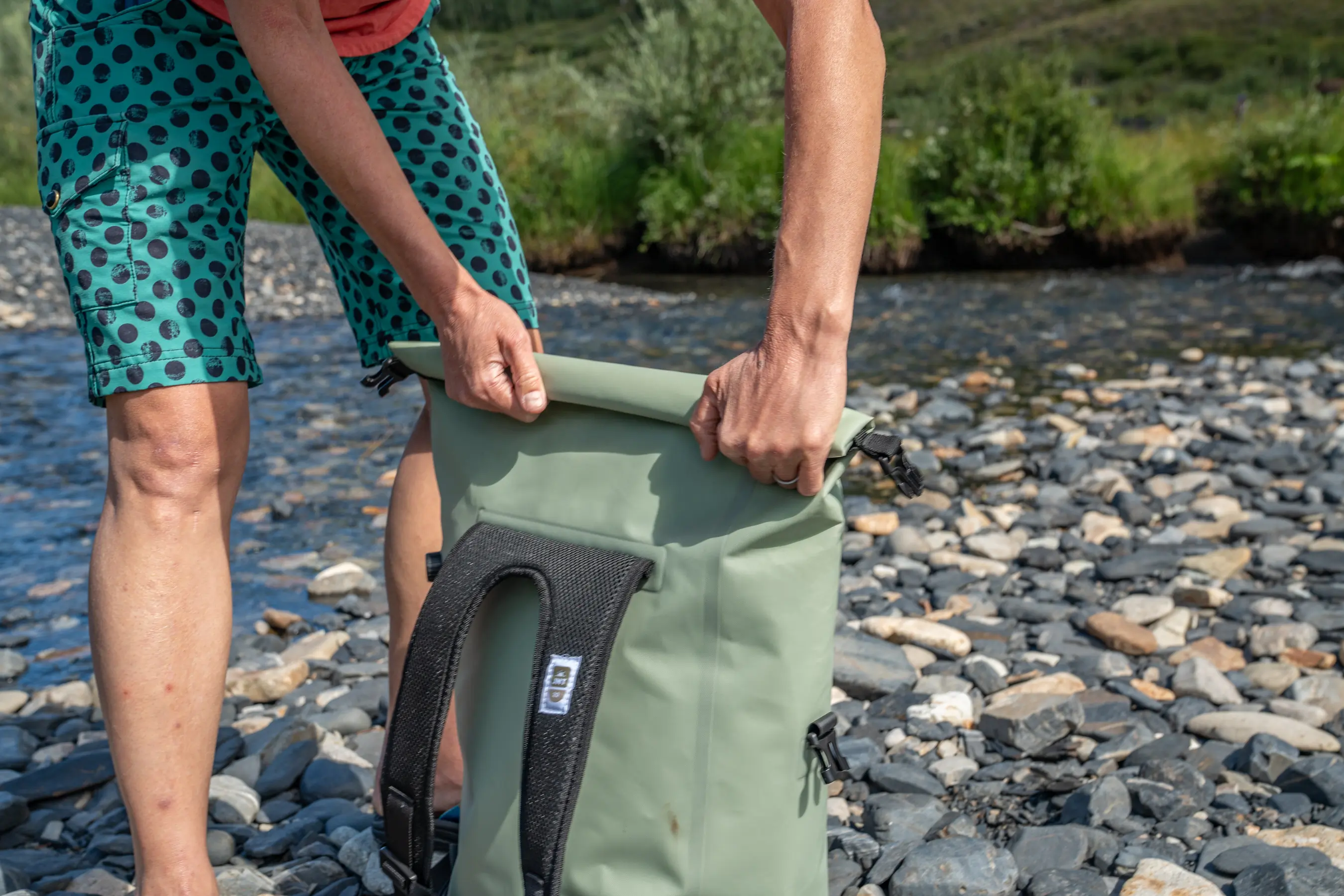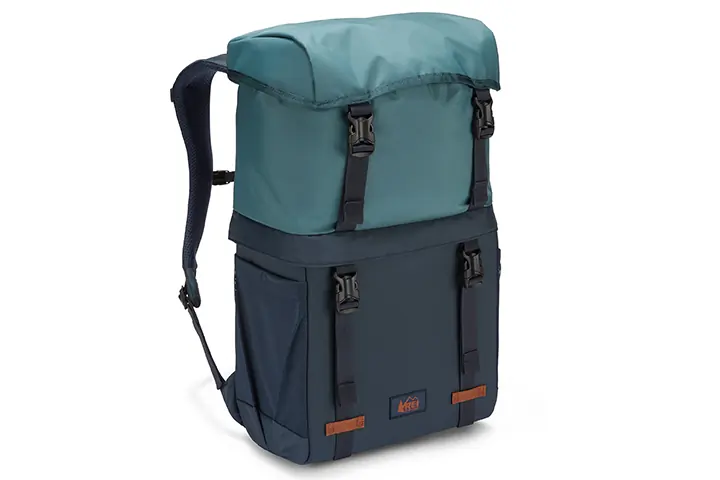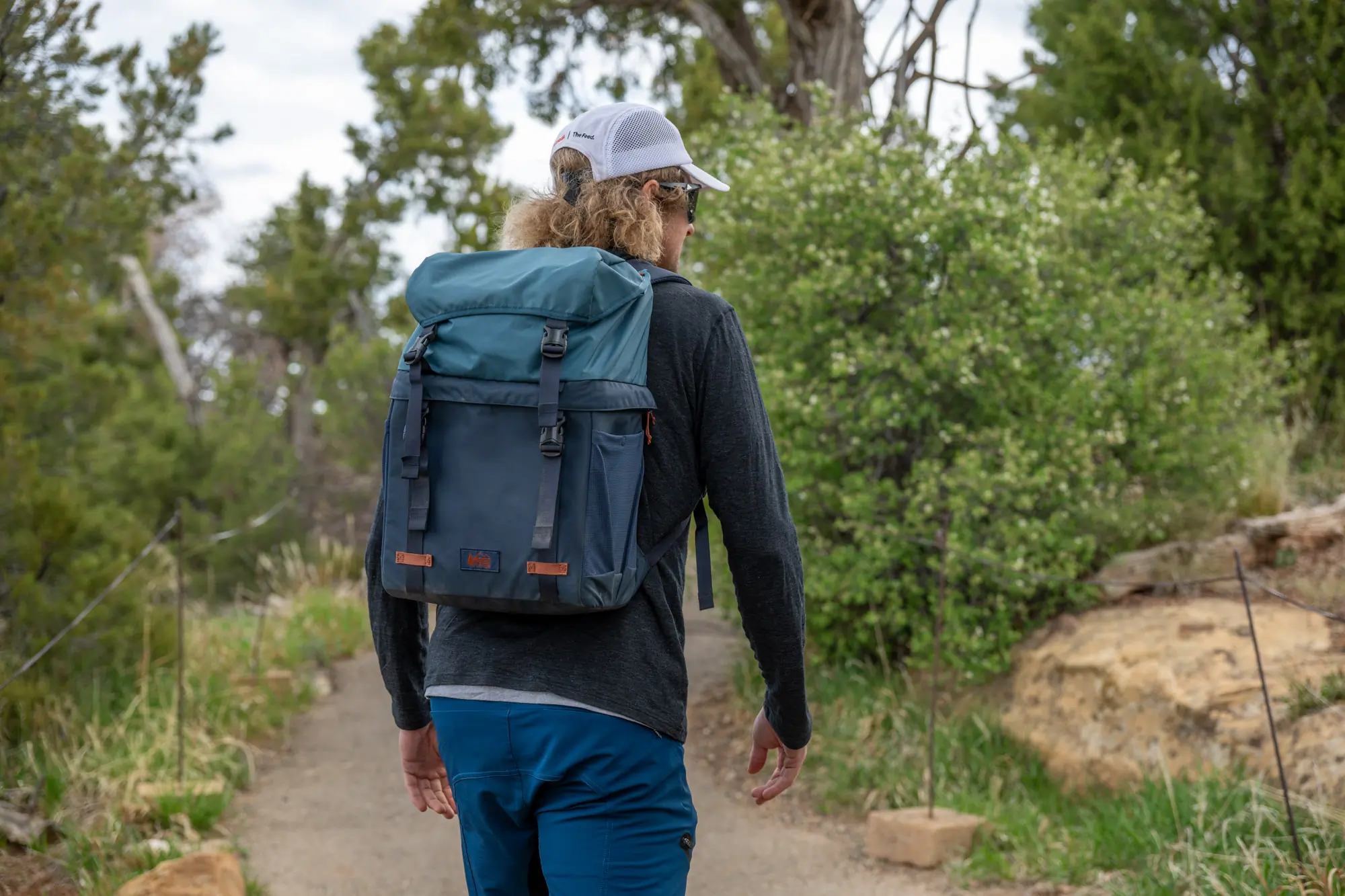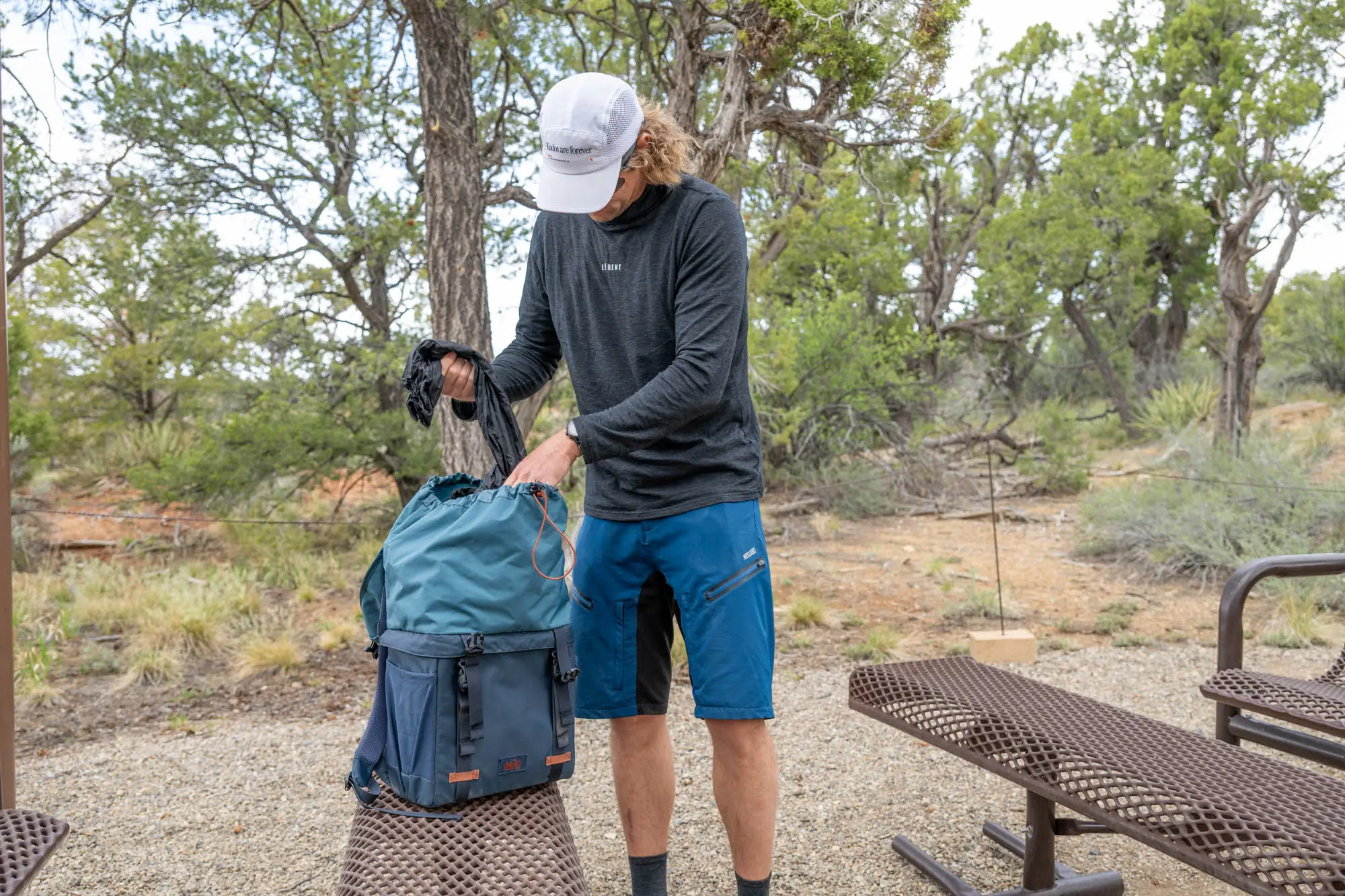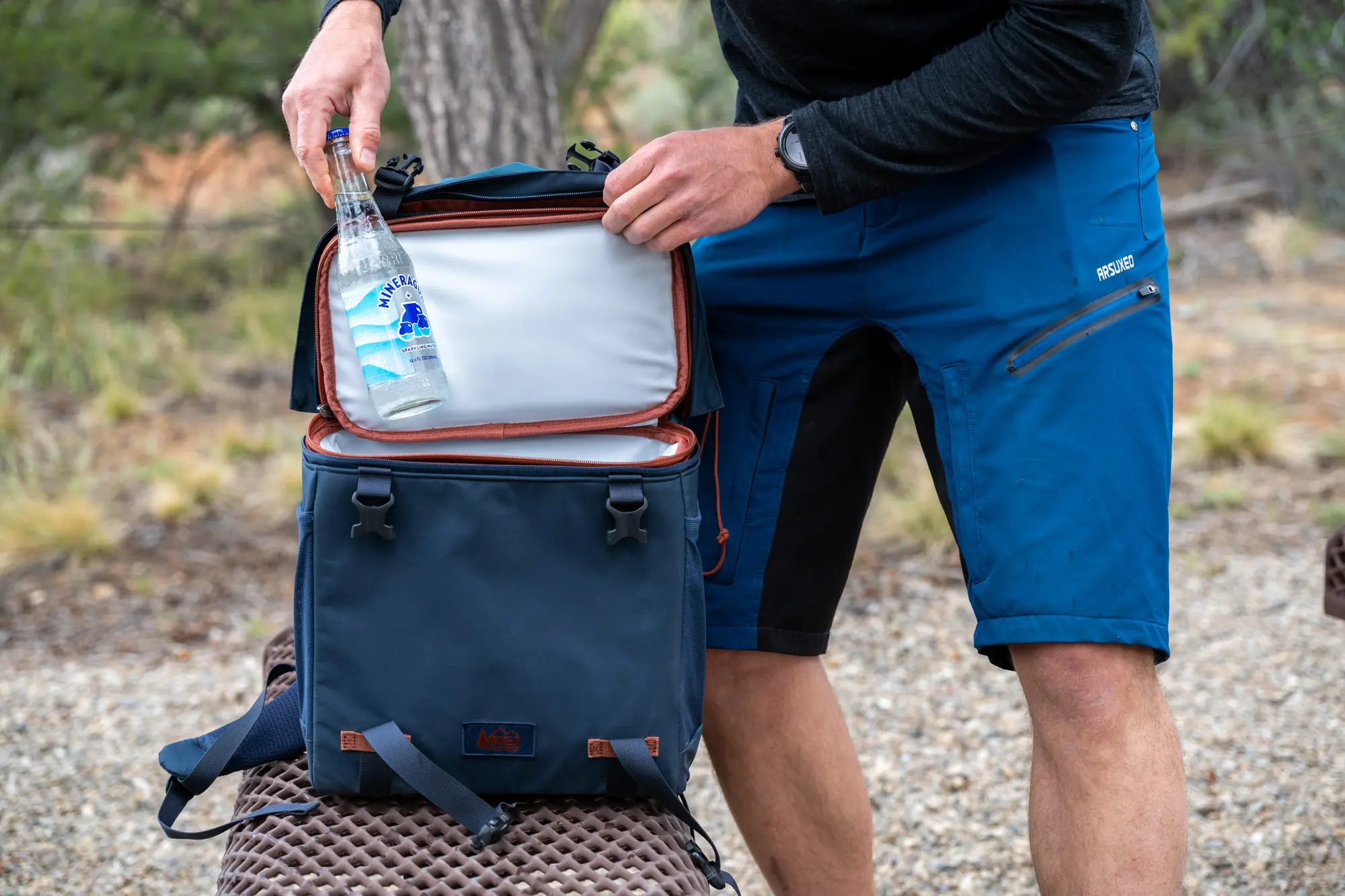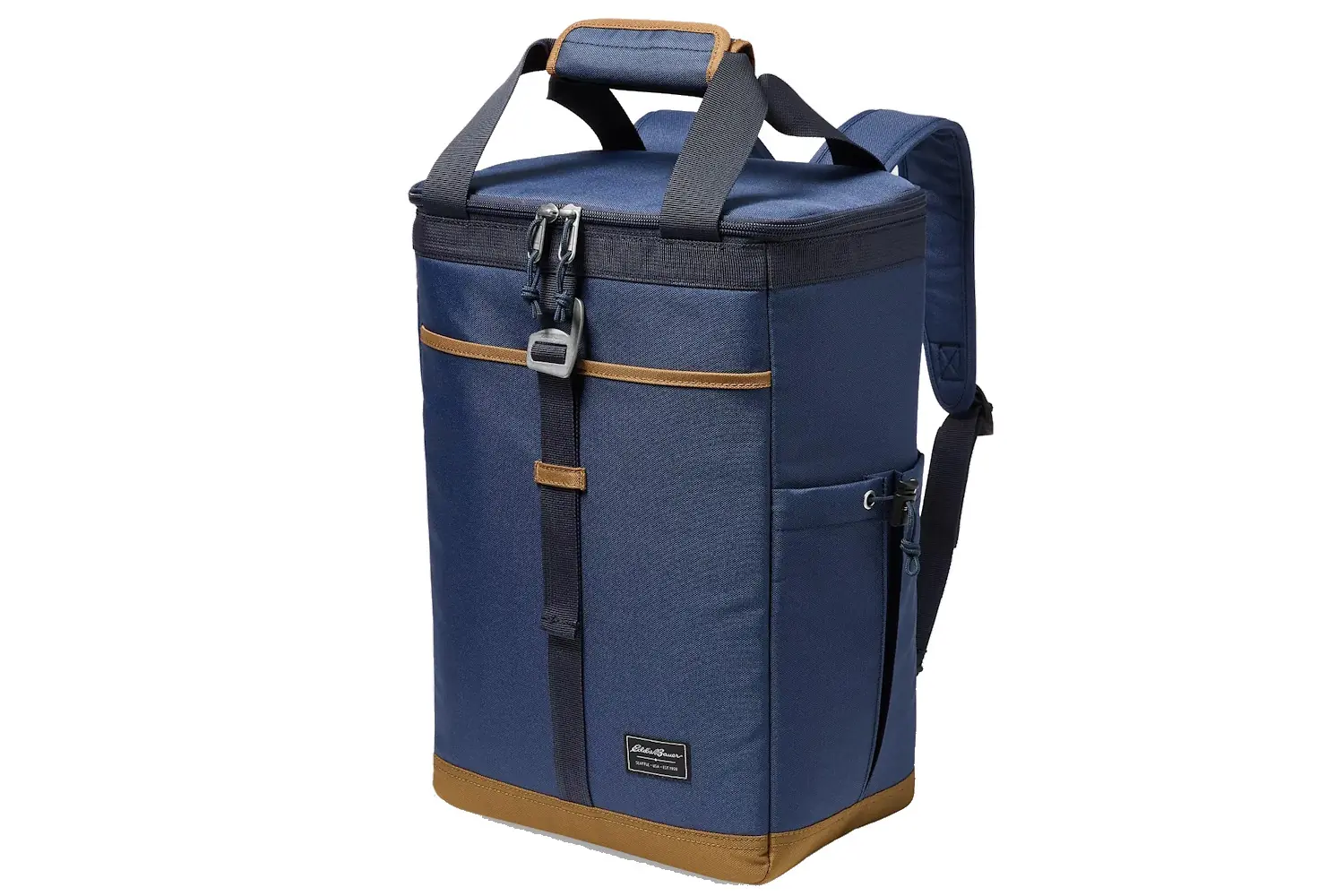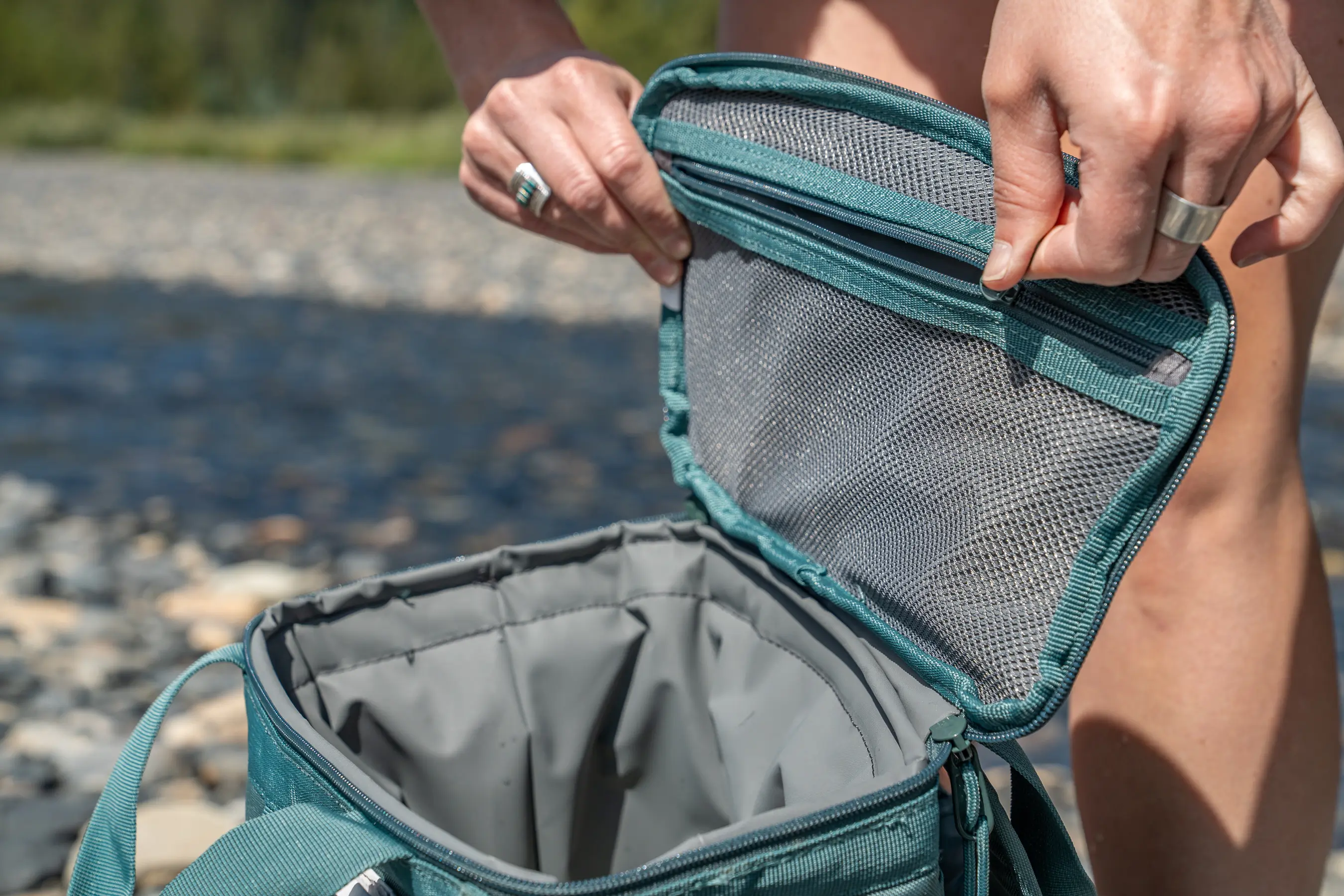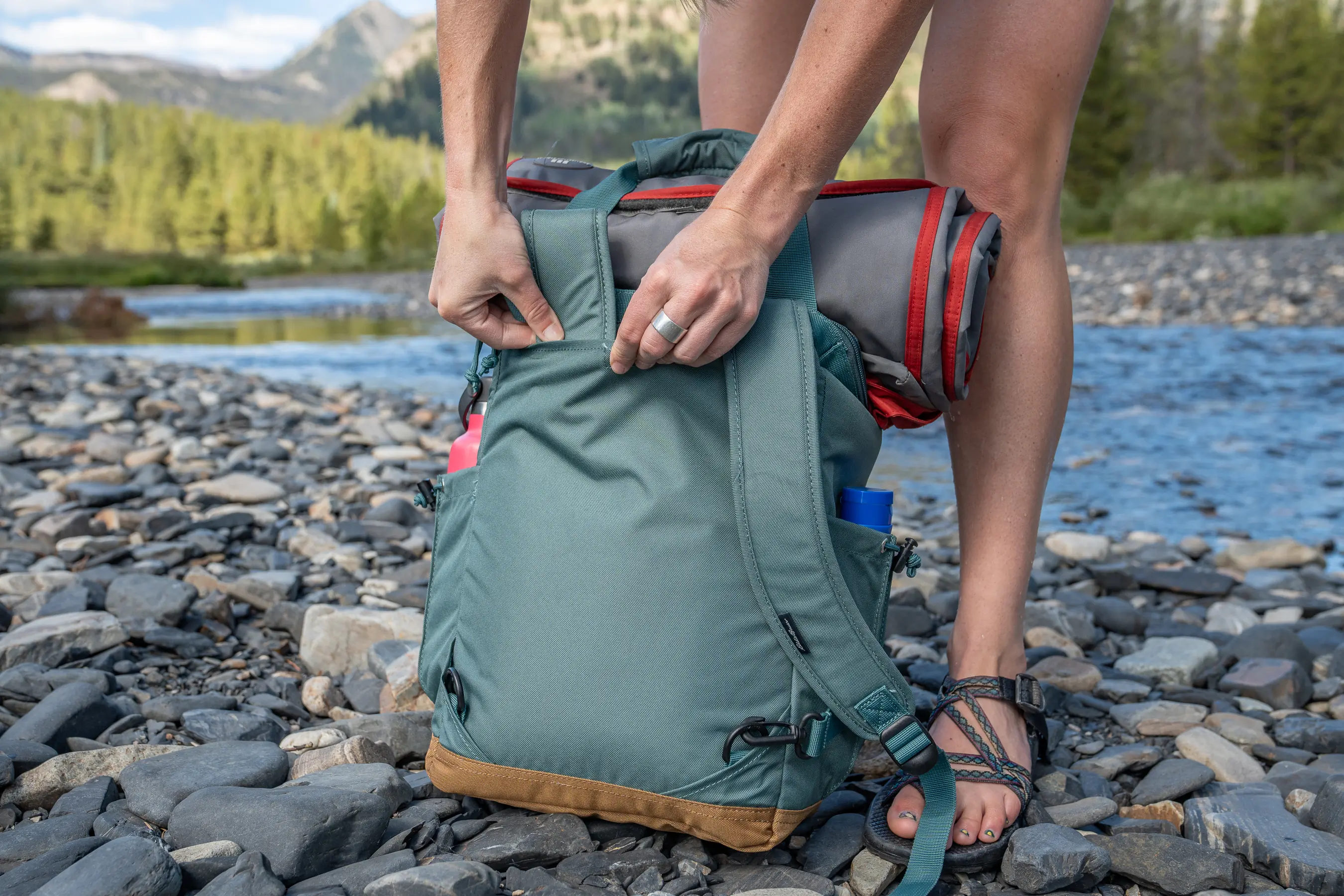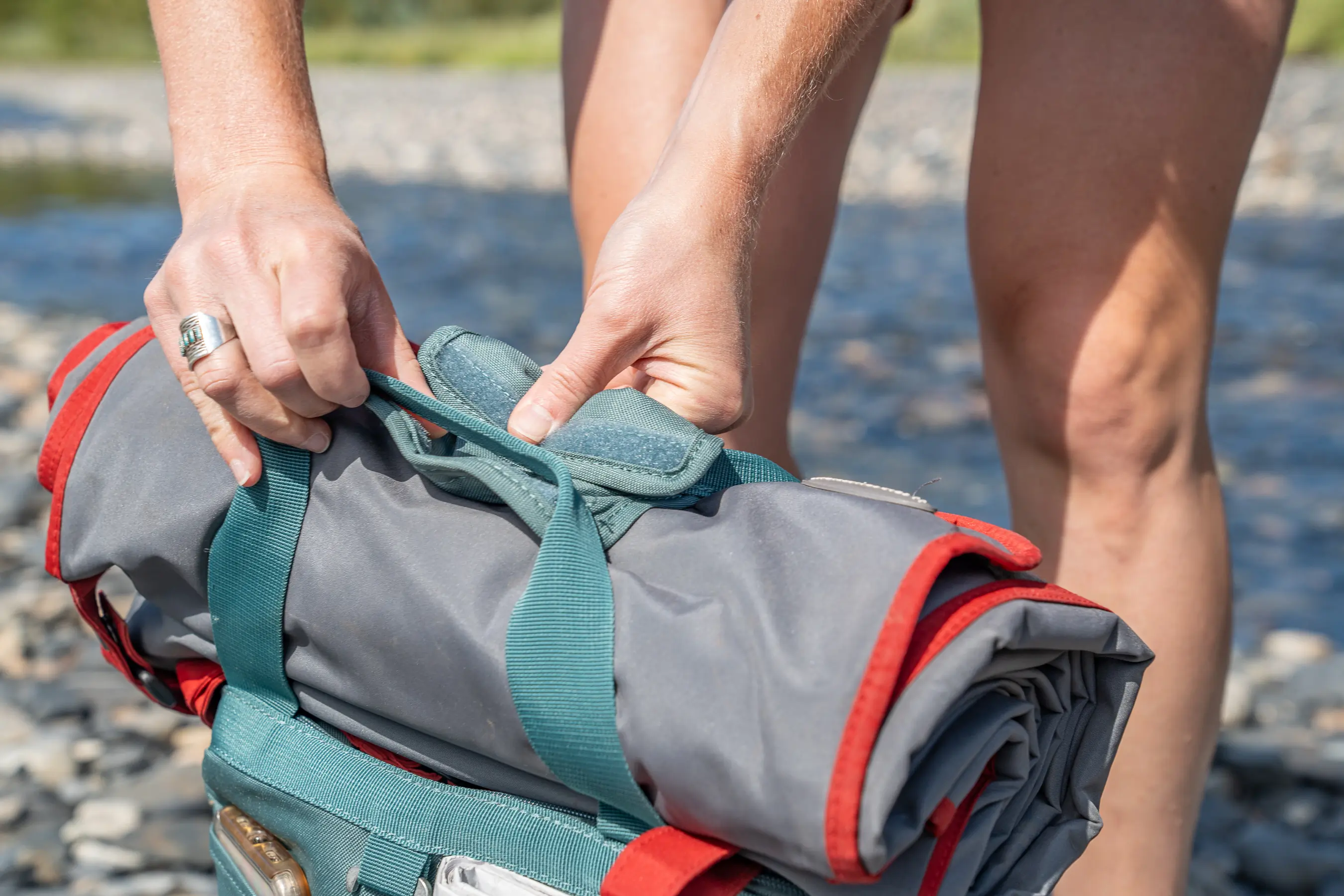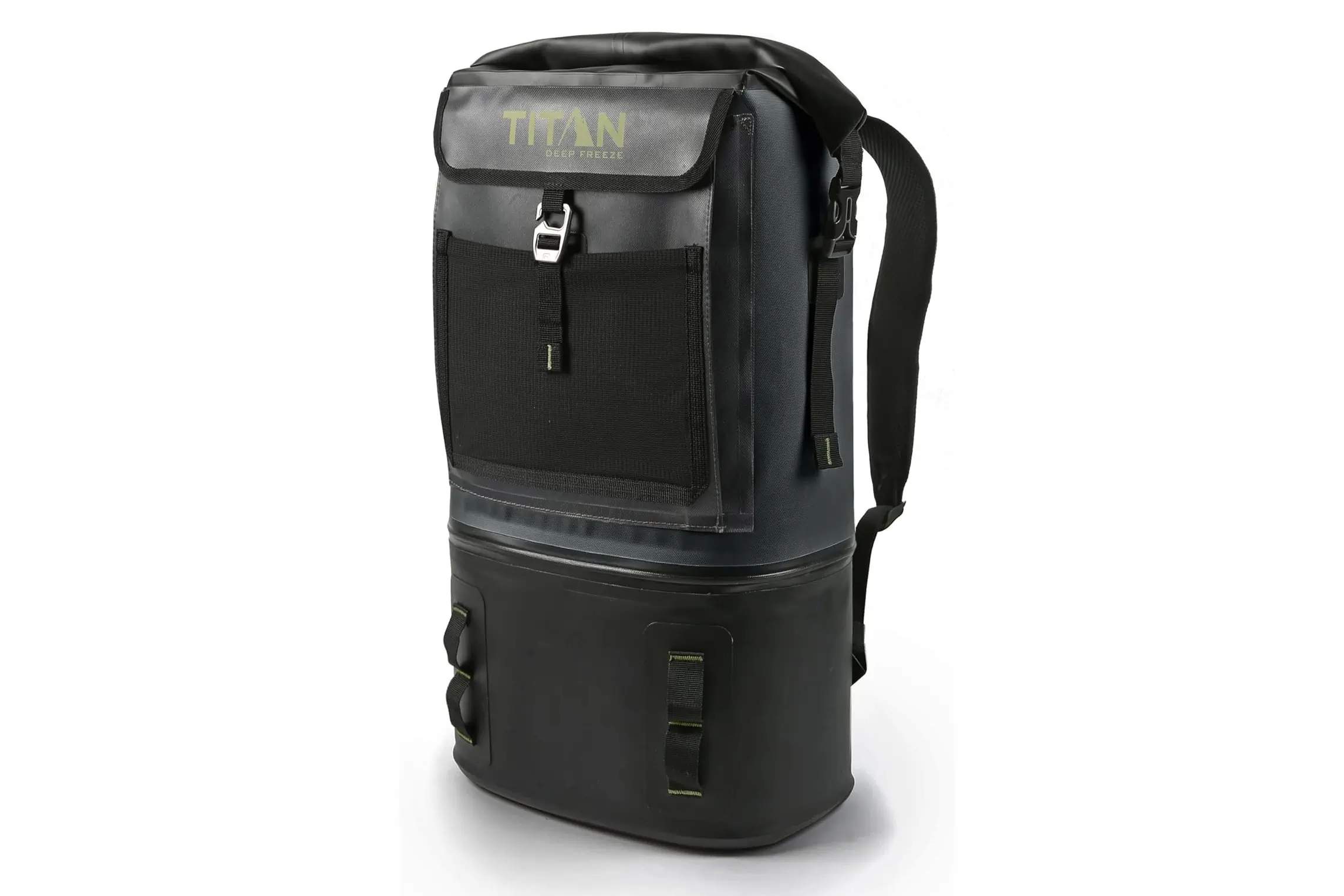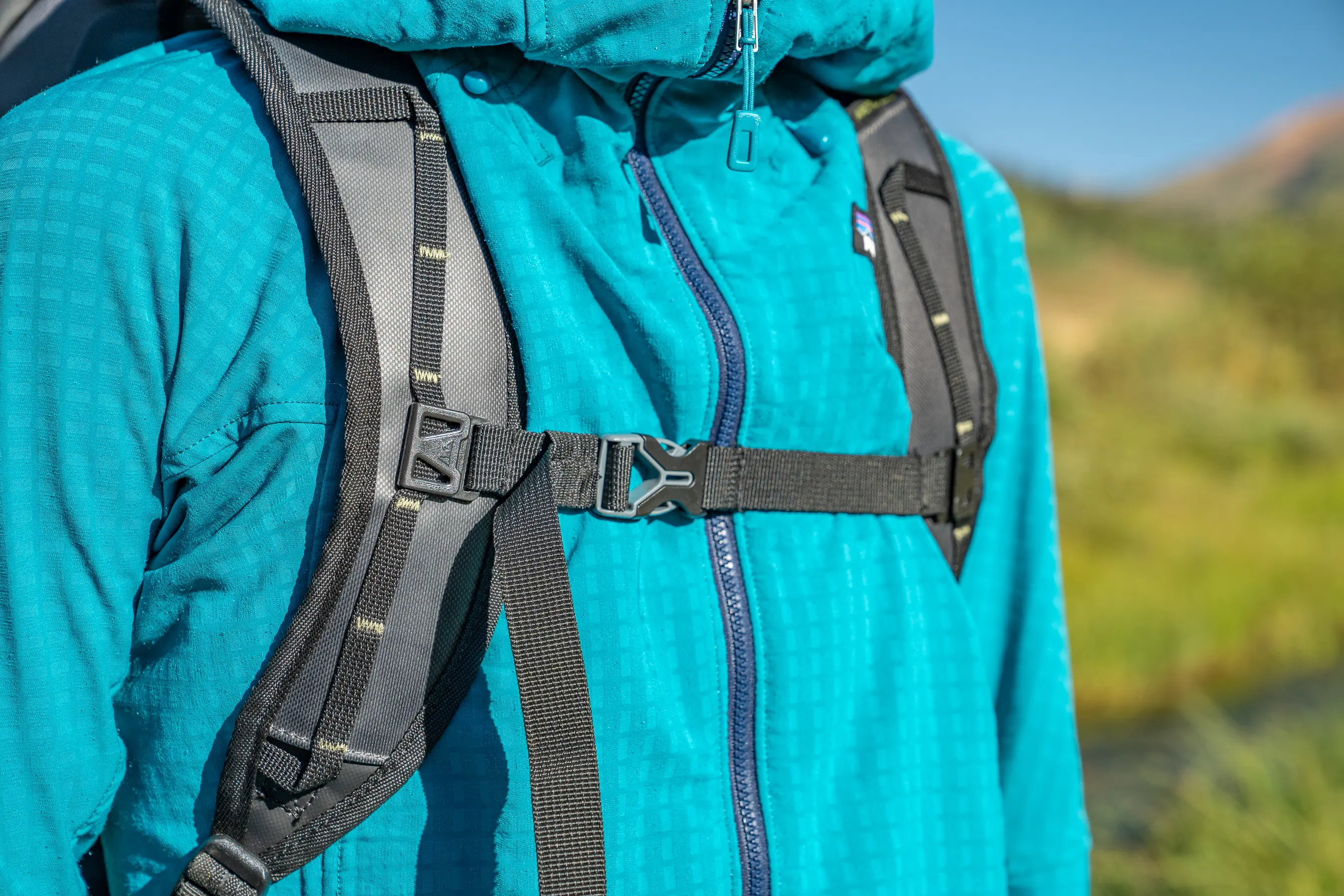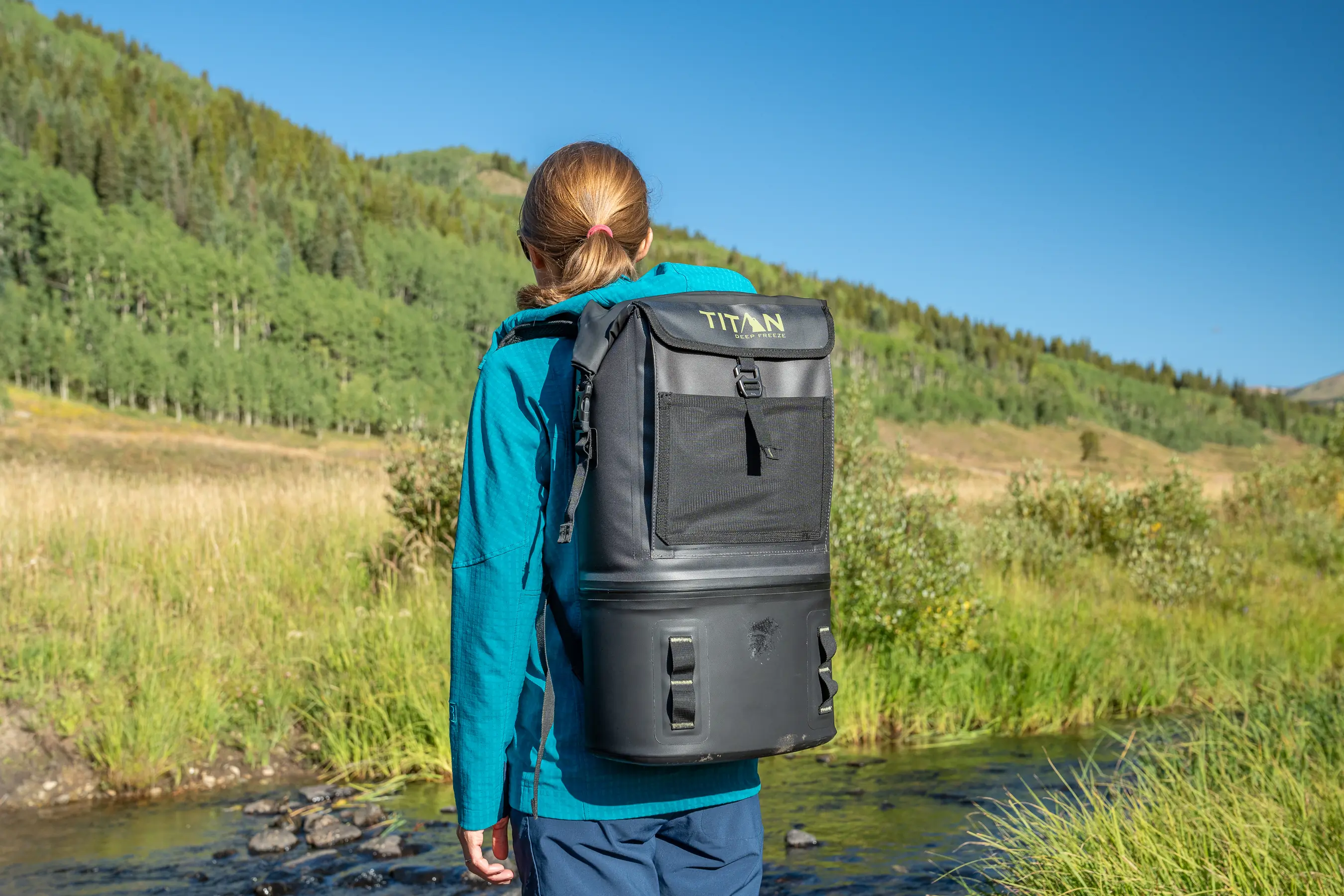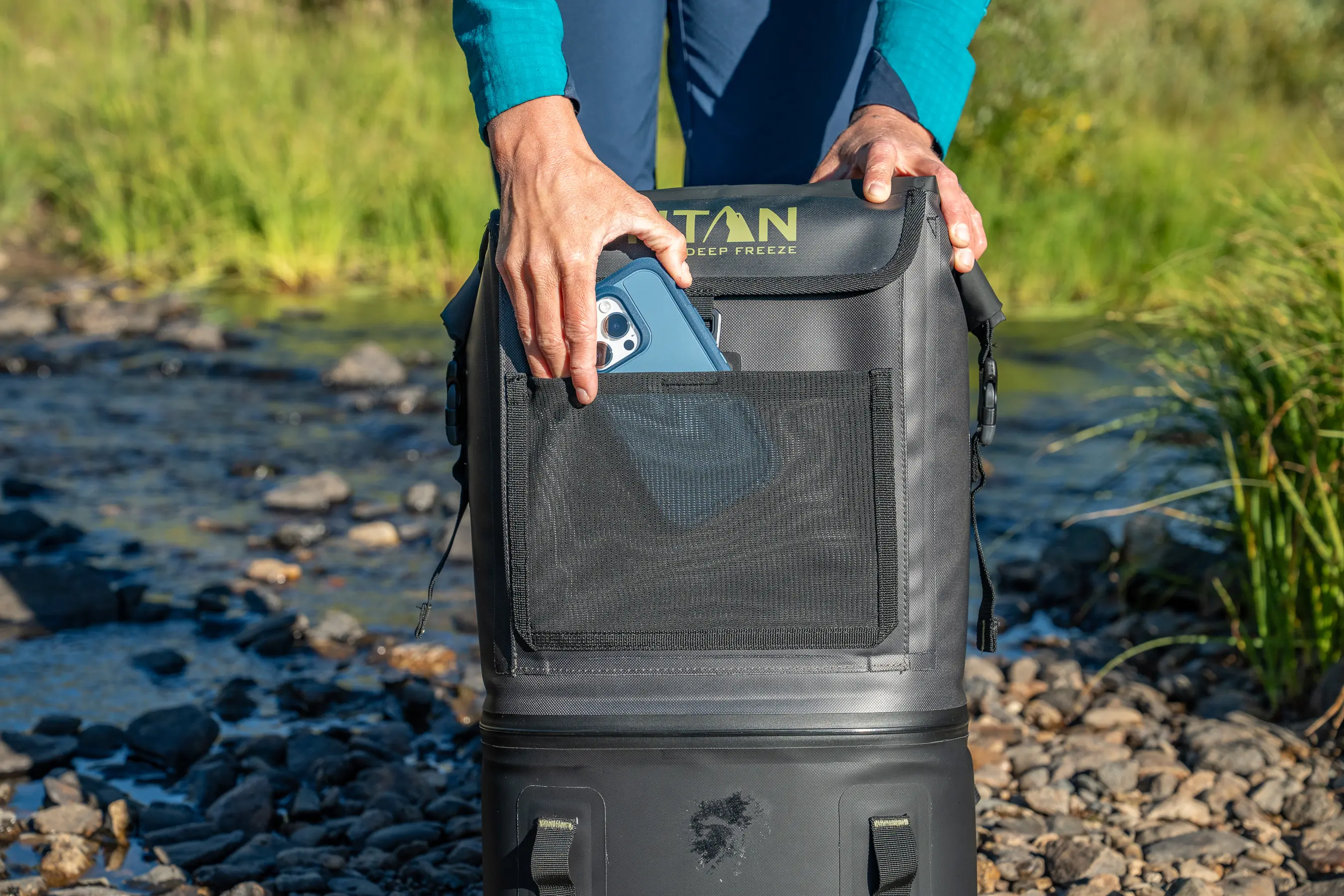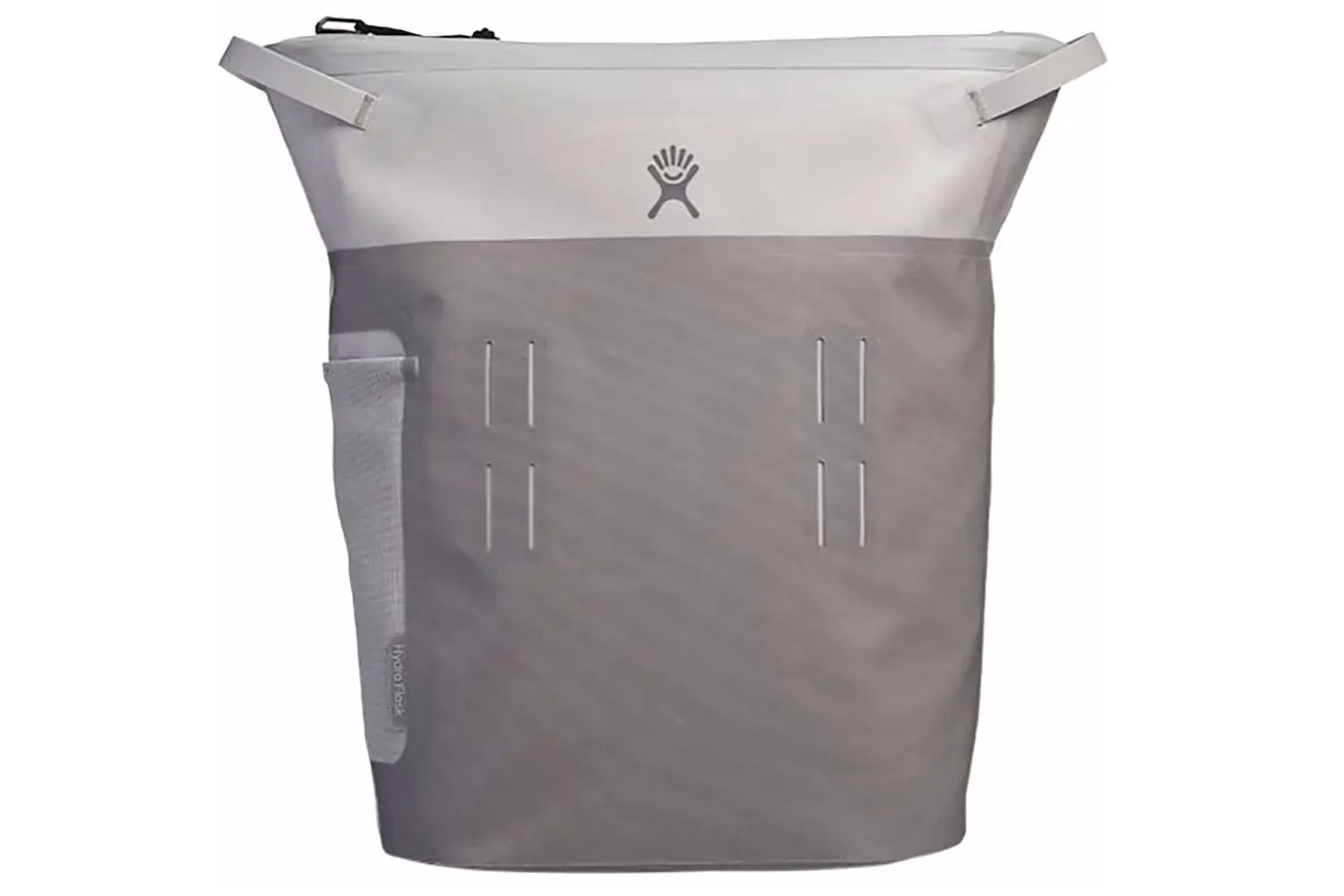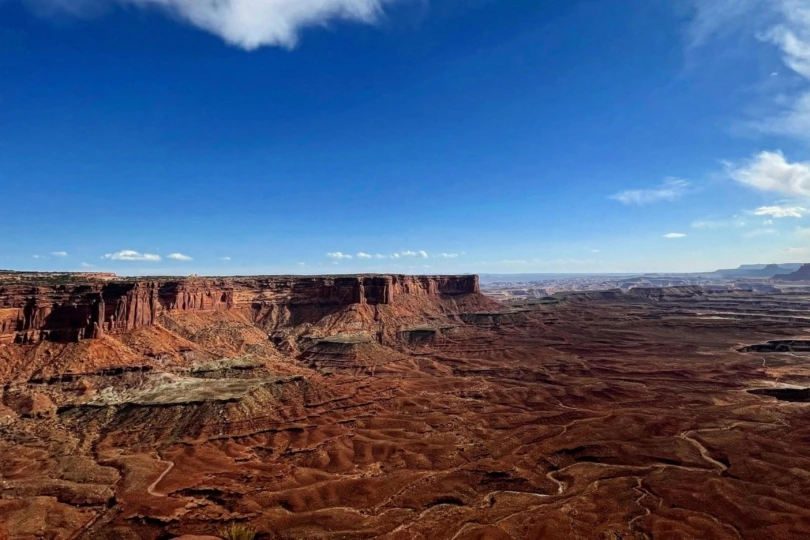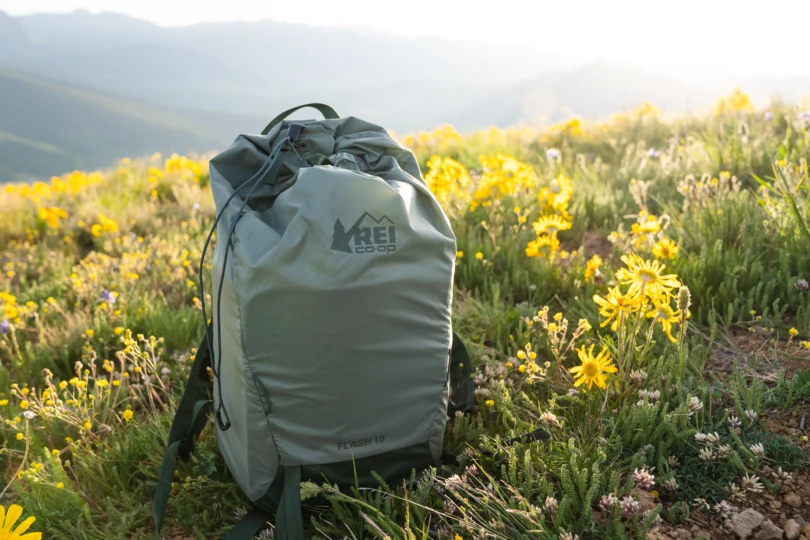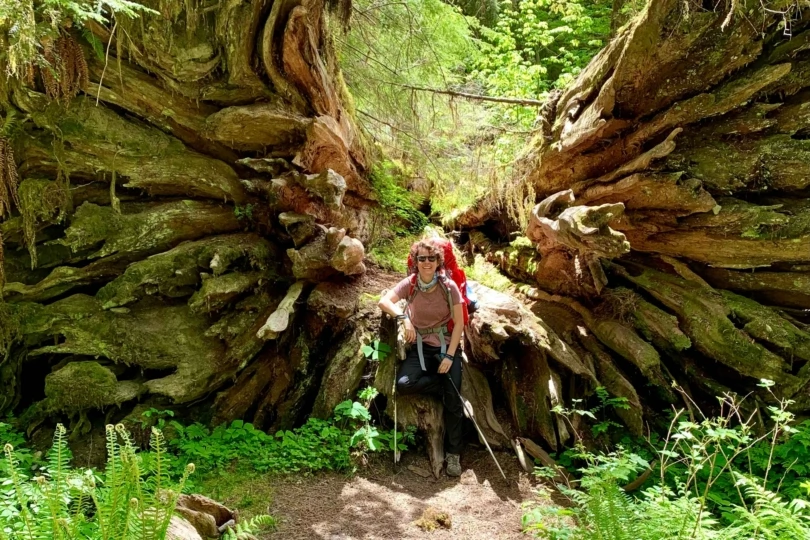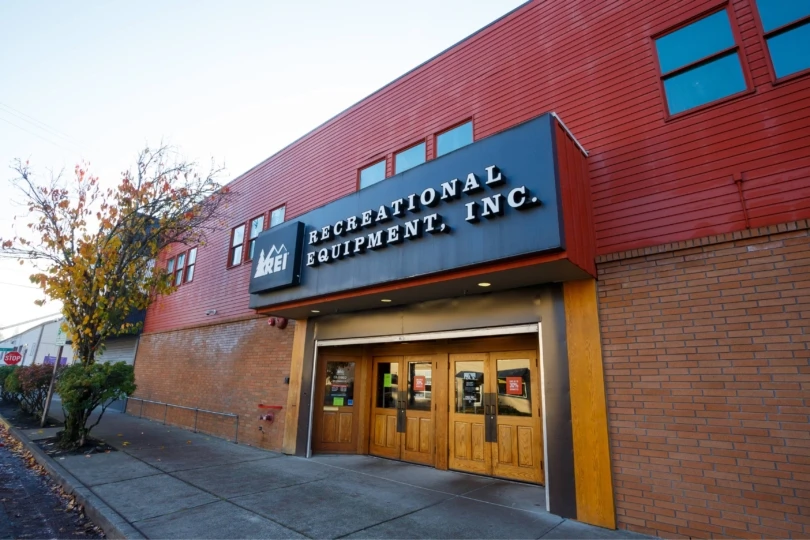Backpack coolers keep getting cooler. They’re more comfortable, powerful, and decked out than ever. If you’ve never considered one, carrying a backpack cooler is a convenient choice for hands-free, single-person transport of tasty refreshments. That could mean tailgating after a run club meetup, heading to a local softball game with your leashed dog, or riding a cruiser to a park BBQ.
These packs are useful when you have your hands full with kiddos or other gear. Or they can help commuters swoop their groceries for the day, like the ICEMULE Recycled Jaunt. Some built-out designs are great for day hikes and picnics at faraway alpine lakes. Others can be strapped down to a motorcycle, SUP, or raft for multiday and whitewater adventures, including the premium ICEMULE BOSS.
While all cooler packs are super-transportable and insulated, they come with a range of styles and distinct features. Since we first penned this guide in 2022, we’ve tested dozens of designs at the hands of eight outdoor athletes, guides, and experts (plus their families and clients). With surprising complexity, backpack coolers also offer a range of capacity, ice retention, and special characteristics to help make your outdoor experience more supported and better fueled.
Editor’s Note: We updated our Backpack Coolers guide on August 12, 2025, with field tests and ice retention tests for the Igloo Trailmate 24 Can Backpack, tested by outdoor expert Constance Mahoney, and the award-winning Coleman XPAND 30-Can Soft Cooler Backpack, tested by bike park build manager Dane Tudor. Senior Editor Morgan Tilton penned a new section, Number of Pockets & Attachment Systems, that breaks down the quantity and type of pockets in each backpack cooler.
The Best Backpack Coolers of 2025
Engel Roll-Top High Performance Backpack Cooler
- Size: 14" x 9" x 20"
- Capacity: 24 L
- Weight: 3 lbs., 8 oz.
- Ice retention test: ~4 days
Pros
- Large capacity
- Multiple carry methods
- Durable
Cons
- Heavy when packed full
- Expensive
Coleman XPAND 30-Can Soft Cooler Backpack
- Size: 16.5" x 11" x 8"
- Capacity: 24 L
- Weight: 2 lbs., 13.9 oz.
- Ice retention test: ~2.5 days
Pros
- Value price
- Plenty of stash space
- Large and expandable mesh side pocket
Cons
- Ice retention is fine
- Zipper is not waterproof
- No chest strap
Titan by Arctic Zone 24 Can Backpack Cooler
- Size: 11.81" x 10.24" x 19.75"
- Capacity: 32 L
- Weight: 4 lbs., 15.4 oz.
- Ice retention test: 3.5 days
Pros
- Great value
- Ample pockets and storage
- Titan Ice Wall ice packs included
Cons
- Lacks durability
- Lacks adjustment for longer hikes
ICEMULE BOSS
- Size: 17" x 11" x 24"
- Capacity: 30 L
- Weight: 7 lbs., 8 oz.
- Ice retention test: ~5.5 days
Pros
- Winning cooler backpack for ice retention
- Three waterproof, insulated exterior cargo pockets
- Great weight distribution
- Secure roll-top design keeps water in and out
- It floats!
Cons
- The tall, narrow cooler column makes nutriments harder to access
- Waterproof zippers on pockets are hard to open and close
- Pricier
REI Co-op Cool Trail Pack Cooler
- Size: 17" x 9" x 22"
- Capacity: 38 L
- Weight: 3 lbs., 3.2 oz.
- Ice retention test: ~3 days
Pros
- Helpful cooler tips are listed inside the pack’s lid
- Two-in-one design allows for non-cooler day pack conversion
- Retains ice well
Cons
- Pack does not easily stay upright when set down
- Zipper to cooler compartment is not waterproof
- Clips and zippers aren’t high end but get the job done
Under Armour 25-Can Sideline
- Size: 17.5" x 13" x 8.5"
- Capacity: 25 cans
- Weight: 3 lbs., 4.4 oz .
- Ice retention test: ~3 days
Pros
- Integrated hang hooks
- Coated base
- Crush-proof
Cons
- Zippers are not leak-proof
- Smaller pull tabs
Cotopaxi Hielo 24L Cooler Backpack
- Size: 20" x 14" x 9"
- Capacity: 24 L
- Weight: 2 lbs., 14 oz.
- Ice retention test: ~3.5 days
Pros
- Fun colors
- Great storage
- Body fabric made with 100% repurposed nylon-polyester
Cons
- Not the most comfortable when loaded up
- Expensive
Other Chill-Worthy Backpack Coolers We Tested
- Size: 14" x 12" x 19"
- Capacity: 8.5 L
- Weight: 3 lbs., 14 oz.
- Ice retention test: ~3.5 days
Pros
- Large opening and compartment
- Multiple carrying options
- Easy to clean
Cons
- Water leaks through zipper
- Not the most comfortable shoulder straps
- Size: 17" x 8" x 16"
- Capacity: 34L
- Weight: 4 lbs., 8 oz.
- Ice retention test: 4 days
Pros
- Ice retention of YETI pack coolers is tried and true
- Magnetic closure is very powerful
- Very sleek aesthetic
- Easy to clean
Cons
- Magnet strip and narrow opening of cooler isn't the easiest for grab and go
- Back panel isn't the most padded
- No side mesh carries for water bottles
- Size: 10”x9.5”x18”
- Capacity: 20 L
- Weight: 2 lbs.
- Ice retention test: 3 days
Pros
- Simple and sleek design
- Sustainable design
- Waterproof closure
- Zippered front pocket for valuables
- Impressive ice retention
Cons
- Expensive
- No back support
- Size: 22" x 12.5" x 8.5"
- Capacity: 31.5 L
- Weight: 2 lbs., 8 oz.
- Ice retention test: ~2 days
Pros
- Removable cooler insert
- Straps for bulky items
- Utilizes recycled and bluesign-approved materials
Cons
- Not great ice retention in hot weather
- Top pull string isn't easy to use
- Size: 15.7" x 10.6" x 5.5"
- Capacity: 20 L
- Weight: 1 lbs., 7 oz.
- Ice retention test: 2 days
Pros
- Great top handle for easy carry
- Easy-to-clean interior
- Simple, sleek design
Cons
- No waterproof zipper
- Limited ice retention in direct sunlight
- No outside zippered pockets.
- Size: 15.5" x 8.25" x 21.5"
- Capacity: 20L
- Weight: 3 lbs., 5.9 oz.
- Ice retention test: ~1.75 days
Pros
- Two compartments for separation of food/drink and different kinds of ice
- Comfortable back panel
- Waterproof closures on both compartments
Cons
- Limited ice retention
- Few accessories and pockets
- Size: 13" x 7.8" x 17.7"
- Capacity: 20 L
- Weight: 3 lbs.
- Ice retention test: ~2.5 days
Pros
- Major bonus of waterproof top zipper
- Pull handles help with closing zipper
- Excellent ice retention
Cons
- The adjustable chest strap needs a lower setting
- Excess shoulder straps could use an elastic attachment so they don’t dangle
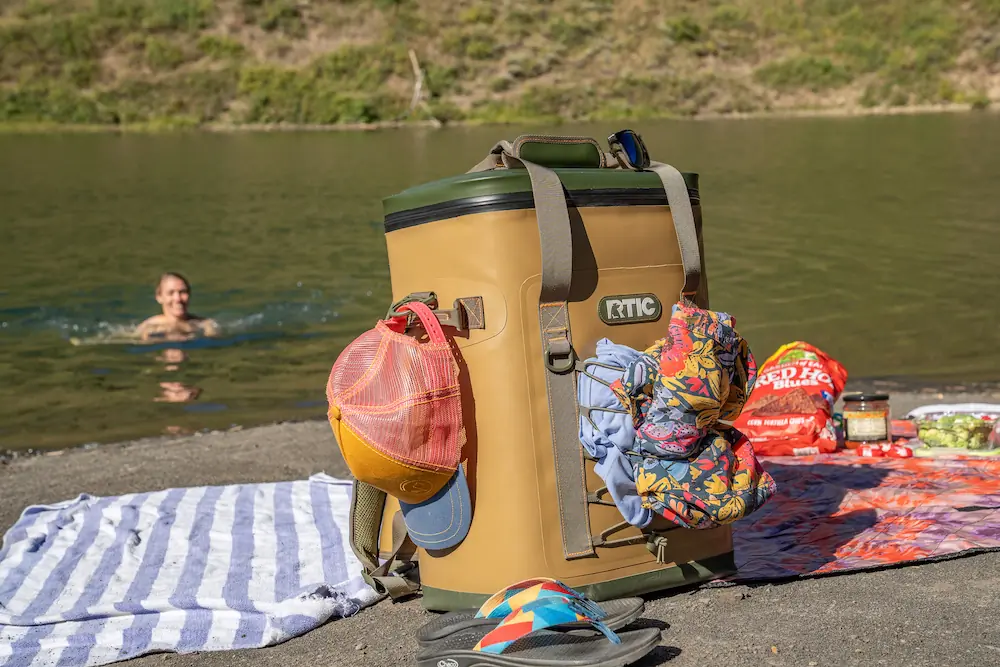
Backpack Cooler Comparison Chart
Scroll right to view all of the columns: Price, Size, Capacity, Weight, Ice Retention Test.
| Backpack Cooler | Price | Size (H x W x L) | Capacity | Weight | Ice Retention Test |
| ICEMULE BOSS | $380 | 17″ x 11″ x 24″ | 30 L | 7.5 lbs. | ~5.5 days |
| Titan by Arctic Zone 24 Can Backpack Cooler | $45 | 12″ x 10″ x 20″ | 32 L | 4.96 lbs. | ~3.5 days |
| Coleman XPAND 30-Can Soft Cooler Backpack | $49 | 16.5″ x 11″ x 8″ | 24 L | 2 lbs., 13.9 oz. | ~2.5 days |
| Engel Roll-Top High Performance Backpack Cooler | $190 | 14″ x 9″ x 20″ | 24 L | 3 lbs., 8 oz. | ~4 days |
| Eddie Bauer Recycled Bygone Backpack Cooler | $70 | 16″ x 11″ x 5.5″ | 20 L | 1.4 lbs. | ~2 days |
| Titan by Arctic Zone Deep Freeze Welded Backpack Cooler | $165 | 15.5″ x 8″ x 22″ | 20 L | 3.37 lbs. | ~1.75 days |
| REI Co-op Cool Trail Pack Cooler | $100 | 17″ x 9″ x 22″ | 30.5 L | 3 lbs., 4 oz. | ~3 days |
| Hydro Flask Day Escape Soft Cooler Pack | $200 | 13″ x 8″ x 18″ | 20 L | 3 lbs. | ~2.5 days |
| ICEMULE Recycled Jaunt | $175 | 10” x 9.5” x 18” | 20 L | 2 lbs. | ~3 days |
| YETI Hopper M12 Soft Backpack Cooler | $275 | 17″ x 8″ x 16″ | 34L | 4.5 lbs. | ~4 days |
| Igloo Trailmate 24 Can Backpack | $129 | 15″ x 12″ x 19″ | 8.5 L | 3 lbs., 14 oz. | ~3.5 days |
| Under Armour Sideline 25 Can Backpack Cooler | $134 | 17.5″ x 13″ x 8.5″ | 25 cans | 3 lbs, 4.4oz. | ~3 days |
| REI Co-op Cool Trail Split Pack Cooler | $85 | 22″ x 12.5″ x 8.5″ | 31.5 L | 2 lbs., 8 oz. | ~2 days |
| Cotopaxi Hielo 24L Cooler Backpack | $200 | 20″ x 14″ x 9″ | 24 L | 2 lbs., 14 oz. | ~3.5 days |
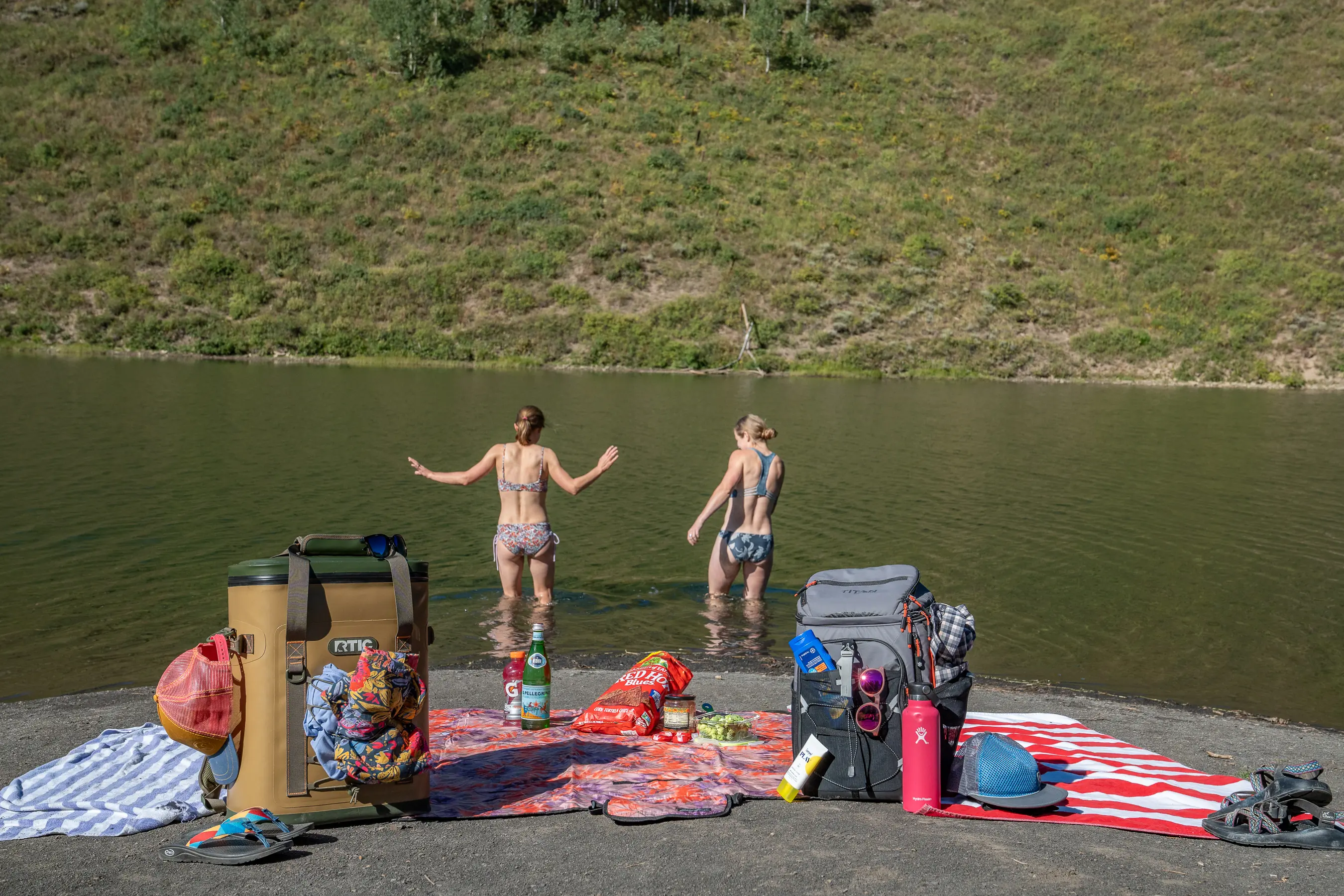



How We Tested the Best Backpack Coolers
Our team has developed backpack cooler guides for several years, objectively testing dozens of coolers in the field, from whitewater raft trips to fly fishing adventures and crewing 100-mile ultrarunning races. For this guide, we examined the most popular, highly acclaimed, and bestselling backpack coolers with diverse capacities, ice retention ability, and a wide price range.
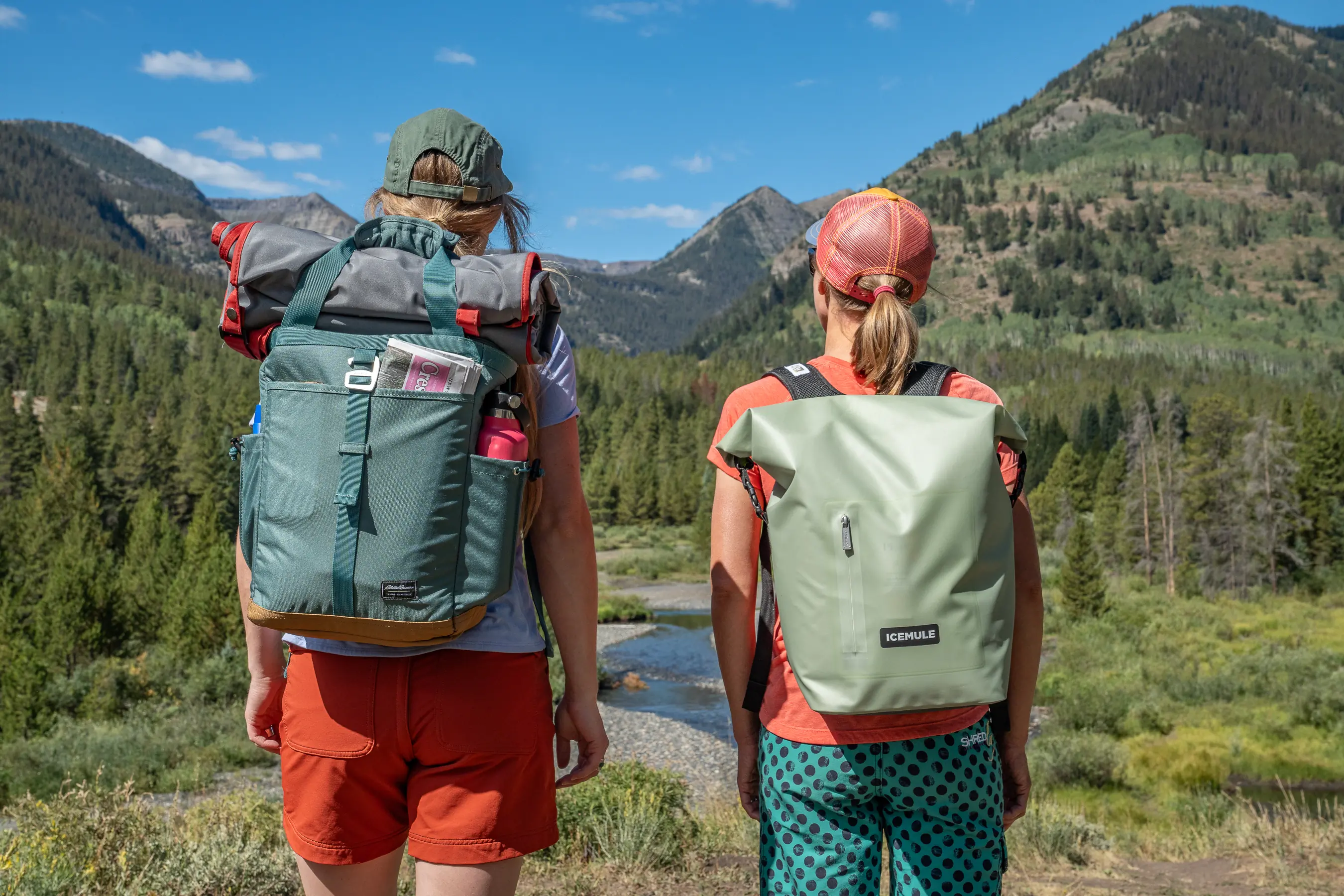



Our Expert Testers
Senior Editor Morgan Tilton developed and has managed the backpack coolers buyer’s guide since 2022, with the help of seven local outdoor experts testing backpack coolers in the field. She’s worked with a range of athletes, including a professional fly fishing and whitewater raft guide, an adventure photographer, and traveling ultra and trail runners.
Gear tester and writer Kylie Collins is an avid outdoorswoman who believes that high-quality gear makes outdoor adventures all the more fun. She has lived in the Elk Mountains of Colorado since 2010 and enjoys trail running, pack rafting, fly fishing, mountain biking, Nordic skiing, and alpine touring. Collins has been putting gear through the wringer for GearJunkie since 2019.
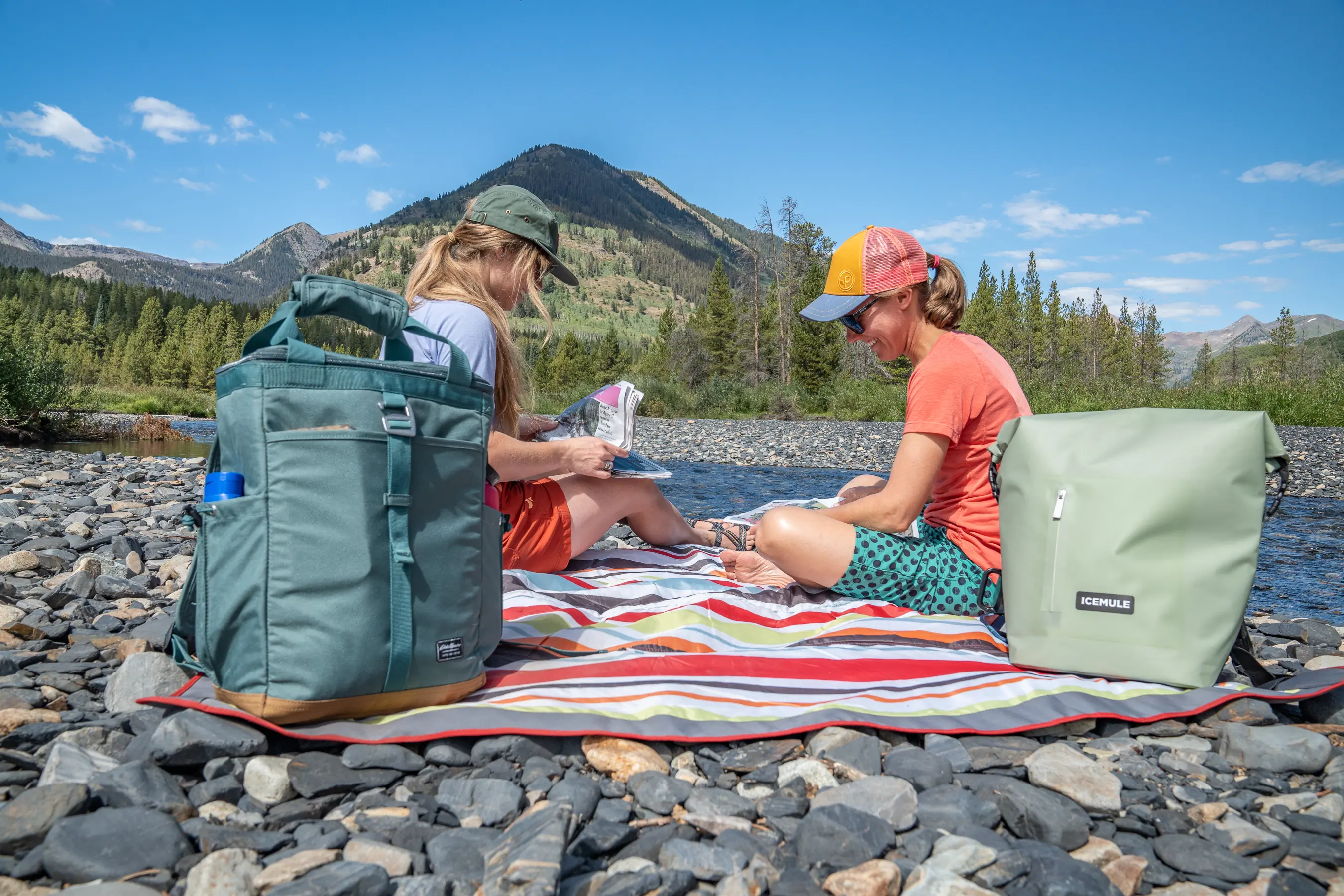



Dedicated outdoor enthusiast Constance Mahoney explores trails, goes fly fishing, and crews 100-mile races: She knows when to invest in high-quality gear and when budget-friendly options will do the job. Constance has been a GearJunkie contributor since 2019.
Professional athlete and gear analyst Dane Tudor is a manager for Gravity Logic, where he designs mountain bike trails and operates machinery when he’s not big mountain freeskiing. For the heavy lifting, Tudor takes along soft coolers and backpack coolers, carrying thousands of calories into the woods for 12-hour days building bike parks throughout North America.
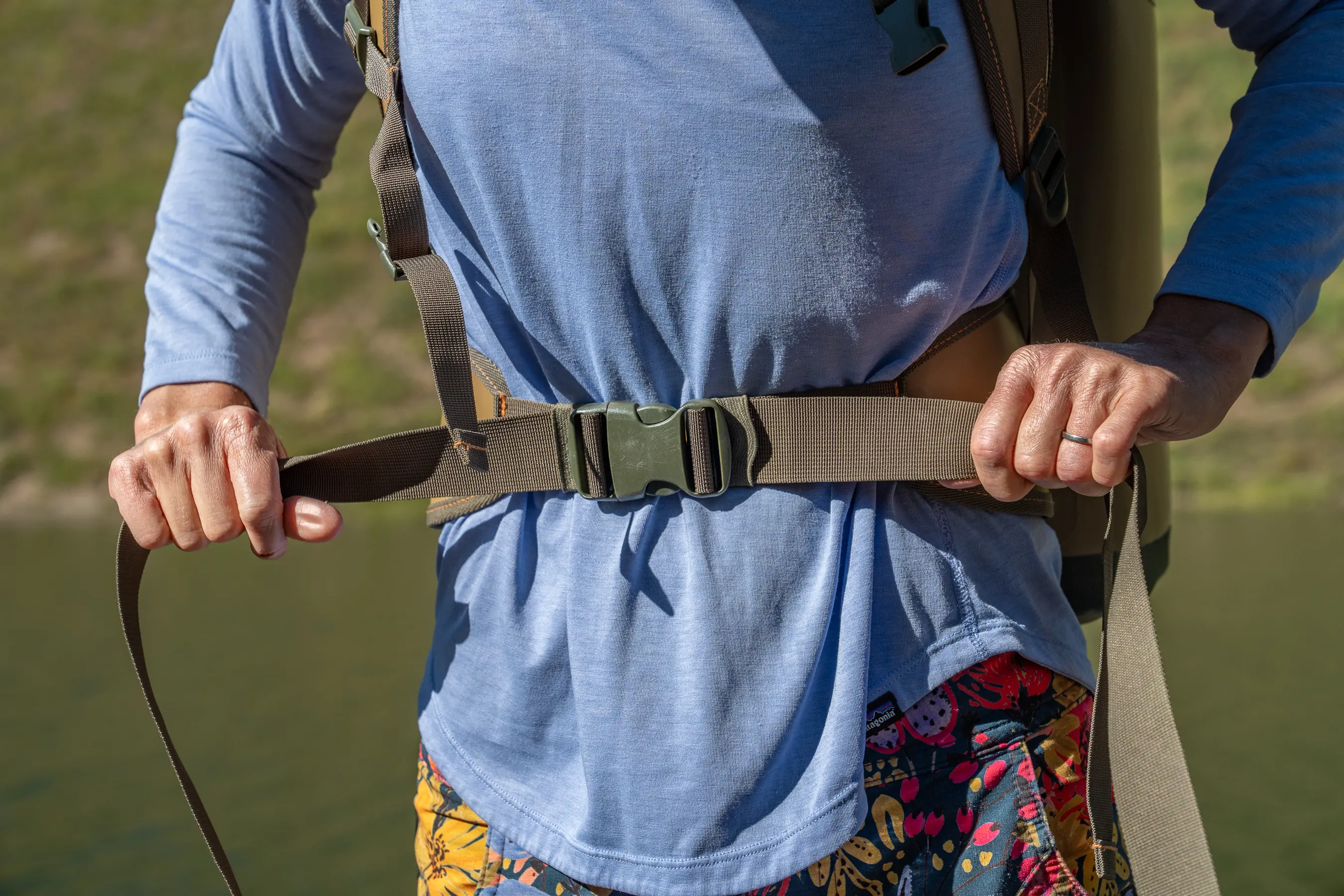



Our Testing Grounds
Our crew put these cooler packs to the grindstone in a range of conditions from sunny high-alpine hikes in Colorado to pontoon boating in Wisconsin, camping in Wyoming’s Teton Range, and bike park building in British Columbia’s Monashee Mountains. We also used them while crewing a 100-mile race through the Crazy Mountains of Montana, among other ultra-trail races in Colorado.
Our Testing Process
We perform a controlled in-house ice retention test to verify brand claims. For the experiment, we filled each cooler 70% with fresh, frozen cubed ice and set them in a shaded, dry indoor space at about 65 degrees Fahrenheit.
Throughout the tests, we periodically check and make notes regarding the melt rate, leaks, and condensation. Each reported time is based on when 100% of the ice was converted to water.
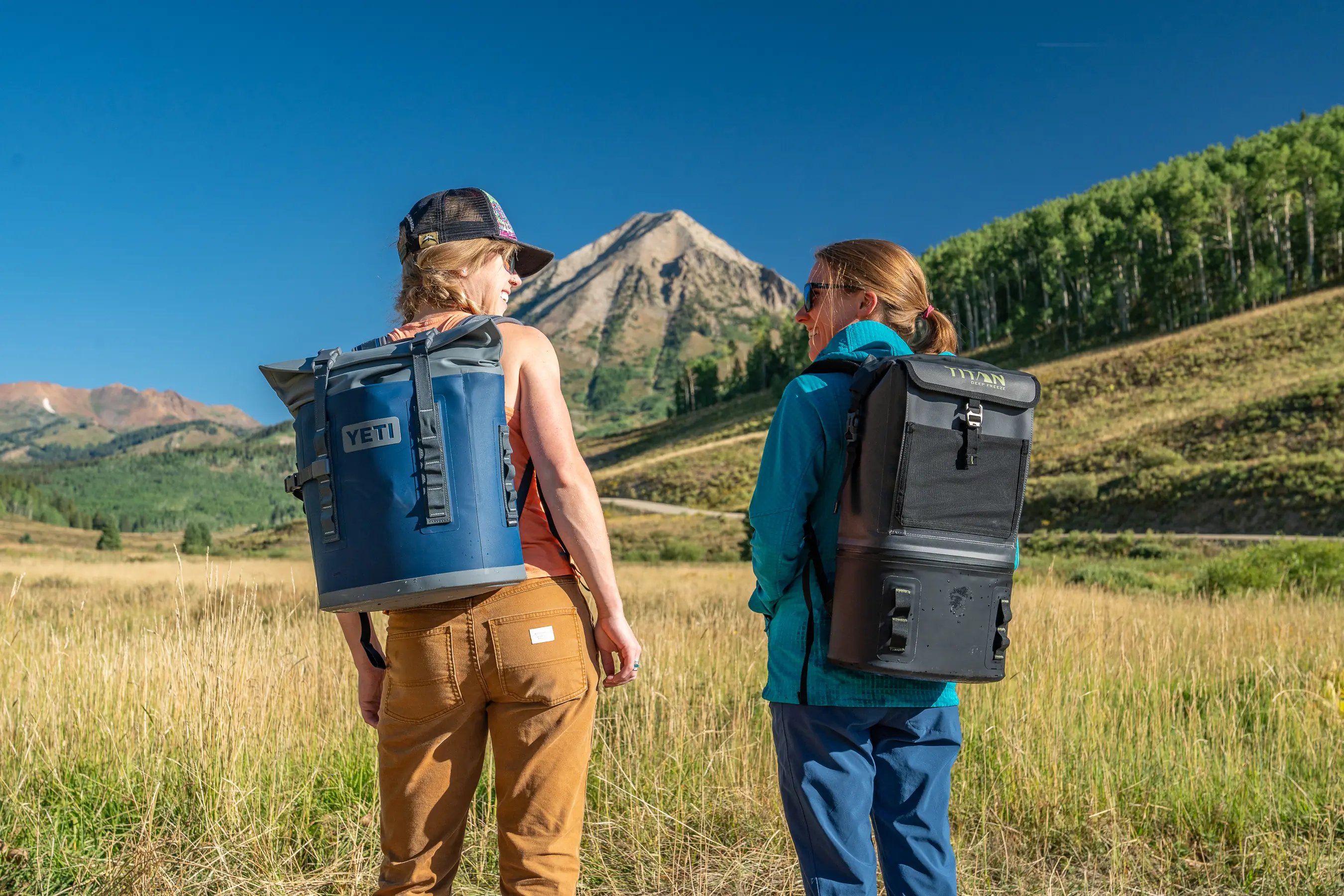



Buyer’s Guide: How to Choose a Backpack Cooler
Storage Capacity
Choose a cooler backpack based on the storage capacity and type of back support you need. The larger the group, the more cargo room you’ll want.
A wide range of storage capacity exists among backpack coolers. We’ve highlighted the Eddie Bauer Recycled Bygone Backpack Cooler on the more compact end at 20 L, and the 30 L ICEMULE BOSS among the larger options. The majority of cooler packs range from 20 to 29 L.
To give you an idea, we found that a 29L pack offers more than enough space for a two-person, single-day fishing trip. And the Hydro Flask Day Escape Soft Cooler Pack fits enough nutriments for a four-person hiking group.
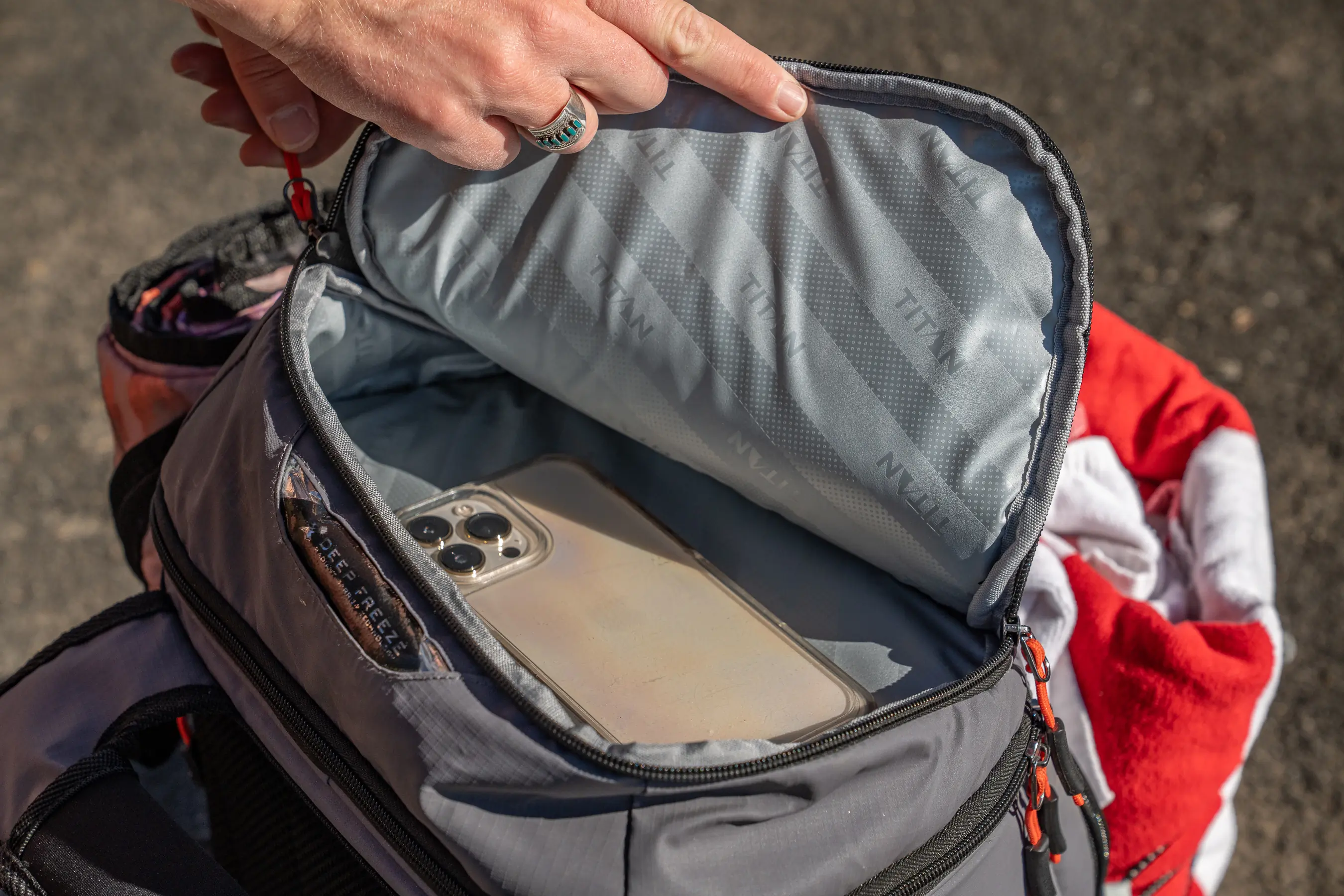



The exterior dimensions of each pack will give you a solid picture of the available storage space. However, the interior dimensions of each pack will be a tad smaller, depending on the type and rigidity of the insulation.
Depending on the trip, a backpack cooler might be a good addition to a sturdier, stationary cooler. For long road trips with the camper trailer, you might opt for a variety of hard and soft coolers (include one you can carry on a hike) for each day’s adventure. If you’re posting up at a campsite for several days, need a cooler on wheels, or are serving a large picnic, check out our Best Coolers guide, too.
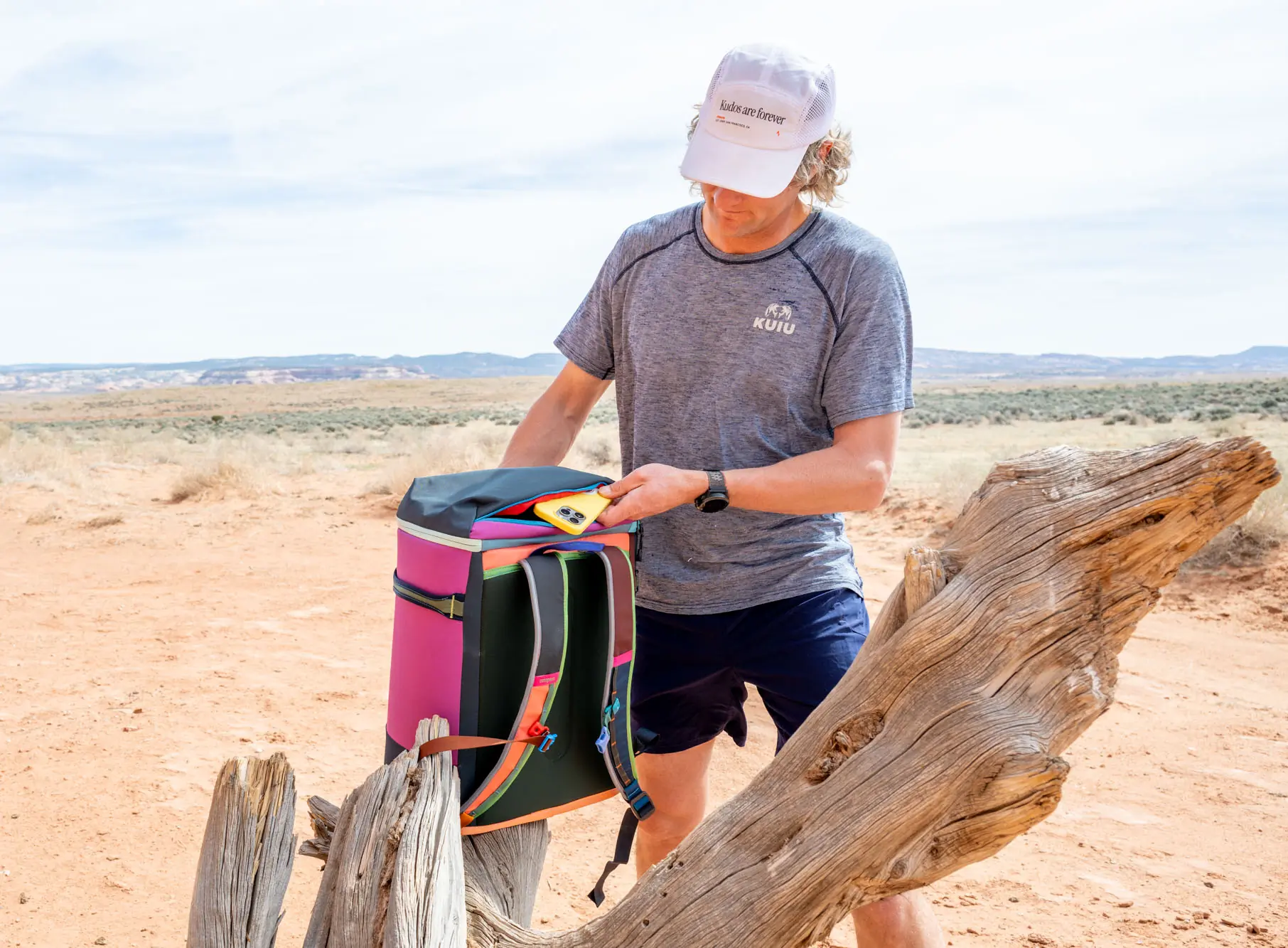



Backpack Cooler Compartments & Pockets
A handful of our favorite backpack coolers have separate interior compartments or exterior pockets for dry storage, a portion of which are non-insulated. Some of our favorite backpack coolers had tons of interior and exterior stash pockets, while other favorites had few or none. While the pockets didn’t make or break a cooler for us, they changed the experience and were helpful in different applications.
For instance, you could pack a book in the side pocket of the ICEMULE BOSS. For water trips, non-waterproof and non-secure exterior pockets were not super helpful. But for solo trips, exterior pockets were a must.
The Titan by Arctic Zone 24 Can Backpack Cooler is full of stash pockets. This pack makes it easy to only bring one bag for a short or solo trip, picnic, or day at the beach.
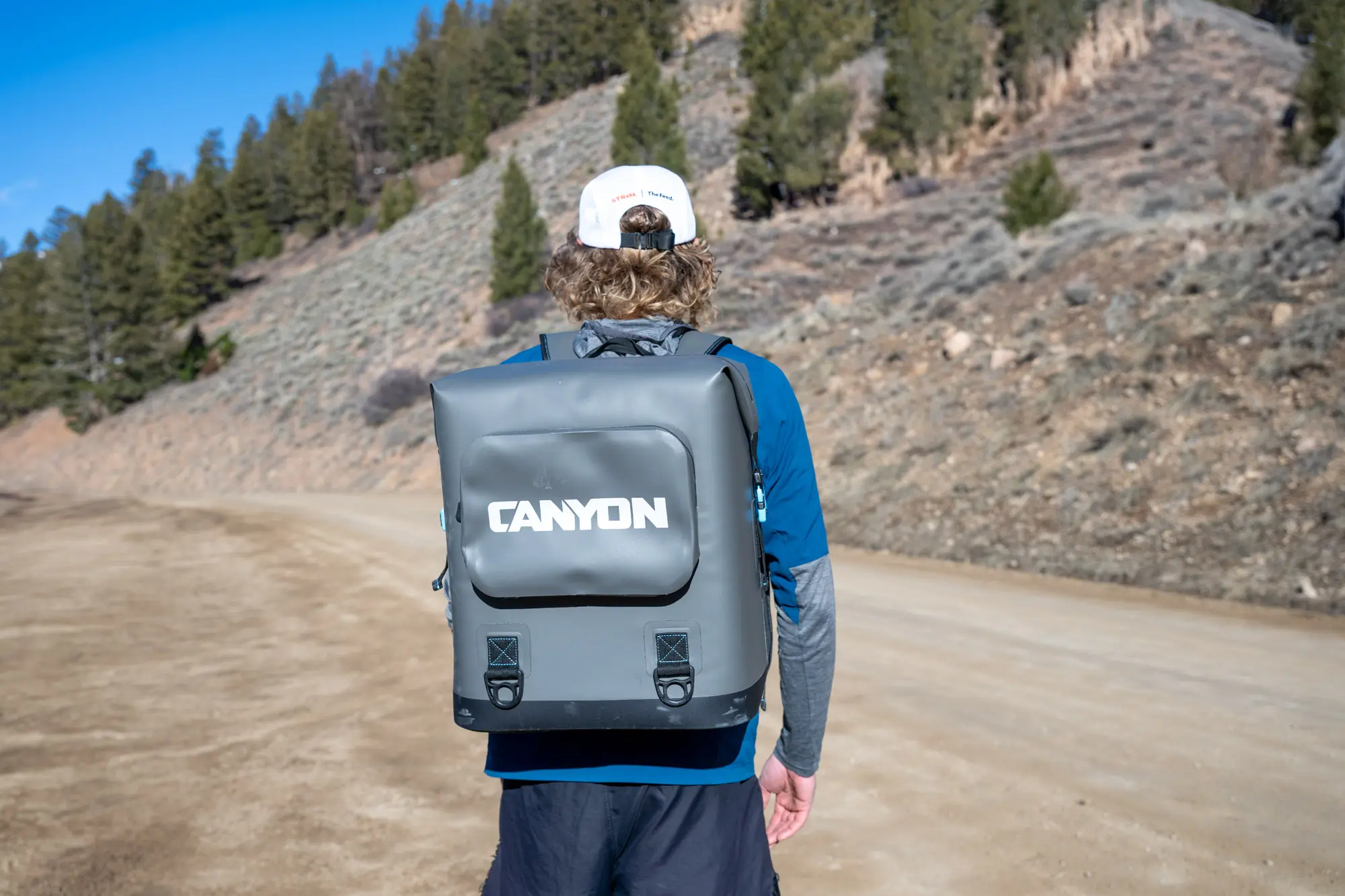



But the ICEMULE Recycled Jaunt is one of our favorite sleek and streamlined coolers, and the exterior zipper pocket is essential for a cellphone and keys. The Eddie Bauer Recycled Bygone Backpack Cooler has an interior divider pocket, which we appreciate for small bagged items and condiment packets.
That said, a lot of backpack coolers don’t have any exterior pockets at all. Some folks prefer that streamlined, simple approach. Others need at least one mesh side pocket for a water bottle and a pocket to stash a cellphone and keys.
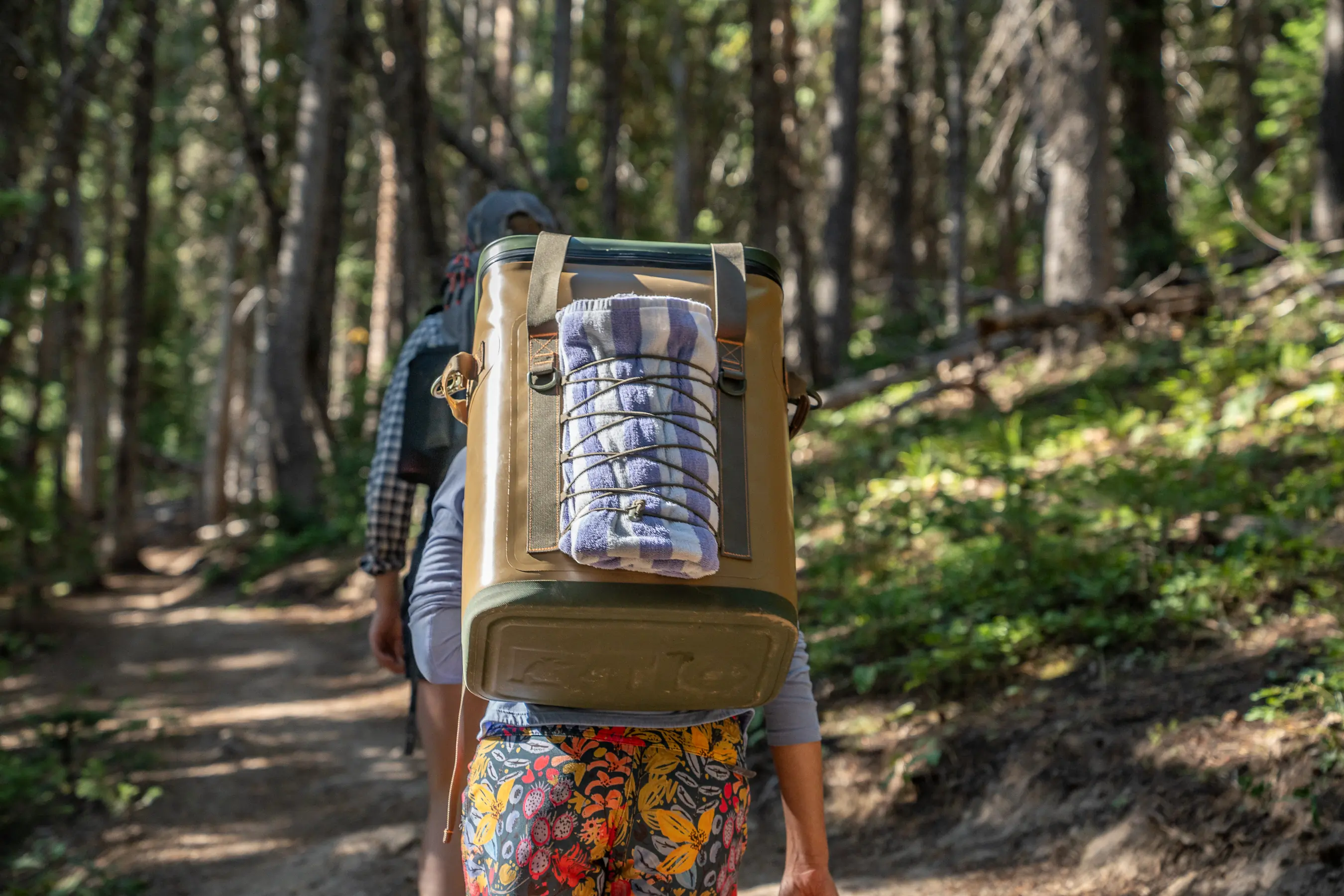



Number of Pockets & Attachment Systems
While the ICEMULE BOSS has fewer overall pockets than other backpack coolers, it’s the only product with three zippered pockets, bumping it up in rank. Here are the pouches in each backpack cooler from the greatest quantity to the leanest:
- Titan by Arctic Zone 24 Can Backpack Cooler — 2 zippered pockets, 2 mesh pockets, 1 envelope pocket with buckle, front bungee cord
- ICEMULE BOSS — 3 zippered pockets, front bungee cord, daisy chain
- Coleman XPAND 30-Can Soft Cooler Backpack — 1 zippered pocket, 3 mesh pockets, 1 envelope pocket, front bungee cord
- REI Co-op Cool Trail Pack Cooler — 2 zippered pockets, 2 mesh pockets
- REI Co-op Cool Trail Split Pack Cooler — 2 zippered pockets, 2 mesh pockets
- Eddie Bauer Recycled Bygone Backpack Cooler — 1 zippered pocket, 1 envelope pocket with hook-and-loop closure, 2 side pockets
- UA Sideline 25-Can Cooler — 2 zippered pockets, 1 mesh pocket, detachable mesh bag, daisy chain
- Engel Roll-Top High Performance Backpack Cooler — 1 zippered pocket, 1 mesh pocket, daisy chain
- Titan by Arctic Zone Deep Freeze Welded Backpack Cooler — 1 flap pocket with hook-and-loop closure, 1 mesh pocket, daisy chain
- YETI Hopper M12 Soft Backpack Cooler — 1 envelope pocket, extensive daisy chain
- Cotopaxi Hielo 24L Cooler Backpack — 1 zippered lid pocket
- Igloo Trailmate — 1 zippered pocket
- ICEMULE Recycled Jaunt — 1 zippered pocket
- Hydro Flask Day Escape Soft Cooler Pack — 1 mesh pocket
Zippered pockets are more secure than mesh or envelop pockets. Most of zippered pockets are external — on the pack’s side or brain — but some are interior such as on the underside of the lid.
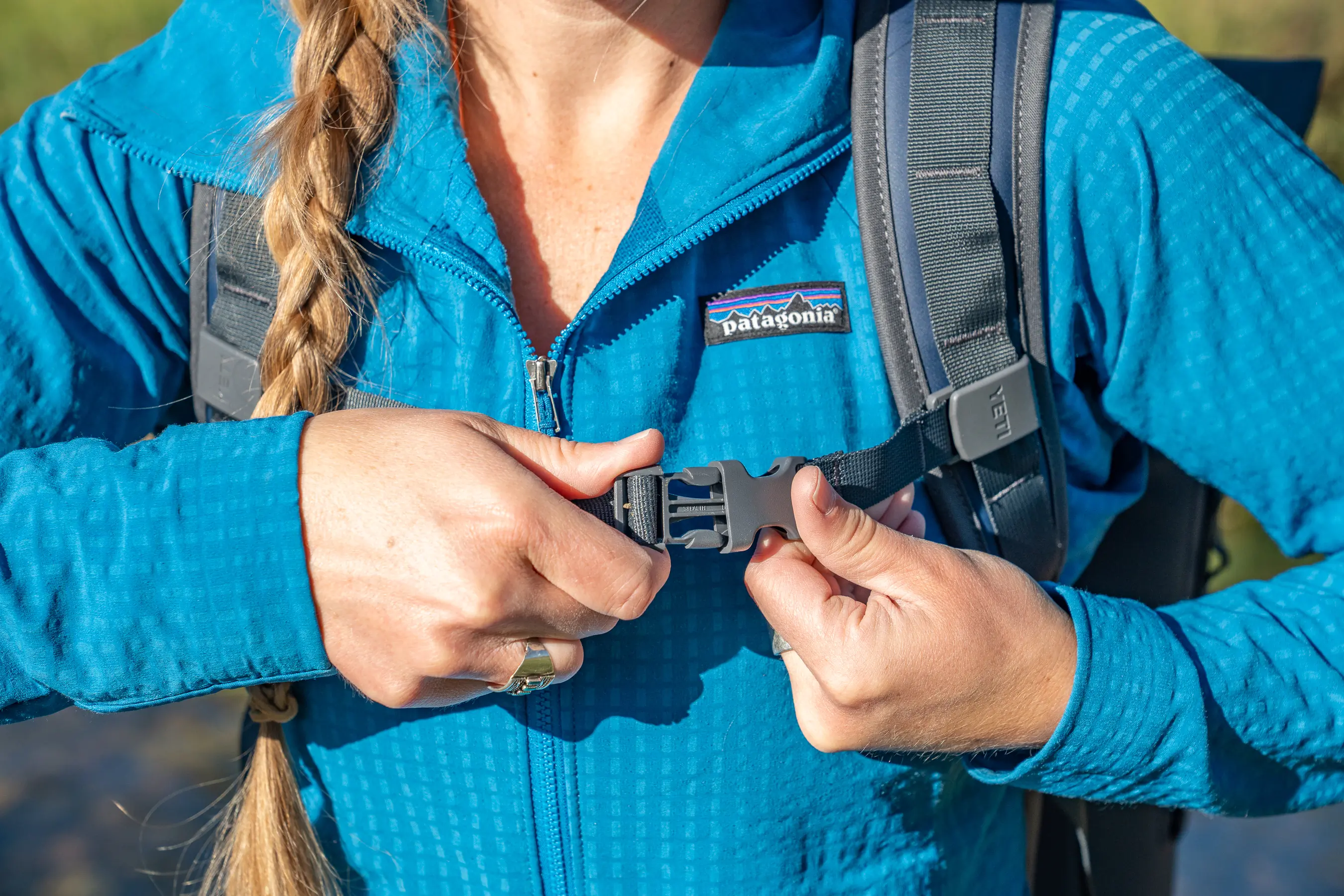



Backpack Cooler Straps & Handles
Backpack coolers all have shoulder straps, some have sternum straps and waist belts, but all perform and carry differently. When looking at a backpack cooler, it’s important to think about how you’ll use the pack. Longer hikes might benefit from padded and adjustable straps, whereas strap considerations are less critical for days at the beach or river floats that entail shorter walks. That being said, backpack coolers don’t all come in a range of sizes like more technical backpacks typically do. Straps won’t fit all torso lengths and body shapes the same.
The Eddie Bauer Recycled Bygone Backpack Cooler is much simpler with non-padded straps and no sternum strap or waistbelt, but the small size and lightweight don’t necessarily warrant padded straps for shorter days.
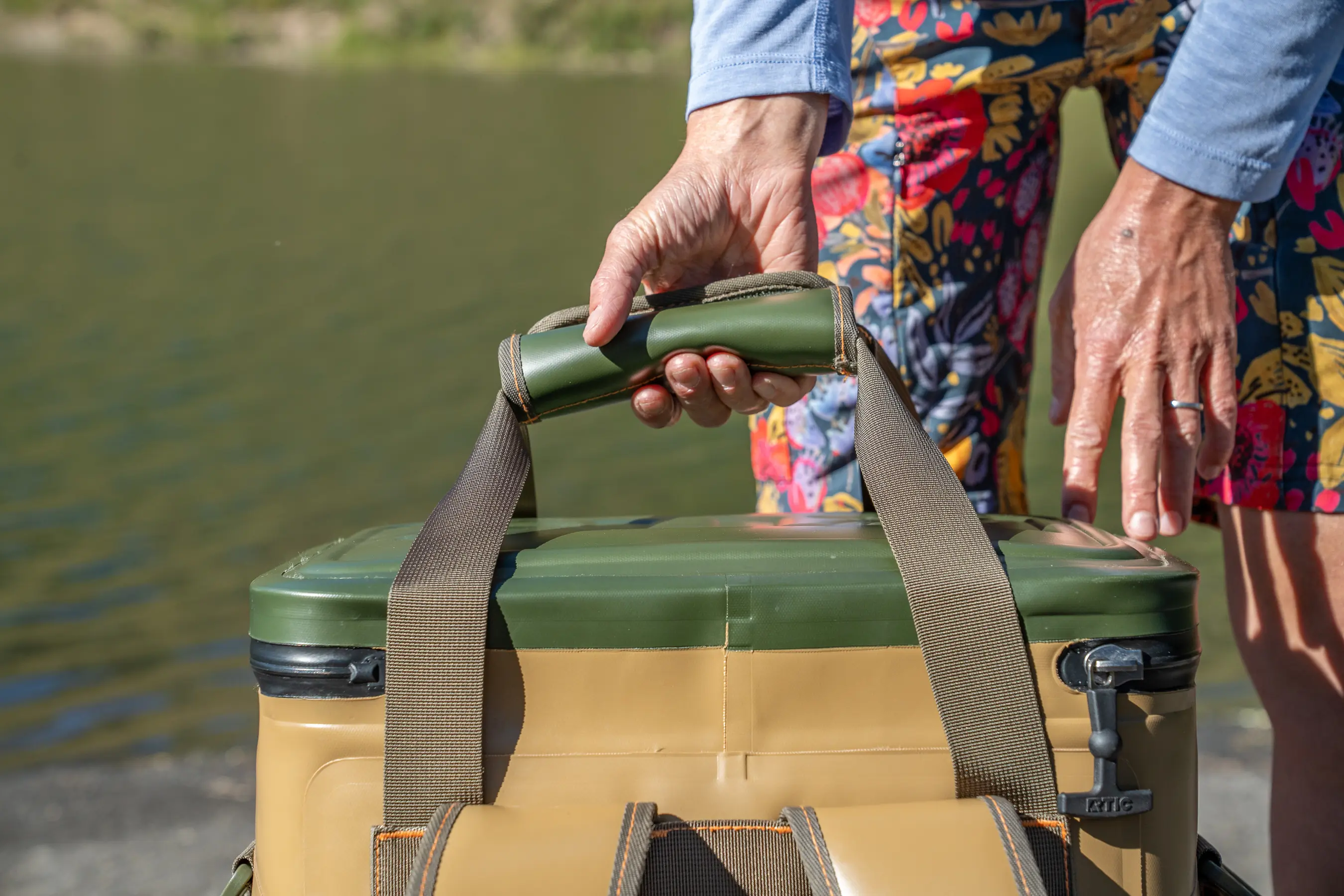



On the other hand, the Titan by Arctic Zone 24 Can Backpack Cooler falls in the middle of this range with lightly padded shoulder straps and an adjustable sternum strap, but no waist belt. The straps are comfortable when the cooler is loaded down for your hike to the lake or bike ride.
We appreciate grab handles on coolers that do not sport waterproof zippers. For instance, the Eddie Bauer Recycled Bygone Backpack Cooler can be easily kept upright with the top carry handle, so melted ice does not spill out the top.
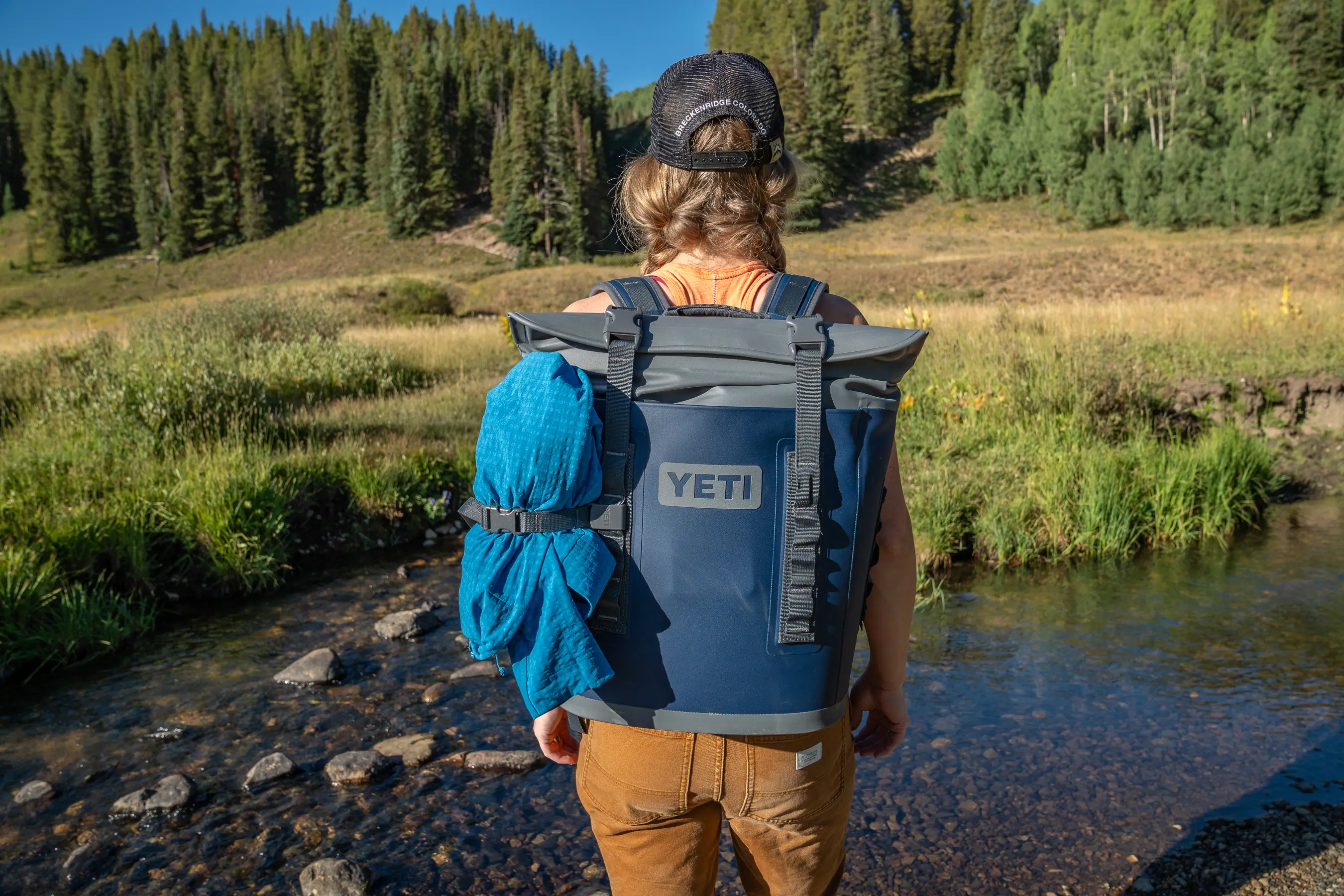



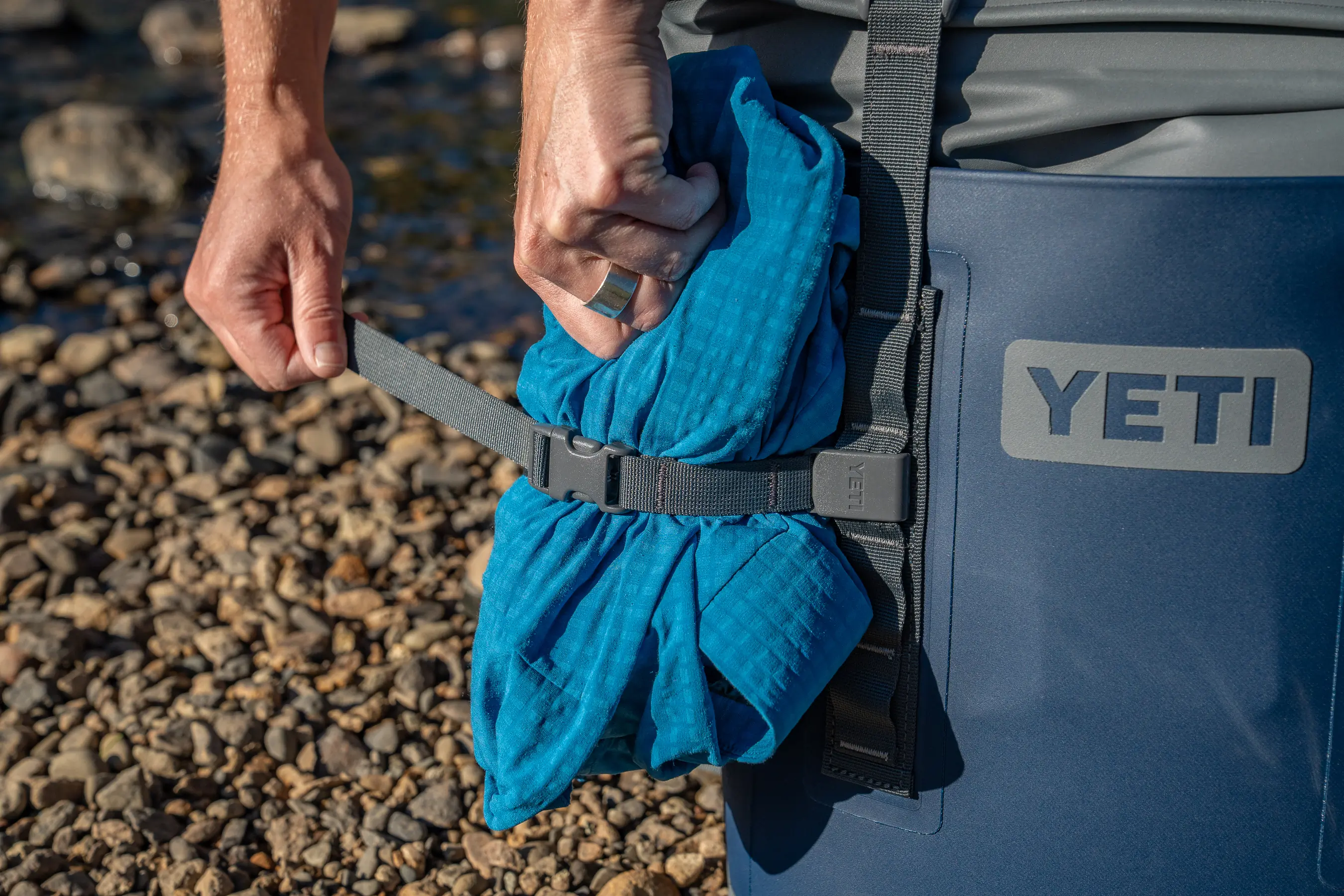



Attachment Points
Backpack coolers are designed with versatility in mind, so many of these bags are equipped with attachment points, such as hard clip points, daisy chains, webbing straps, and bungee cords, for carrying extra gear.
These attachment points allow you to secure additional gear like trekking poles, water bottles, or even a small tent. Integrated utility pockets keep essentials within easy reach, while modular attachments let you customize your setup for different adventures. With additions like waterproof covers, built-in bottle openers, and reflective logos these backpack coolers are pretty built out.
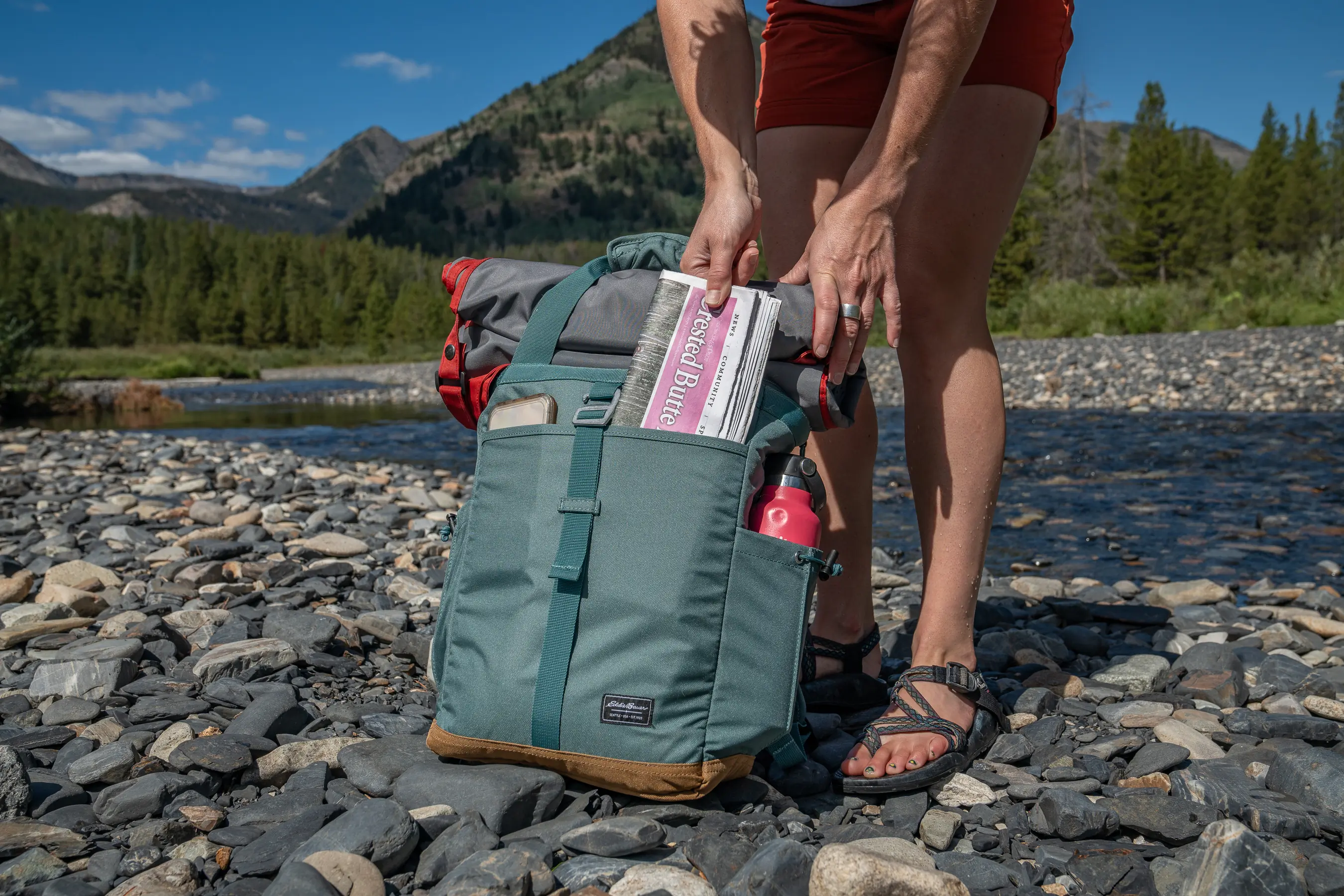



Backpack Cooler Weight
Backpack coolers are generally more compact and made of softer, lighter materials than hard coolers, so they weigh less. They usually have sturdy shoulder straps plus handles that are easy to grab, so the weight feels relatively easy to transport. A pack’s weight is higher when the capacity, durability, and insulation capability increase.
On of our favorite lighter backpack coolers weighs 635 grams or 1.4 pounds: the Eddie Bauer Recycled Bygone Backpack Cooler. Cooler bags can weigh as much as 3,402 grams or 7.5 pounds. On the beefier side, our favorites include the ICEMULE BOSS, which is 3,402 grams (7.5 pounds).
Be mindful that the heavier the fare in your pack, the more the load will weigh overall. If you’ve stuffed a 30L pack with canned beverages, the end weight will be quite high compared to veggies and dipping sauce. Be sure to test out shorter hikes with a full load in your pack, and to pull on appropriate supportive footwear like hiking boots, when needed.
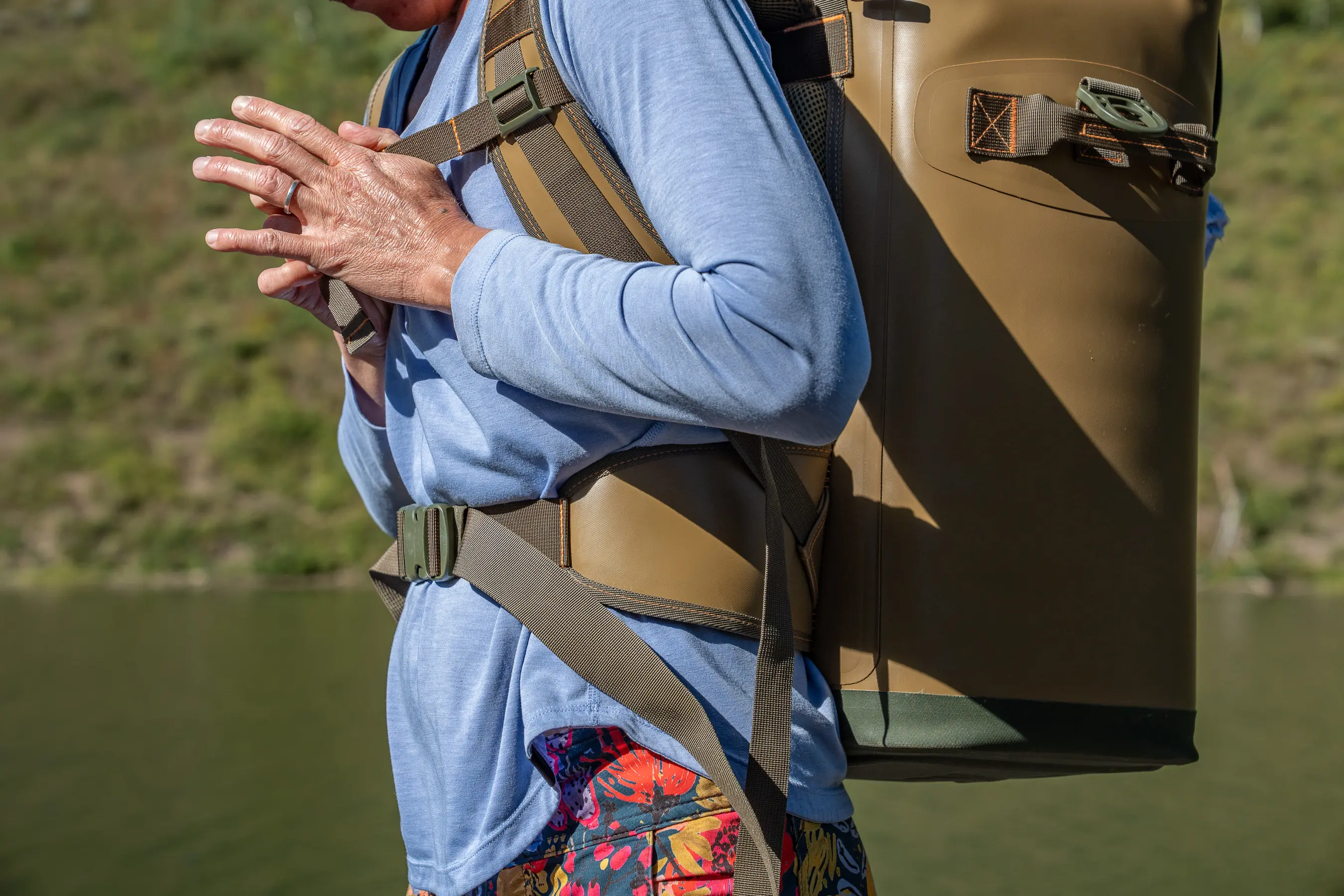



Hip Belts
Not all backpack coolers have an integrated hip belt and not all hip belts are created equal. But a padded, wide hip belt can help make a trip more comfortable and buoy up the cooler’s weight, especially if the pack is full of heavy ice and cans.
The ICEMULE BOSS has thick hip pads and a wide strap, plus the belt is adjustable. The REI Co-op Cool Trail Pack Cooler likewise has a padded, well-articulated hip belt that supports the pack weight.
Many backpack coolers offer a sternum strap. Though most designs, like the Hydro Flask Day Escape Soft Cooler Pack, have no weight-bearing hip belt even though the carrying capacity is moderate to high.
If you struggle with back, shoulder, or neck pain, consider a design with an integrated hip belt.
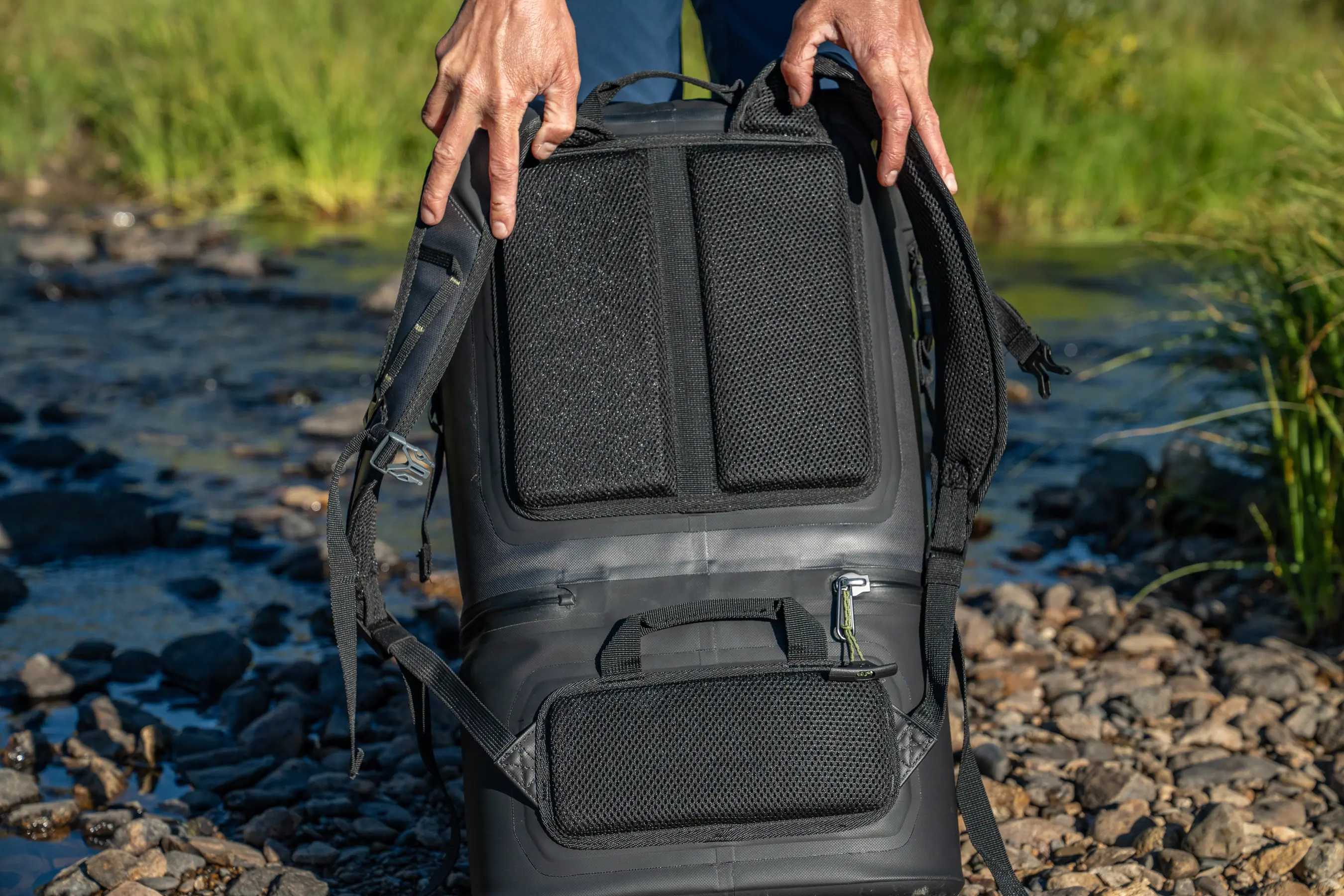



Materials
A pack’s materials include the exterior, insulation, interior liner, shoulder straps and pads, back panel, zippers, buckles, and attachment points. The quality of materials influences the waterproofness, durability, insulation value, and whether or not the face fabric produces condensation. The materials also determine comfort, breathability, or support.
Premium materials come at a higher price, but those products also typically last longer and withstand outdoor elements. To this point, the ICEMULE BOSS is made with Polar Layer XT Insulation, a proprietary closed-cell foam that’s 3 cm thick, with an air valve for insulation boosts.
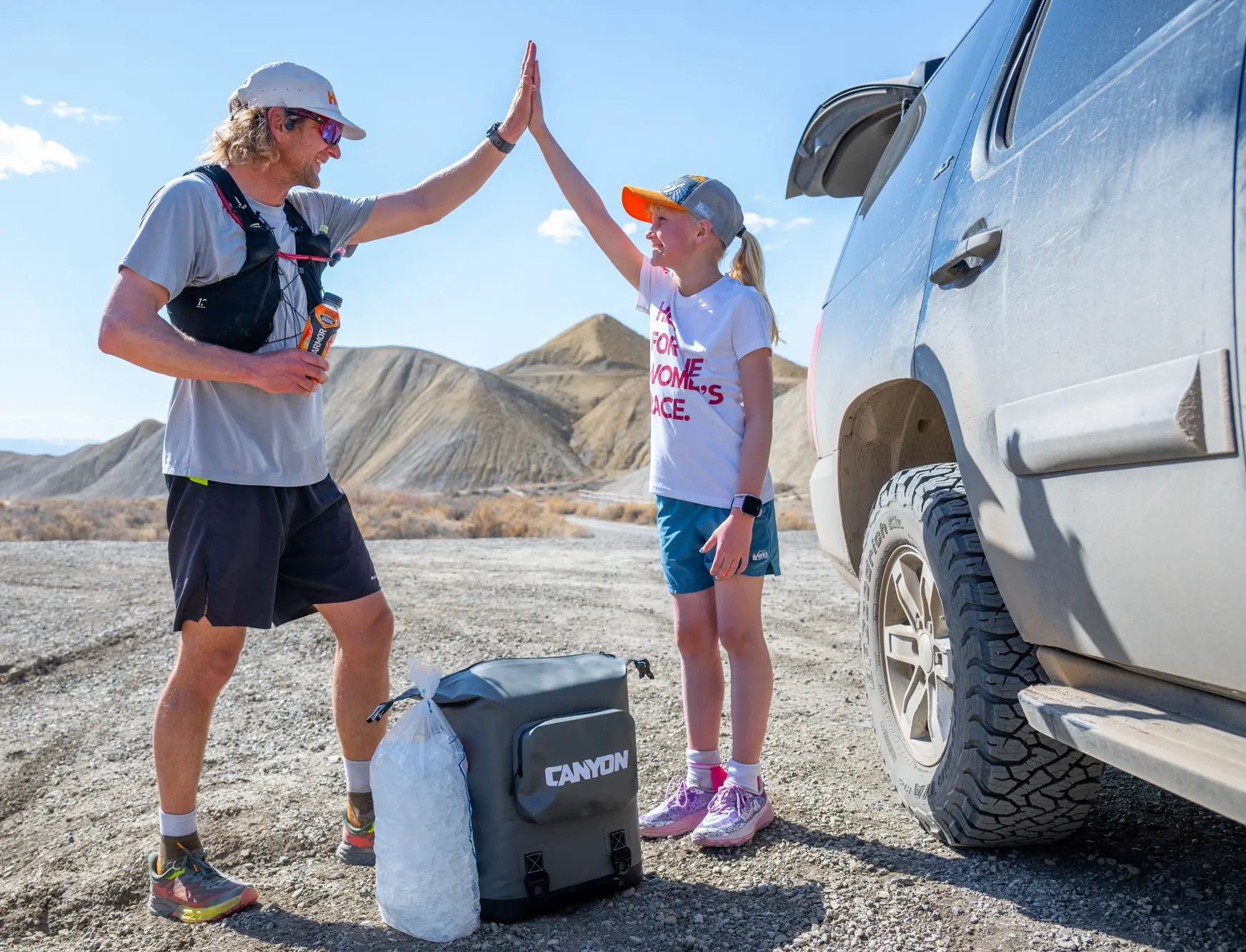



The strong exterior is waterproof 1,000-denier tarpaulin, a tenacious material used for crash pads. Other coolers we’ve tested have been made with layers of high-density superfoam plus a lightweight heat-reflective material around the exterior. But that material isn’t as strong.
Important specs to pay attention to are a waterproof lid zipper, welded seams, and whether the exterior fabric produces condensation. These aren’t nonnegotiable, but we don’t like getting caught off guard by an unexpected spill or puddle.
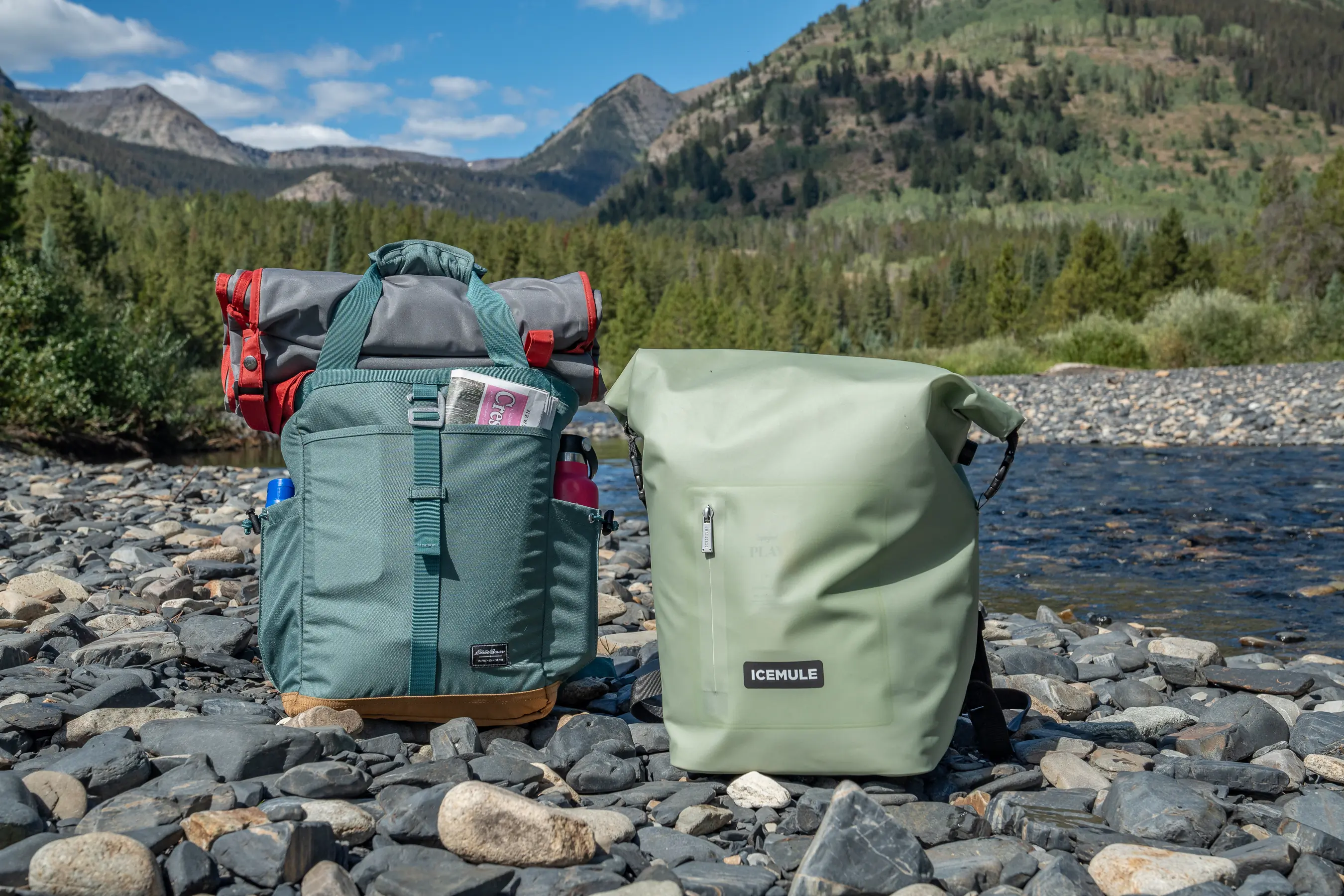



Comfort: Shape, Rigidity, Support
Simply put, backpack coolers are generally not as supportive, ergonomic, and comfortable as regular day packs or backpacking packs. But we found some are comfortable enough for day hikes, like the Hydro Flask Day Escape Soft Cooler Pack and ICEMULE BOSS.
We found that with narrower, longer backpack coolers, the contents were inevitably harder to reach. In contrast, a wider, shorter cooler with the same volume offers easier access — but that’s not compatible with the human torso. The solution is to be really strategic with how you pack.
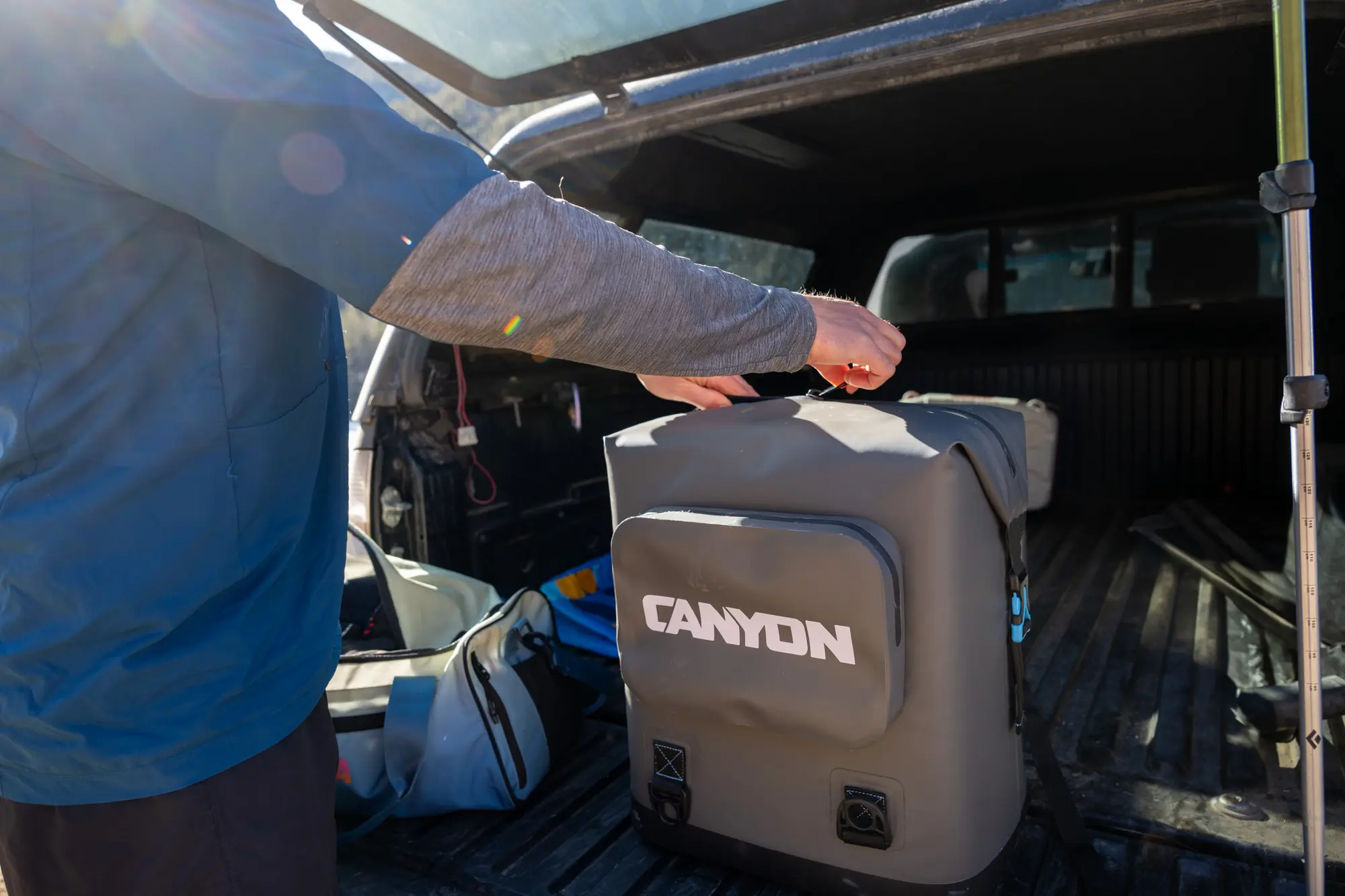



Backpack coolers have a range of firmness, and the firmest packs have more insulation, which increases ice retention. On the other hand, softer packs can feel more malleable and comfortable to wear. Also, some designs have a stiff back panel and others have padded mesh. Rigid designs have a stable base. But some lack a padded hip belt and pressed into the sacroiliac joint of testers, causing discomfort on longer treks.
The shoulder straps also influence overall comfort. Wider, stiffer, or broadly placed straps can limit range of motion or feel unpleasant. One of the most ergonomic strap sets is on the REI Co-op Cool Trail Pack Cooler. The design allowed us to have a full range of motion.
Hip and chest straps add stability to the load, so it doesn’t swing around. Hip belts offer comfort and evenly redistribute the weight off the shoulders.
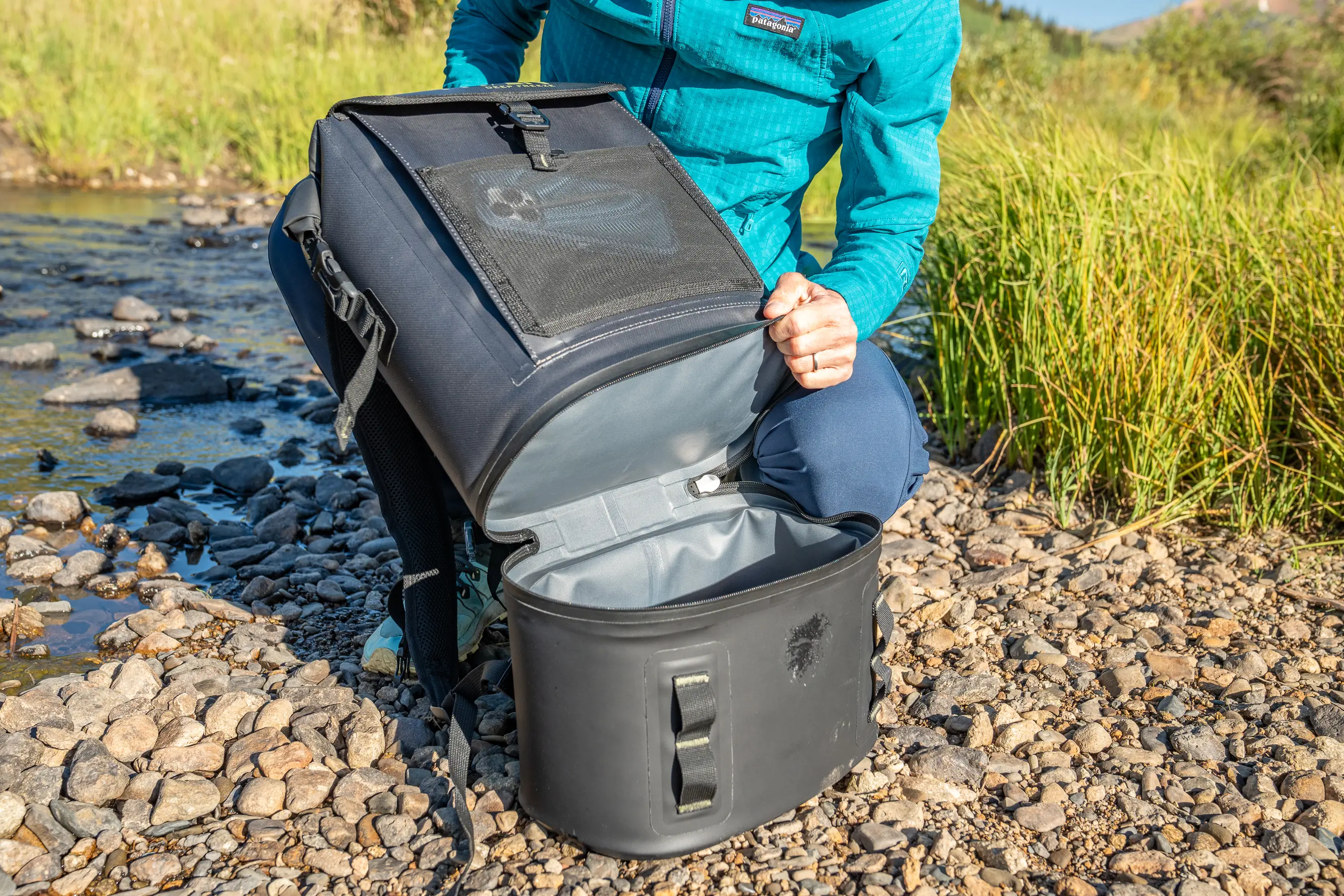



How to Properly Pack a Backpack Cooler
On the bottom, place frozen ice blocks, reusable ice packs, or cubed ice. This should take up close to 66% of the cooler, if possible. Next, put heavier pre-chilled or frozen items closest to the ice on the bottom and layer with another round of cubed ice. Keep layering in that order. Place lighter, more delicate items, such as sandwiches or fruits, on top. Use separate containers for easy access and to avoid squishing consumables. At the very top, add more cubed ice.
Fill any extra space with contents because air speeds up the ice melt. If needed, you could pack crumpled paper or small towels in there, too. Store smaller essentials like utensils, bottles, cans, or other items that don’t necessarily need to be cold in external pockets or dedicated compartments to keep them organized and within easy reach.
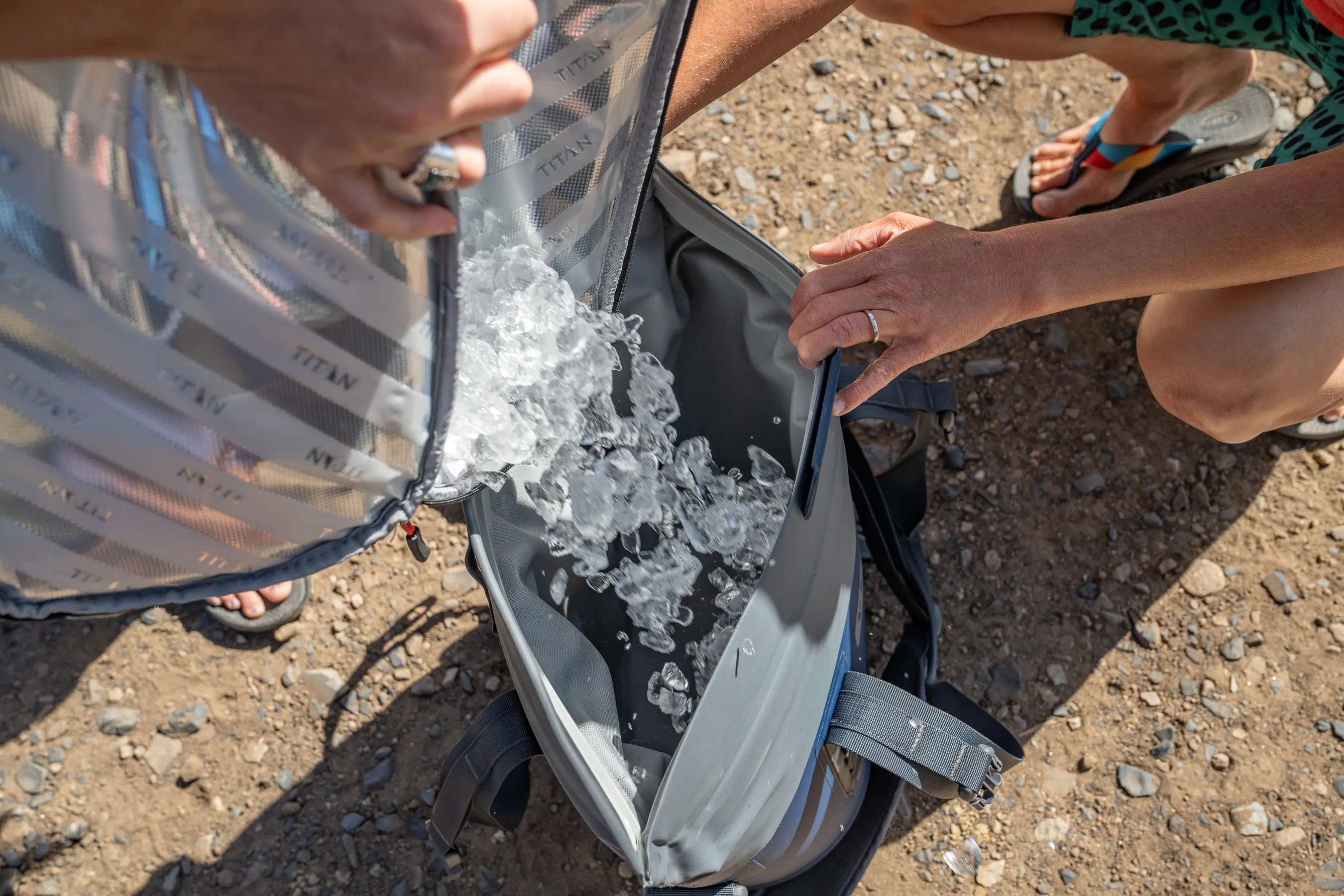



Ice Retention: In-House Controlled Test
In our controlled ice retention test, the REI Co-op Cool Trail Split Pack Cooler held ice for 46 hours while the Coleman XPAND 30-Can Soft Cooler Backpack hit 60 hours and the ICEMULE BOSS retained ice for 133 hours. That’s a large range, but the majority of our favorites preserved ice for a few days.
Most cooler packs preserved ice for 2.5 to 3 days. That includes the Hydro Flask Day Escape Soft Cooler Pack.
The REI Co-op Cool Trail Pack Cooler held ice for more than 3 days. The most expensive coolers in our guide retained their ice for 4 to 5.5 days.
Generally, the higher the price tag, the better the ice retention.
Our ice retention test was completed with controlled variables. Each cooler backpack was stationed indoors, shaded, at a steady 65 degrees F, with the same ratio and type of ice. The coolers were monitored and the ice status was recorded until every bit melted. When you use a cooler outside, many factors influence a pack’s ice retention, including the frequency of opening the cooler, direct sunlight, and ambient temperature.
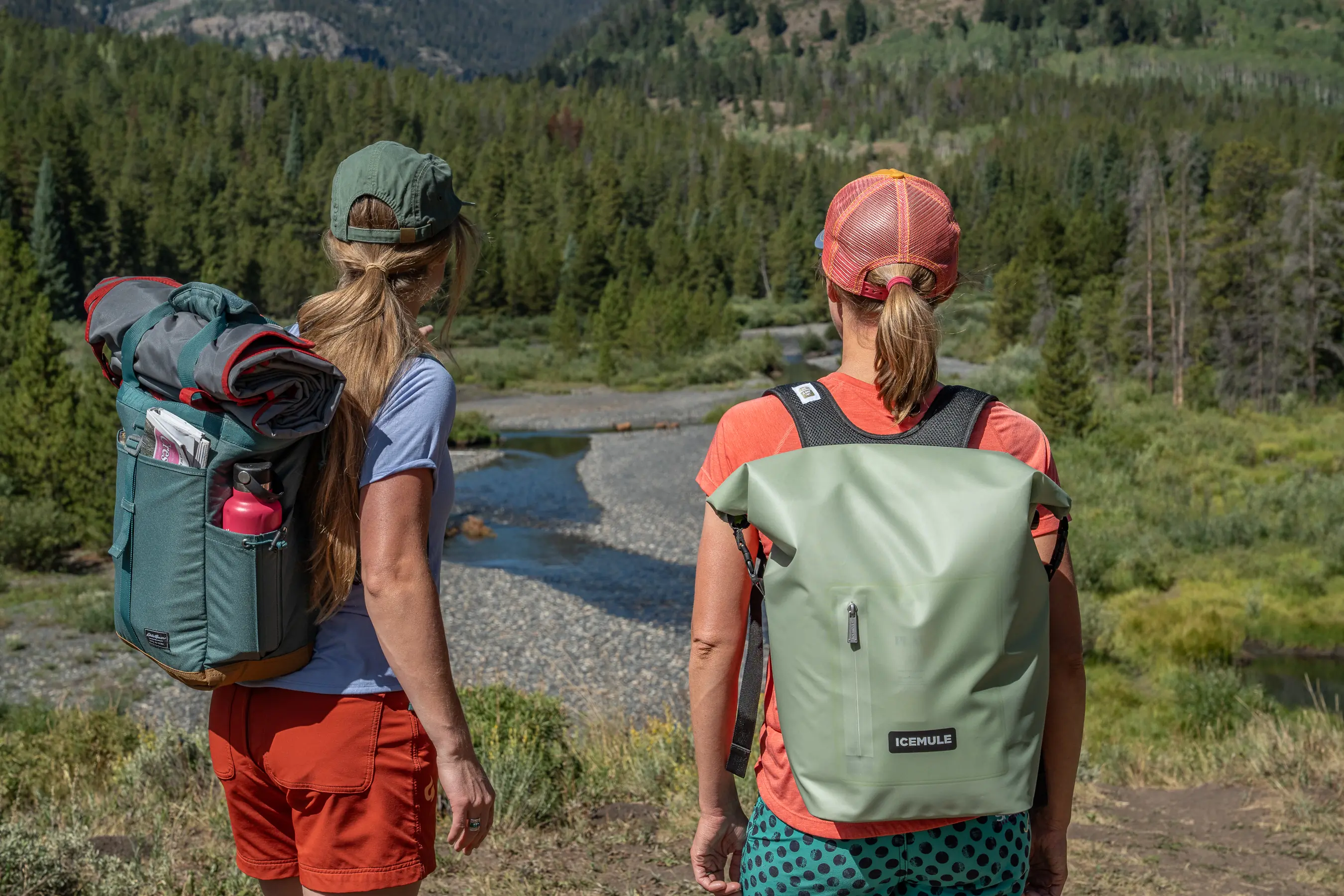



Ice Retention Test Results
- ICEMULE BOSS — 133 hours
- Engel Roll-Top High Performance Backpack Cooler — 96 hours
- YETI Hopper M12 Soft Backpack Cooler — 96 hours
- Cotopaxi Hielo 24L Cooler Backpack — 82 hours
- Igloo Trailmate — 81 hours
- Titan by Arctic Zone Deep Freeze Welded Backpack Cooler — 80 hours
- REI Co-op Cool Trail Pack Cooler — 77 hours
- ICEMULE Recycled Jaunt — 75 hours
- UA Sideline 25-Can Cooler — 68 Hours
- Coleman XPAND 30-Can Soft Cooler Backpack — 60 hours
- Hydro Flask Day Escape Soft Cooler Pack — 60 hours
- Titan by Arctic Zone 24 Can Backpack Cooler — 48 hours
- Eddie Bauer Recycled Bygone Backpack Cooler — 48 hours
- REI Co-op Cool Trail Split Pack Cooler — 46 hours
In various conditions, the backpack coolers in this guide provide cooling power that serves a range of recreational needs.
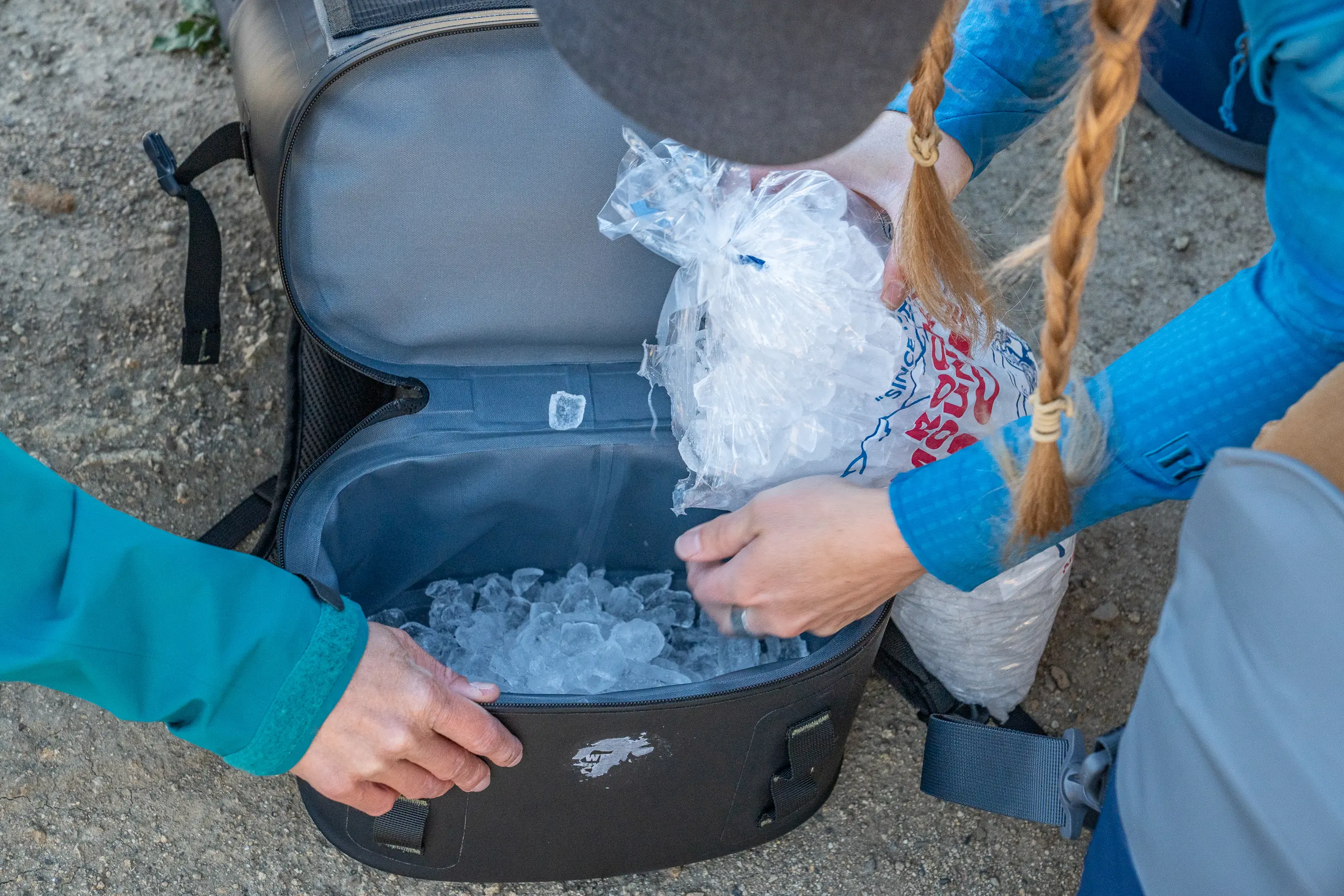



How to Clean a Backpack Cooler
Keeping your backpack cooler clean is essential for maintaining its performance and extending its lifespan. Here’s a simple guide:
- Empty and Rinse: Start by removing all contents and emptying any melted ice or liquid. Rinse the interior with cold water to remove loose debris.
- Wash With Mild Soap: Use a mild detergent mixed with warm water and a soft sponge or cloth to gently scrub the interior and exterior. Avoid harsh chemicals that can damage the materials.
- Pay Attention to Stains: For stubborn stains, use a mixture of baking soda and water to gently scrub the affected areas. Rinse thoroughly to ensure all residues are removed.
- Dry Thoroughly: After cleaning, wipe the interior and exterior down with a dry cloth. Leave the cooler open in a well-ventilated area to air dry completely, preventing mold and odors.
- Clean Accessories: Don’t forget to wash any detachable parts, like removable liners or straps, according to the manufacturer’s instructions.
Regular cleaning will keep your cooler fresh, free of stains and odors, and keep it in peak condition.
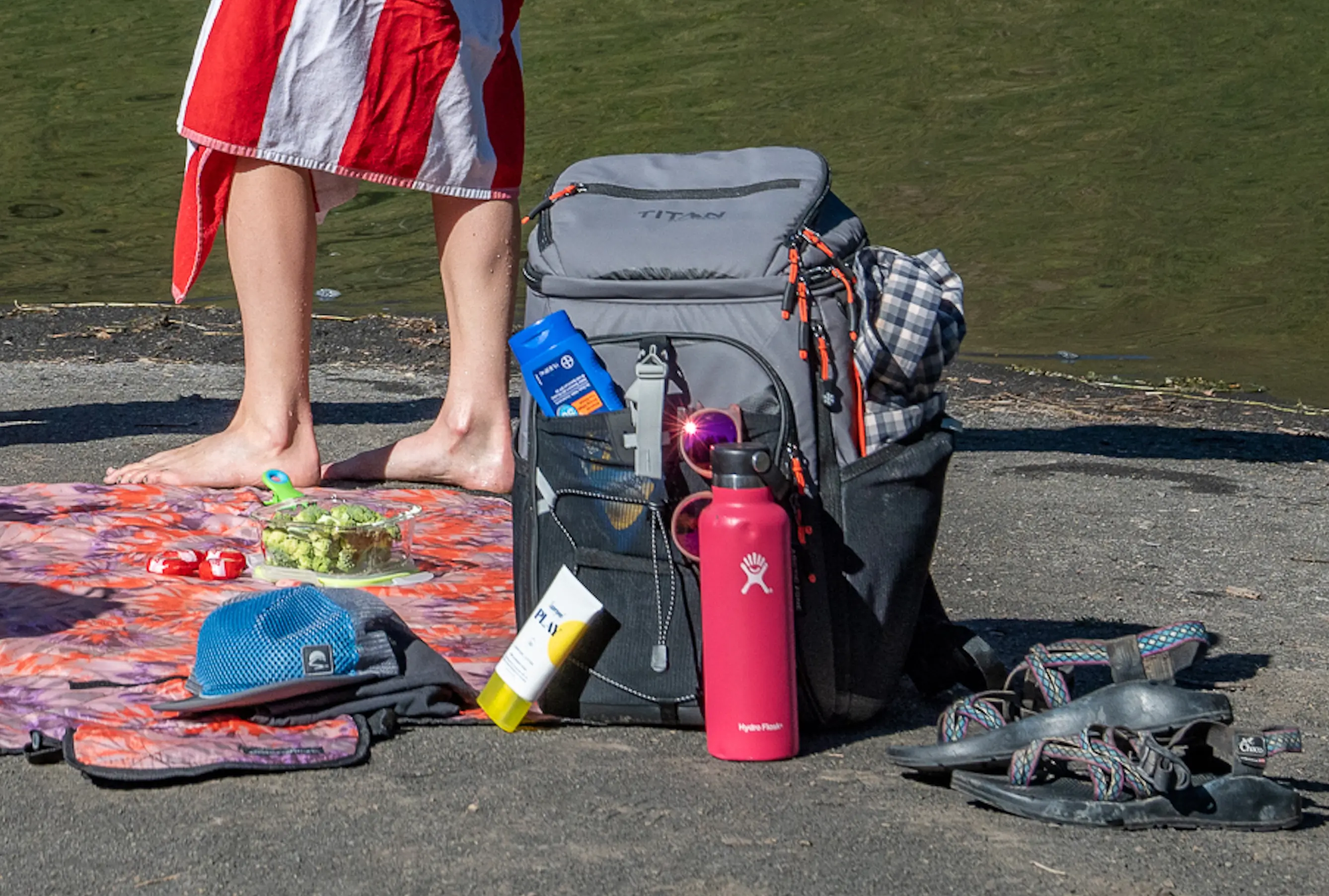



Price & Value
Our highlighted backpack coolers range from as low as $45 to as high as $359. That’s a big gap with lots of factors at play.
Budget: $100 or Less Backpack Coolers
Backpack coolers under $100 may not retain ice as well as more expensive counterparts. Or, they might be made of less durable materials. They are generally more compact and compromise certain design details like ample pocket options or extra grab handles. For example, the REI Co-op Cool Trail Pack Cooler ($100) does not have a waterproof zipper on the lid.
The face fabric of some of these lower-cost pack coolers can create condensation. And some aren’t the most ergonomic or offer the greatest lumbar or back support. So, they aren’t our top choice for hiking those longer durations.
However, these are great options for short trips, picnics, and anyone on a budget. In this price range, check out the REI Co-op Cool Trail Pack Cooler ($100) or the Eddie Bauer Recycled Bygone Backpack Cooler ($70).


Mid-Tier
Mid-range coolers are a step below the high-cost cooler backpacks. These designs offer waterproof options, great features, and good ice retention below $300.
In this price range, you’ll find the ICEMULE Recycled Jaunt ($170) and Hydro Flask Day Escape Soft Cooler Pack ($200).
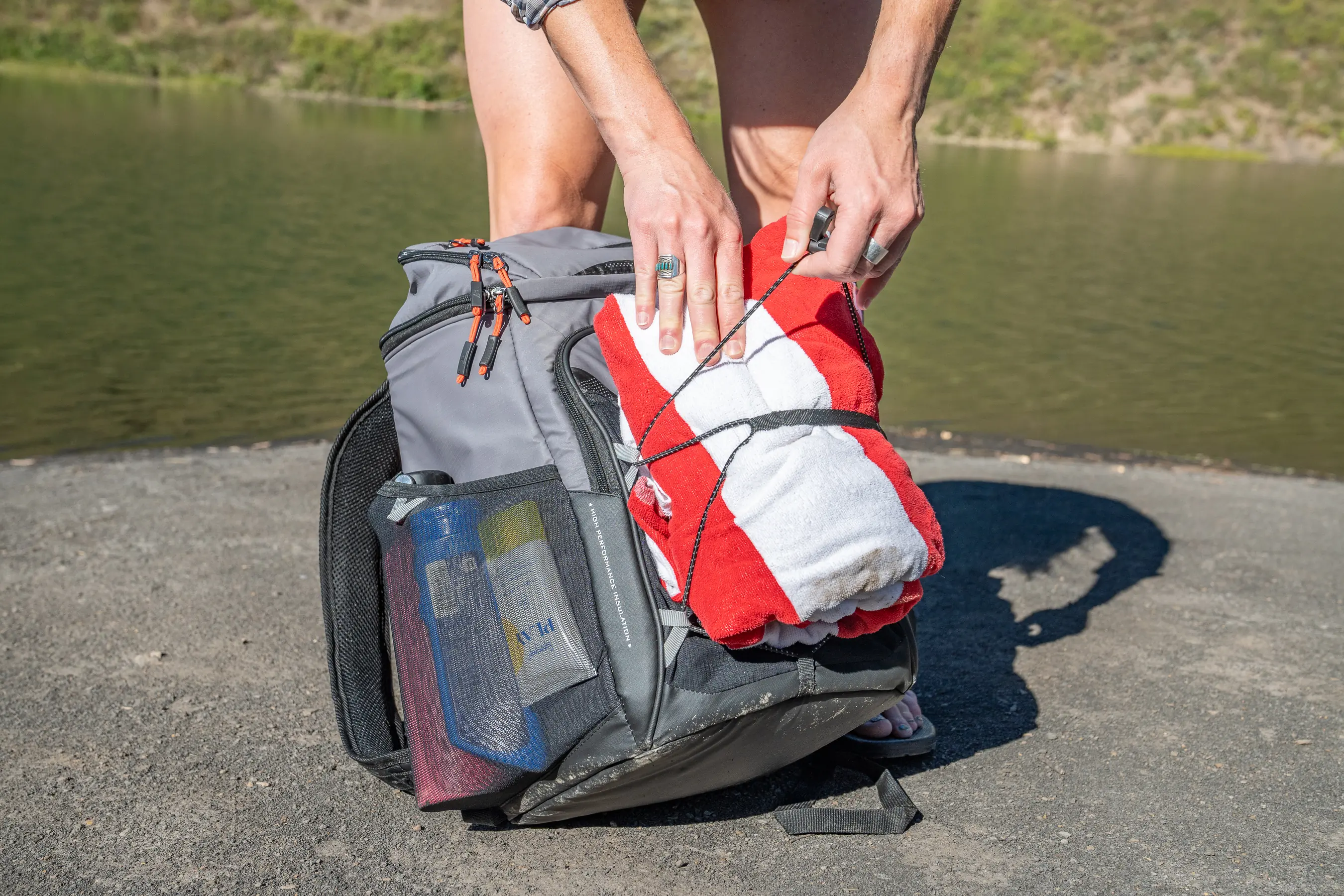



Premium: Higher Cost Backpack Coolers
The priciest coolers, $300 and above, retain ice longer. They are made from durable materials, and they go above and beyond with features. These premium coolers are created with materials that are puncture-proof, waterproof, or water-resistant. That way, they can be trusted on a whitewater rafting trip, for instance.
For instance, the ICEMULE BOSS ($350) falls in this category and has MuleSkin 1,000-denier fabric. And the YETI Hopper M12 Backpack Soft Cooler is made with high-density fabric.
These top-tier coolers also have larger capacities and won’t leak through the top closure. The most expensive coolers tend to be more rigid and supportive. However, cost does not necessarily reflect a pack’s overall comfort, which is influenced by the back panel and shoulder straps.


Frequently Asked Questions
Fill the cooler approximately 66% with a mix of frozen ice blocks or reusable ice packs and cubed ice. Pack the rest with your food and beverages, which should all be prefrozen or prechilled.
More specifically, layer those contents. Put the frozen blocks and contents on the bottommost section and then sprinkle on a layer of cubed ice. Next, add the prechilled food and drinks. At the very top, add more cubed ice.
Fill any extra space with contents, because air speeds up the ice melt. If needed, you could pack crumpled paper or small towels in there too.
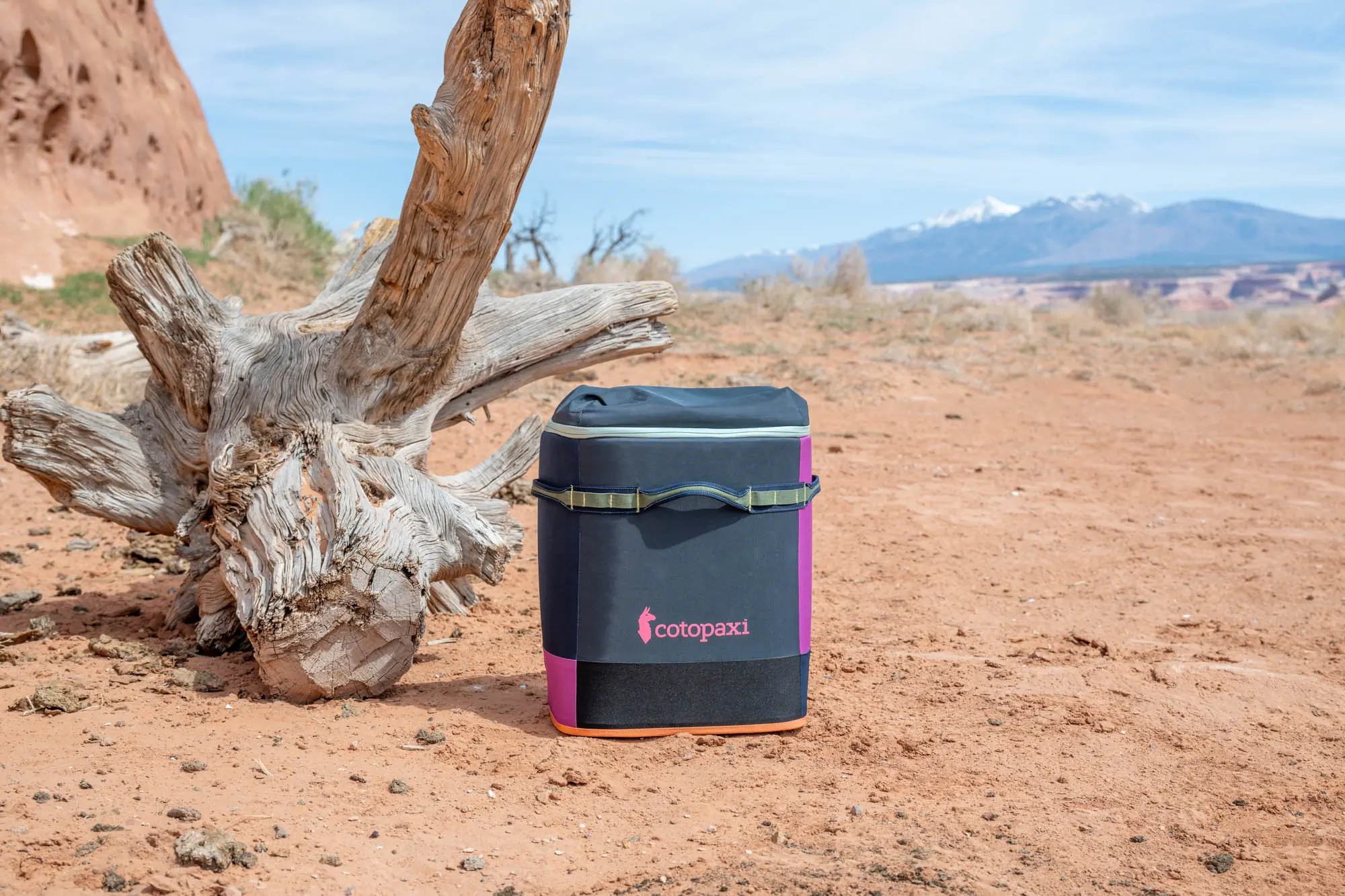



There are oodles of backpack coolers out there now. Based on our testing, the products listed in our guide are all very well-made options that don’t leak, offer good or excellent ice retention, and have a variety of features to support your adventures. Each design prioritizes its own unique components. For instance, some are completely streamlined with zero pockets while others are loaded with spots for dry cargo. Other designs have extra accessories like bottle openers.
The best backpack cooler is the one that fits your intended use and needs including the trip length, cargo quantity, and price.
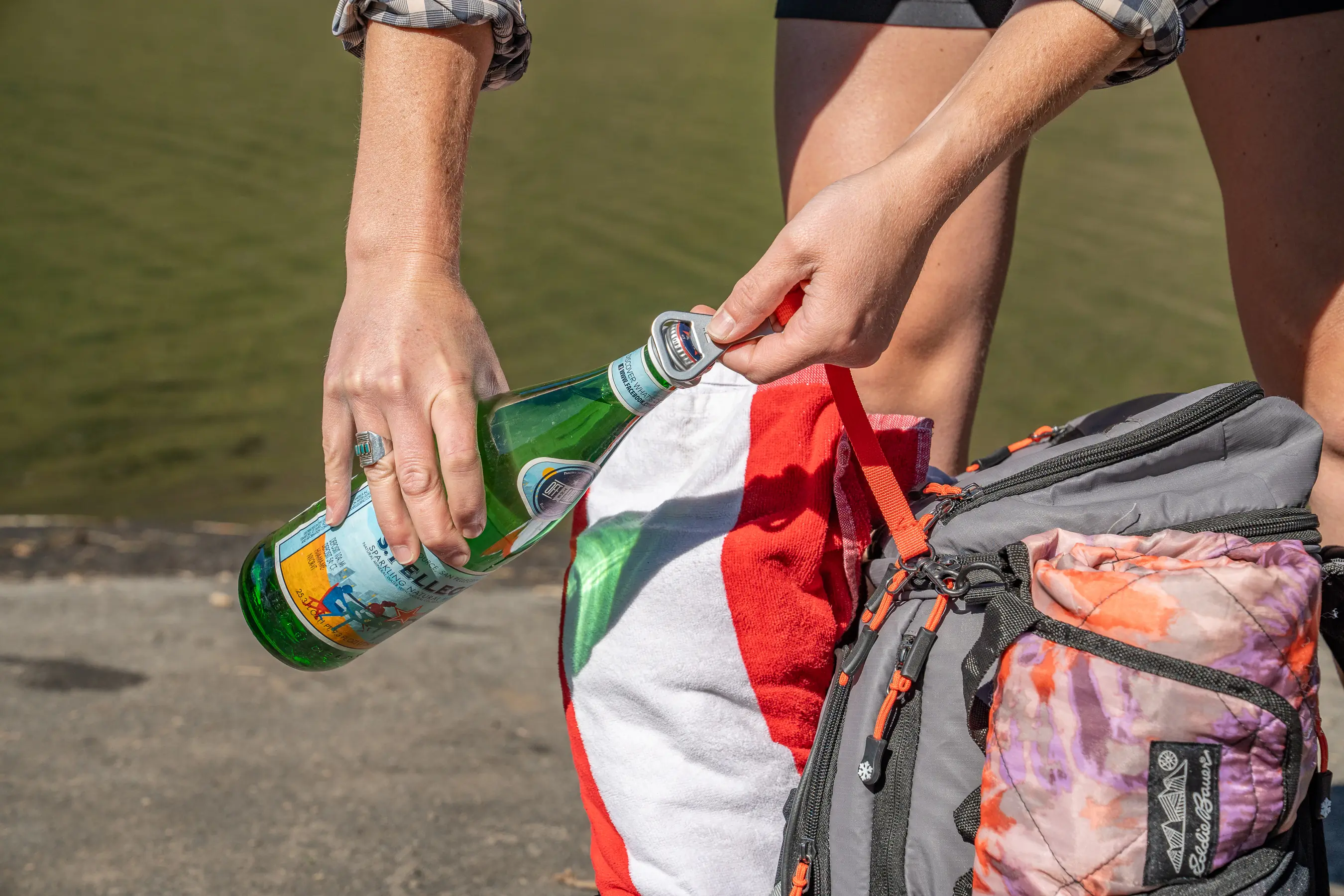



Some coolers retain ice better than others, which is reflected in price tags. In our side-by-side ice retention test, the backpack cooler that retained ice the longest was the ICEMULE BOSS. The design held ice for about 5.5 days in a shaded indoor environment at 65 degrees Fahrenheit.
In daily adventures, melt speed slightly fluctuates based on the frequency of opening the cooler, how long it’s open, ambient heat, and direct sunlight. A bunch of other variables can influence ice retention too, including the type and quantity of ice, extra space in the compartment (which decreases effectiveness), and if the cooler was prechilled.
For most backpack coolers, dry ice will burn the interior materials. Instead, you should use freshly frozen cubed ice, ice blocks, or reusable ice packs.


For the longest-lasting ice retention and cooling capability, aim to use a 2-to-1 ratio of ice to contents. You can quickly prechill your cooler with a sacrificial bag of ice a few hours before loading it up, especially if the cooler is stored in a hot place. Or, bring the cooler inside a cool room to lower the temperature the night before use.
The type of ice makes a difference. Block ice and fresh cubed ice from freezers are denser than chipped ice or crushed ice from ice machines. If you get super strategic, you can use a mix of block ice (which melts slower) and cubed ice (which cools down the container faster).
As the ice melts, it’s ideal to retain the ice water, which helps the other ice stay cold. Limit your access to the cooler, because opening it up releases the cold air. When you stop or take breaks, set the pack cooler in the shade or cover it with a towel or jacket to mitigate direct sunlight.
At their simplest, backpack coolers are essentially soft-sided coolers with shoulder straps. If your adventure is further than the car to a picnic table, or you have other items in tow from bags to kids to a dog leash, then the shoulder straps are an awesome option for hands-free carrying.
Even if your trip is short, a backpack cooler will reduce trips back and forth, because your hands are free to do other tasks with the cooler on your back. Also, heavier loads can be easier to carry on one’s back than with a hand strap.
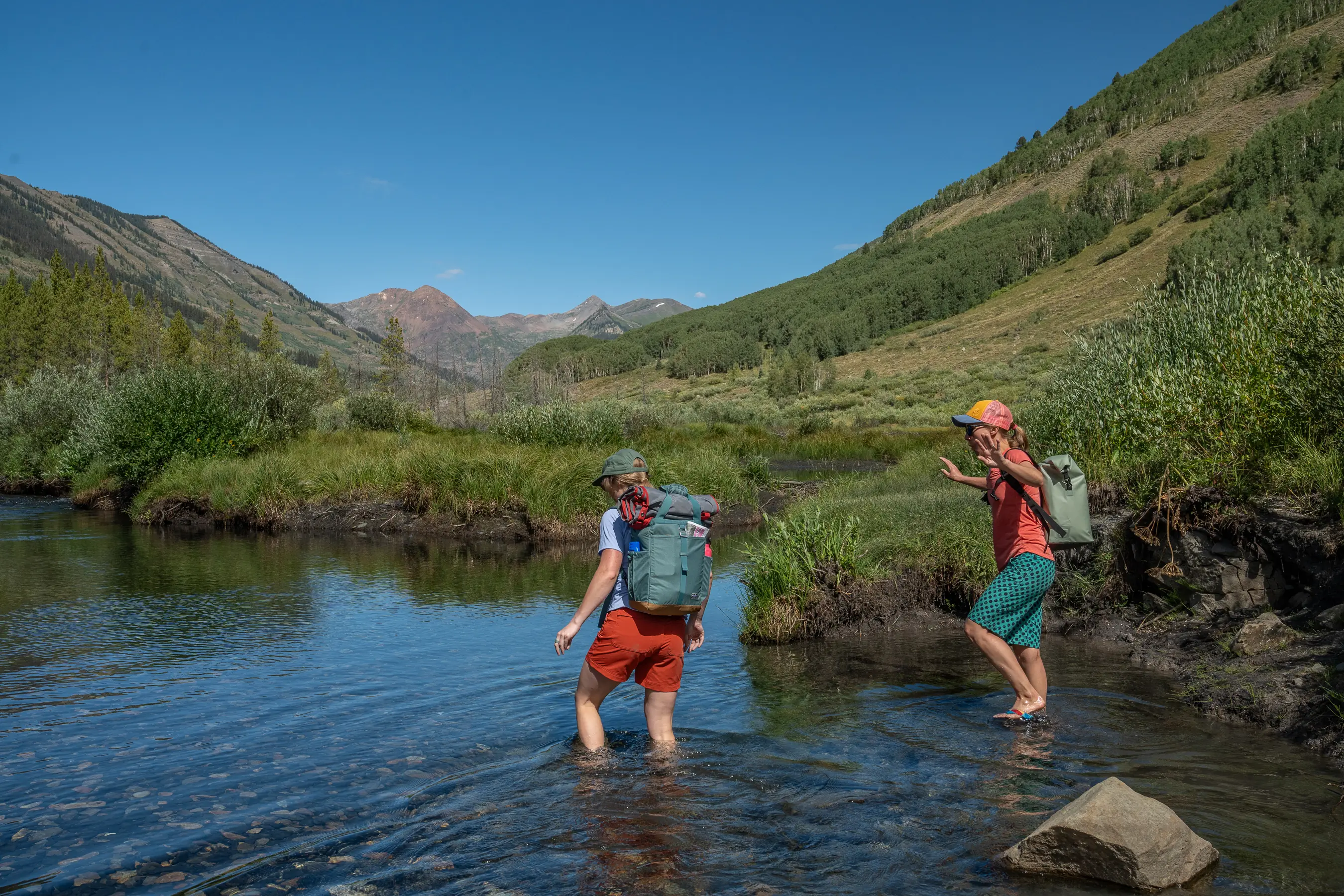



When traveling with a backpack cooler, it’s essential to check the policies of your airline. Most airlines permit a small backpack cooler as a personal item, but you should verify the specific dimensions and weight limits. Make sure your backpack cooler complies with the size restrictions and can fit comfortably under the seat in front of you or in the overhead bin.
If your cooler contains liquids or gels, remember that they must adhere to the TSA’s liquid rules for carry-on luggage, with each container being 3.4 ounces (100 mL) or less and all containers fitting into a single quart-sized bag. So if you have it stocked, be prepared for separate screening of any food or drink items at security checkpoints.
Additionally, if you’re carrying ice packs, ensure they are fully frozen to avoid issues with liquids, and check airline guidelines regarding ice packs in advance. Alternatively, you could check your backpack cooler, but you might want to put it inside a duffle to make sure it doesn’t get damaged.
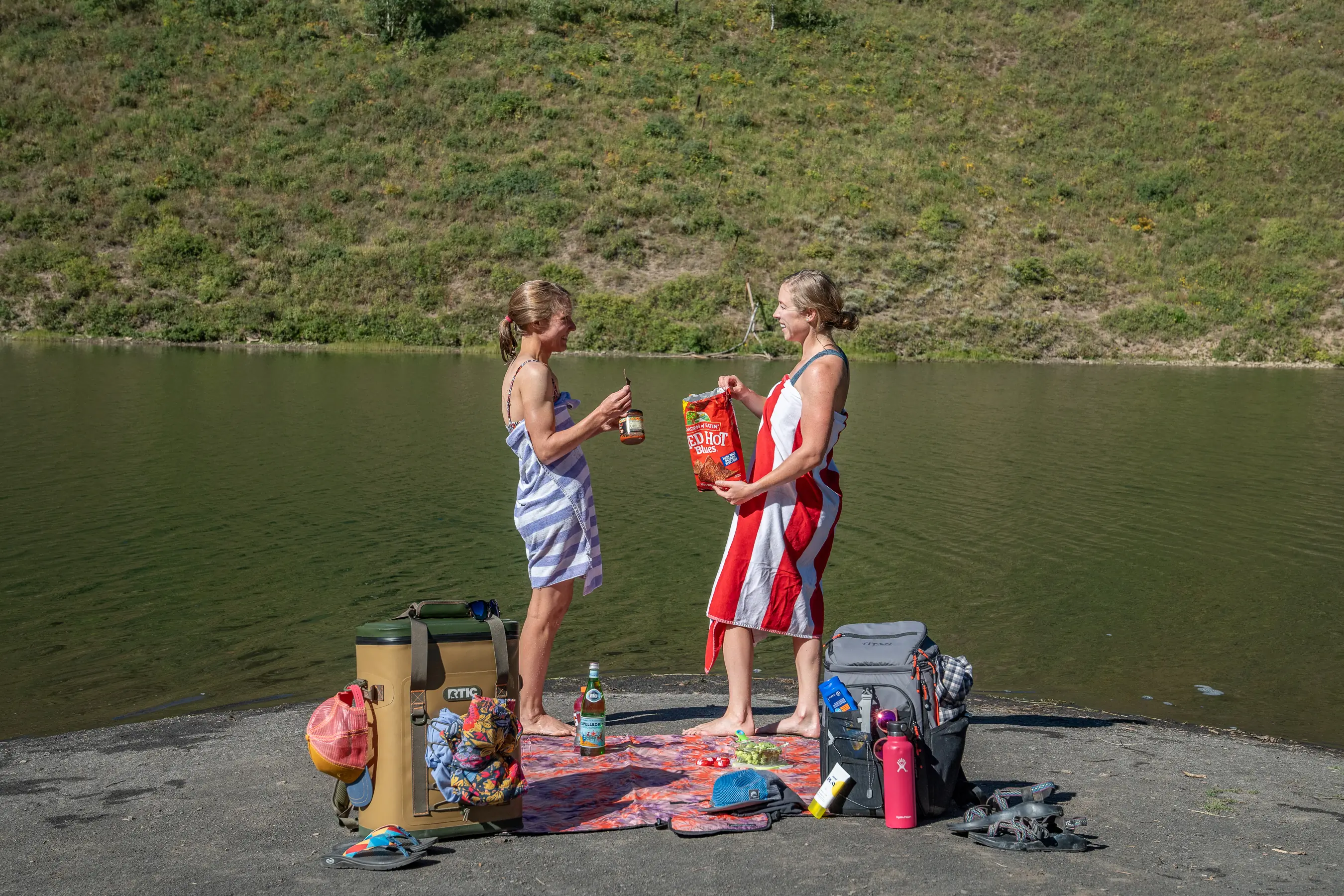



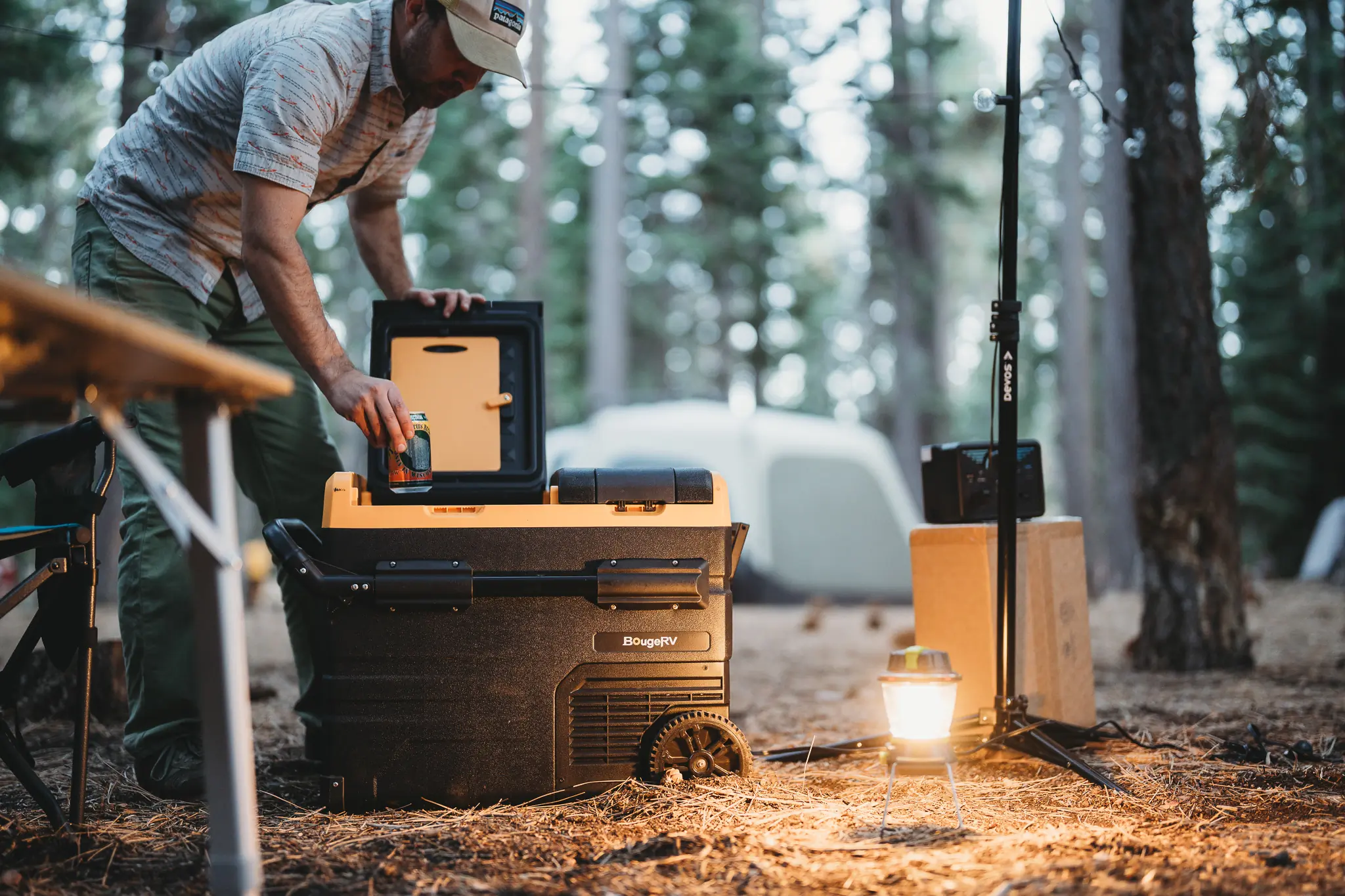

The Best Electric Coolers of 2025-2026
We tested the best electric coolers with options for every budget and need. Top picks include Dometic, Travoca, Engel, and more!
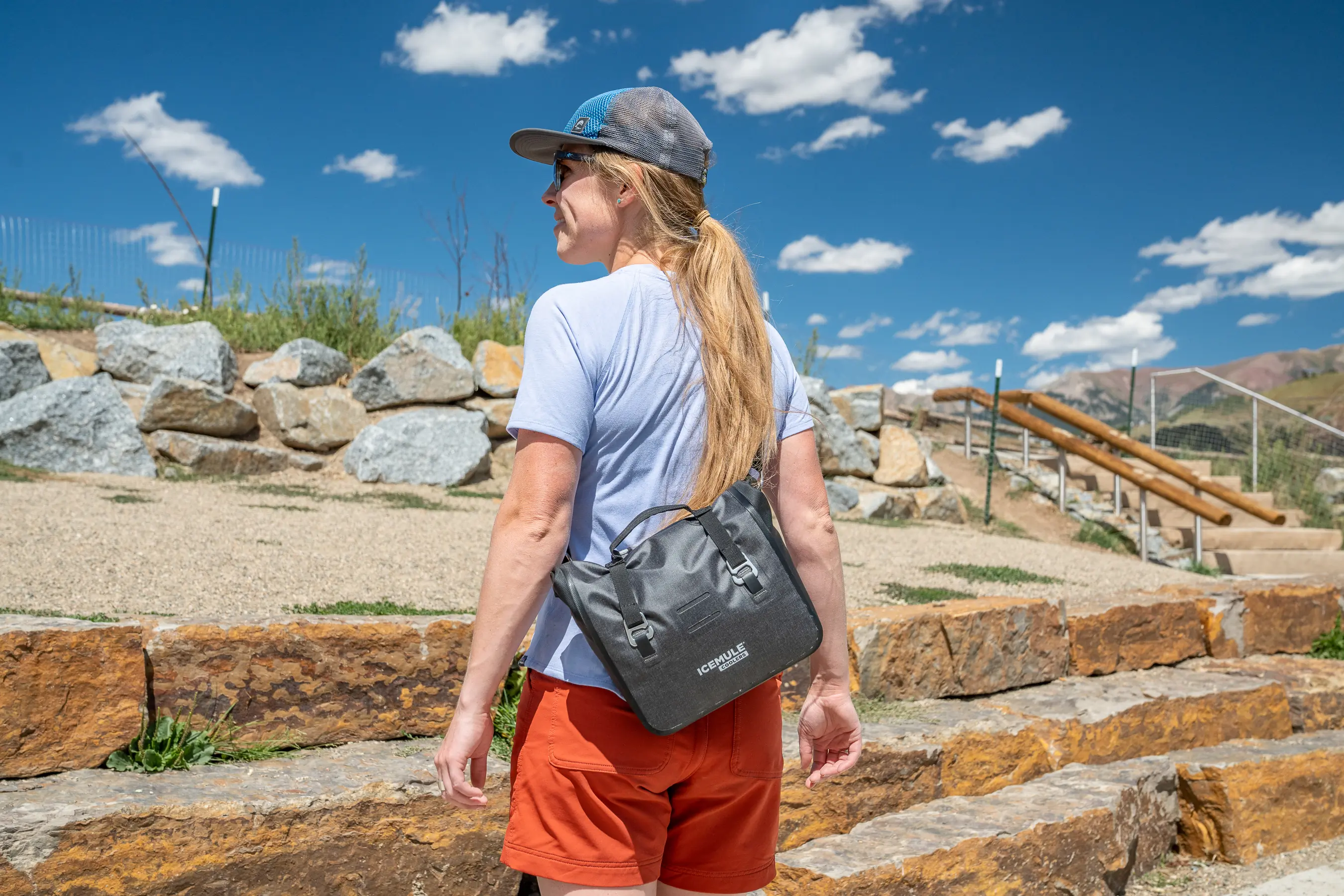

The Best Soft Coolers of 2025
We tested the best soft coolers with styles for every budget and adventure. Top picks include YETI, RTIC, Hydro Flask, and more.
